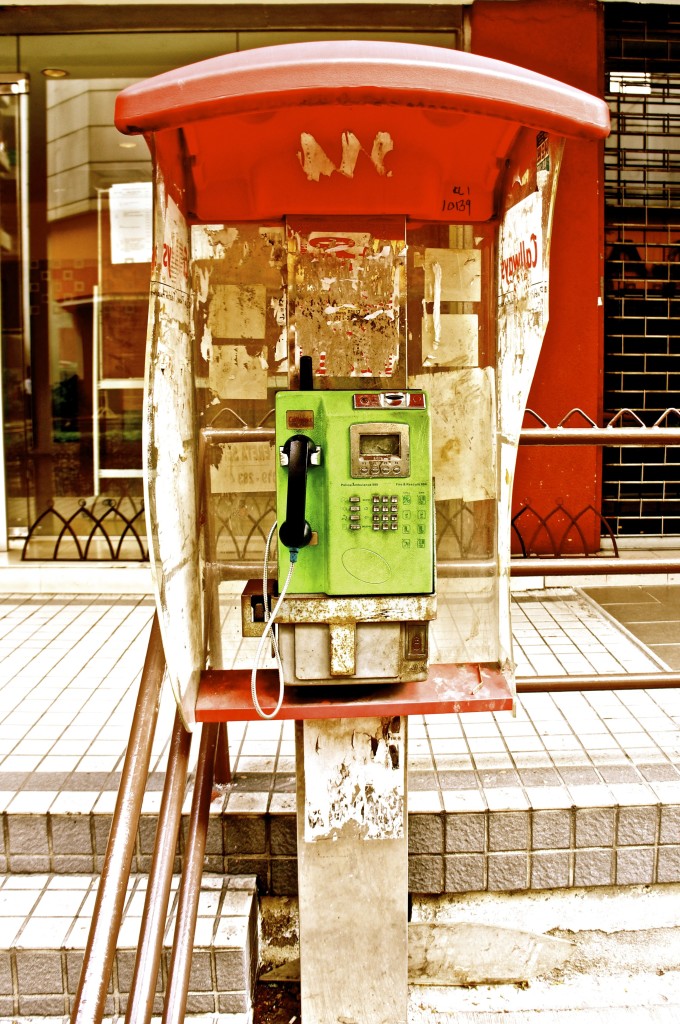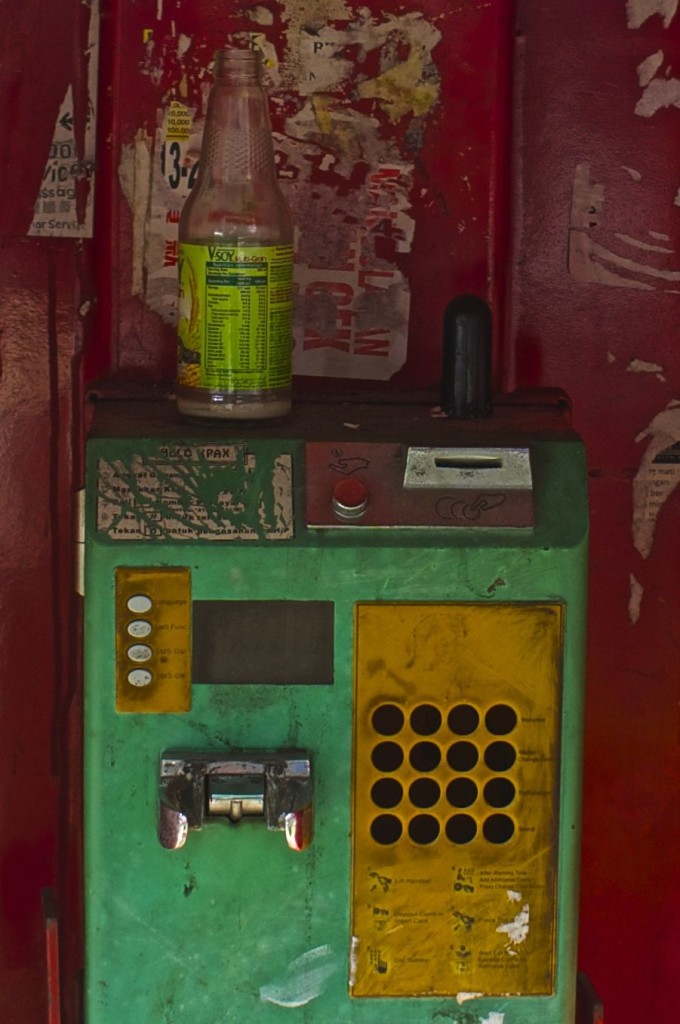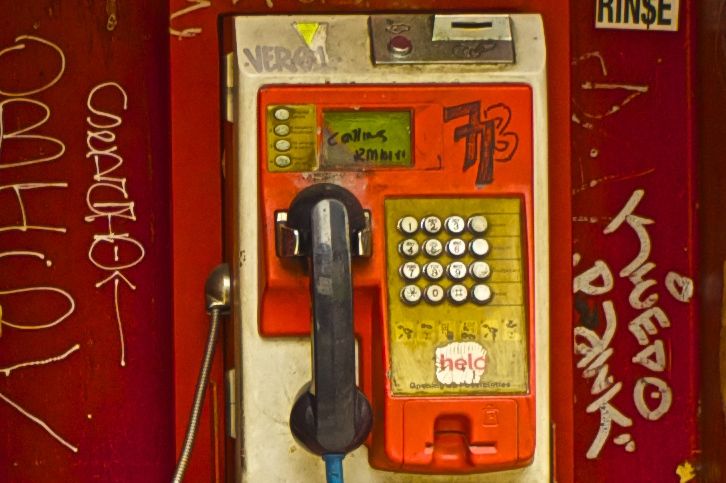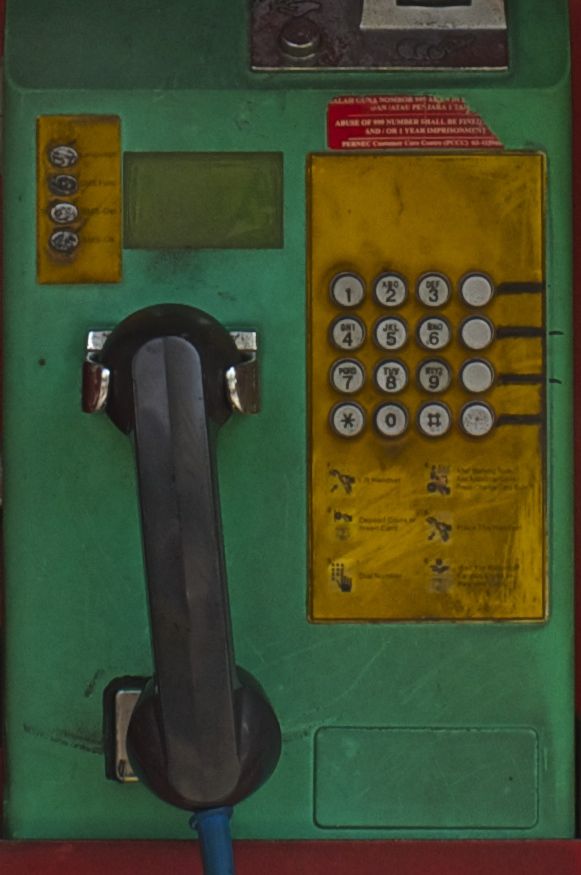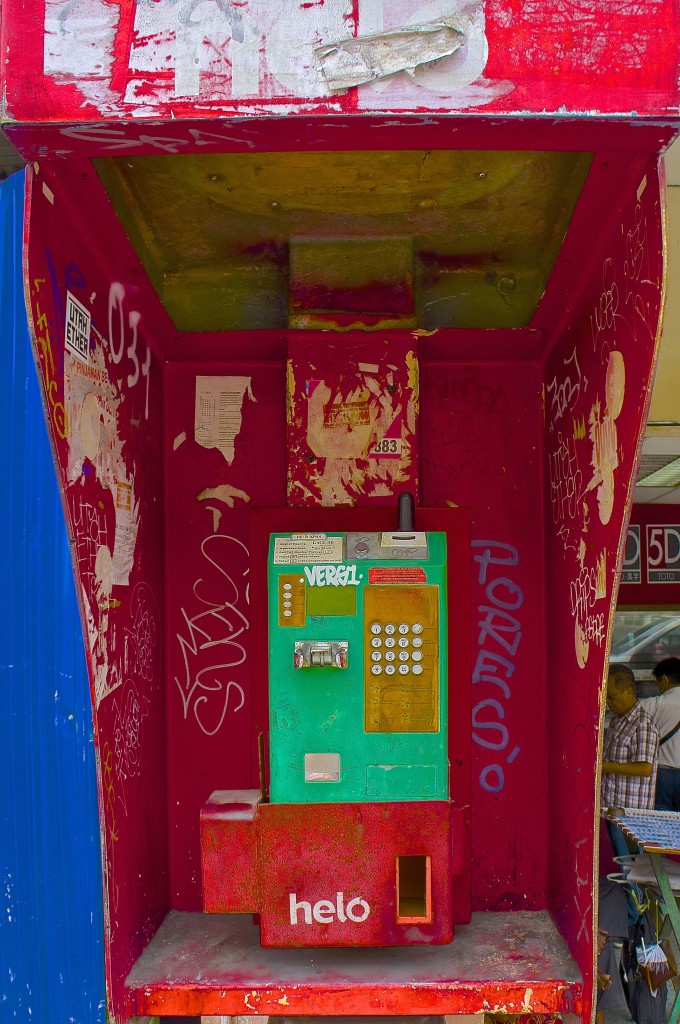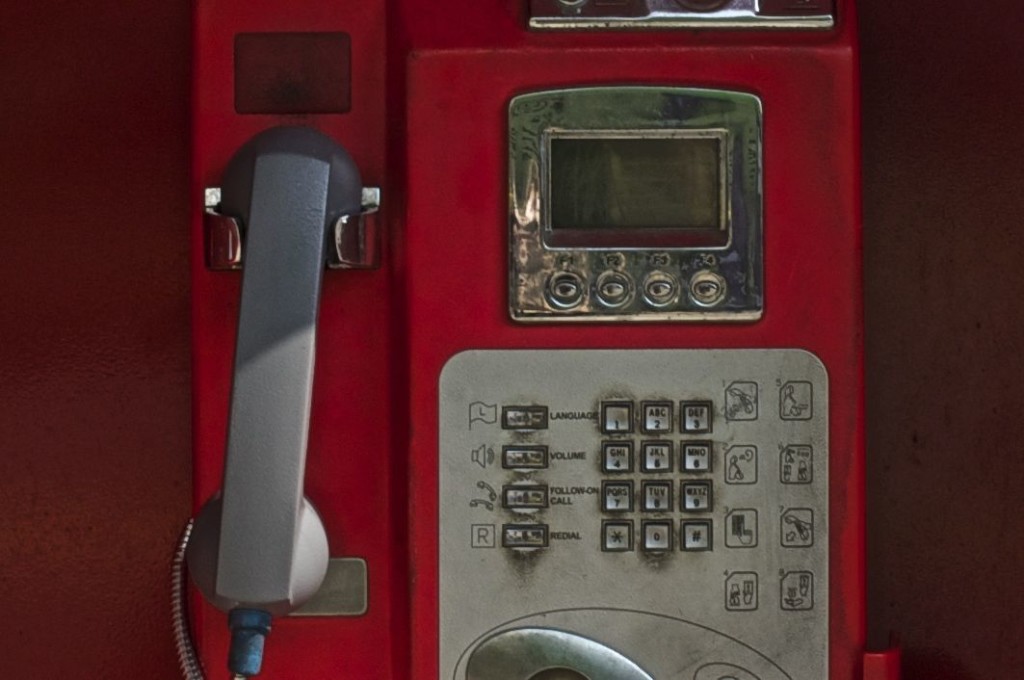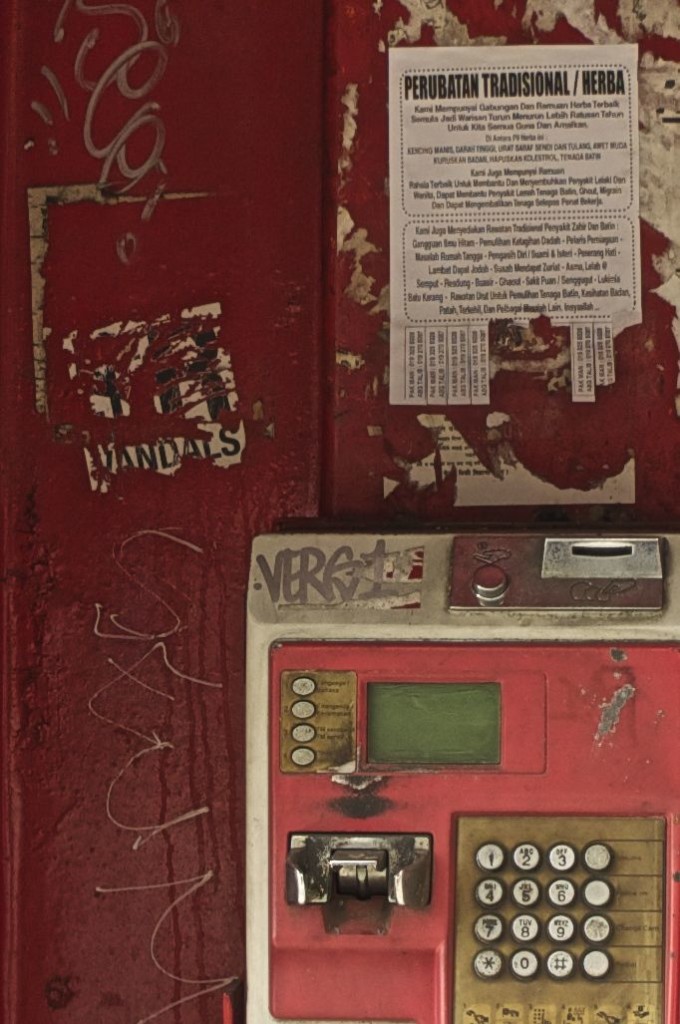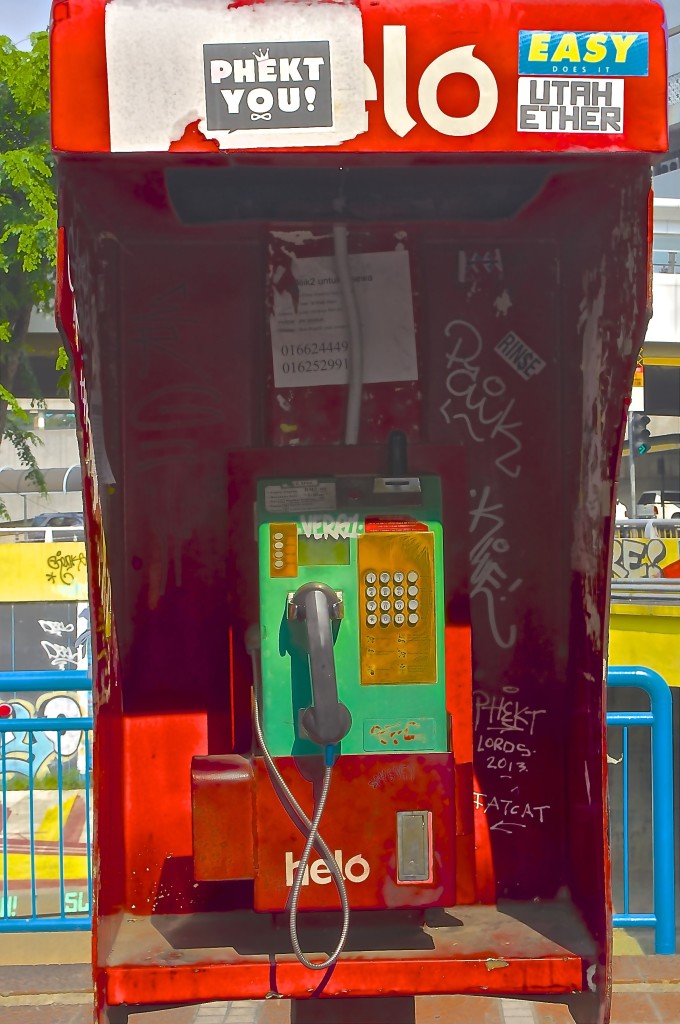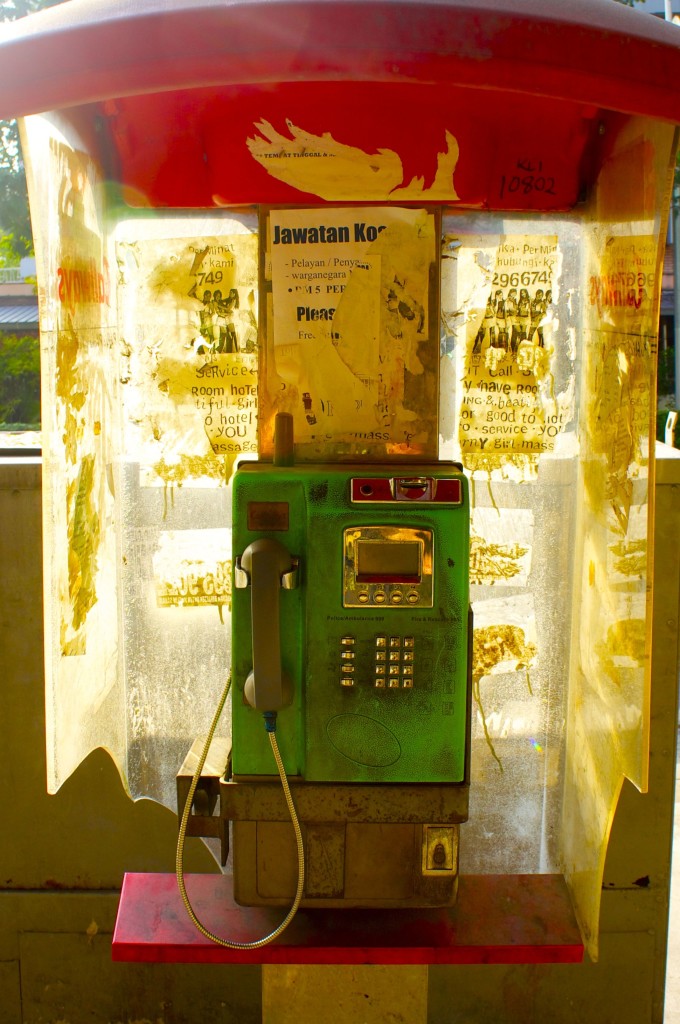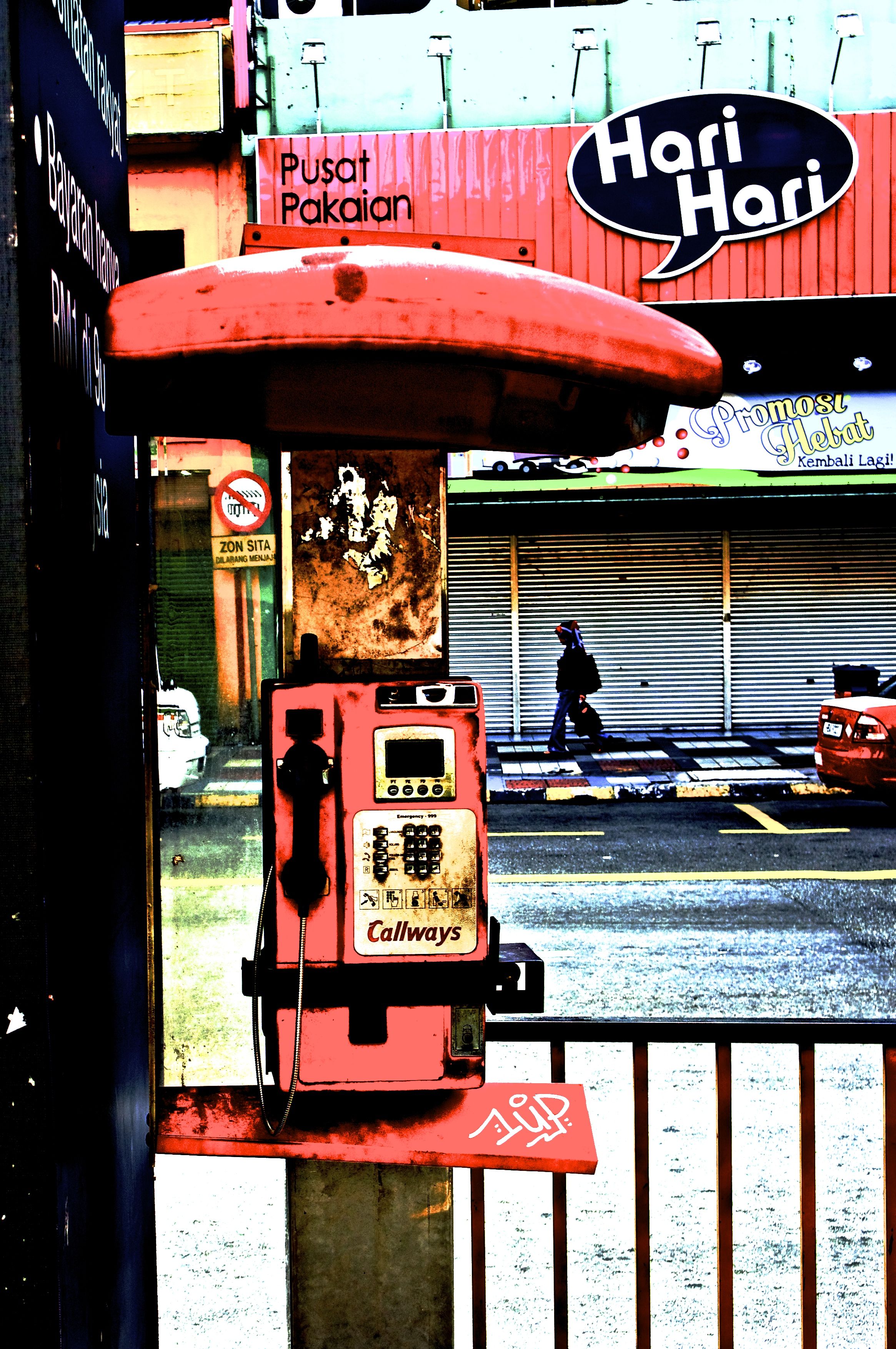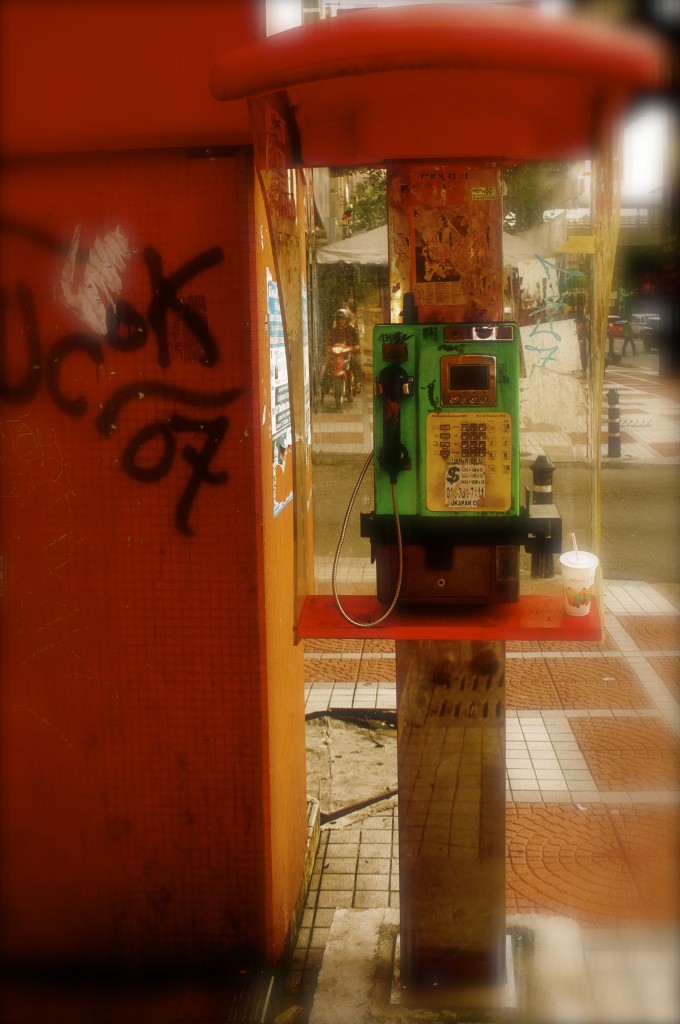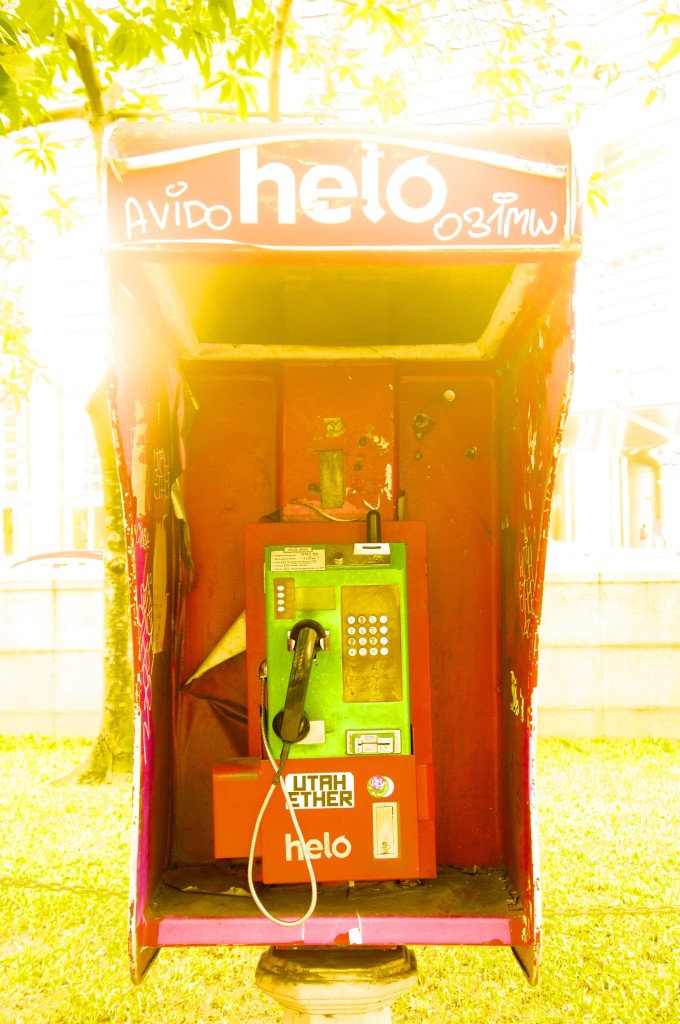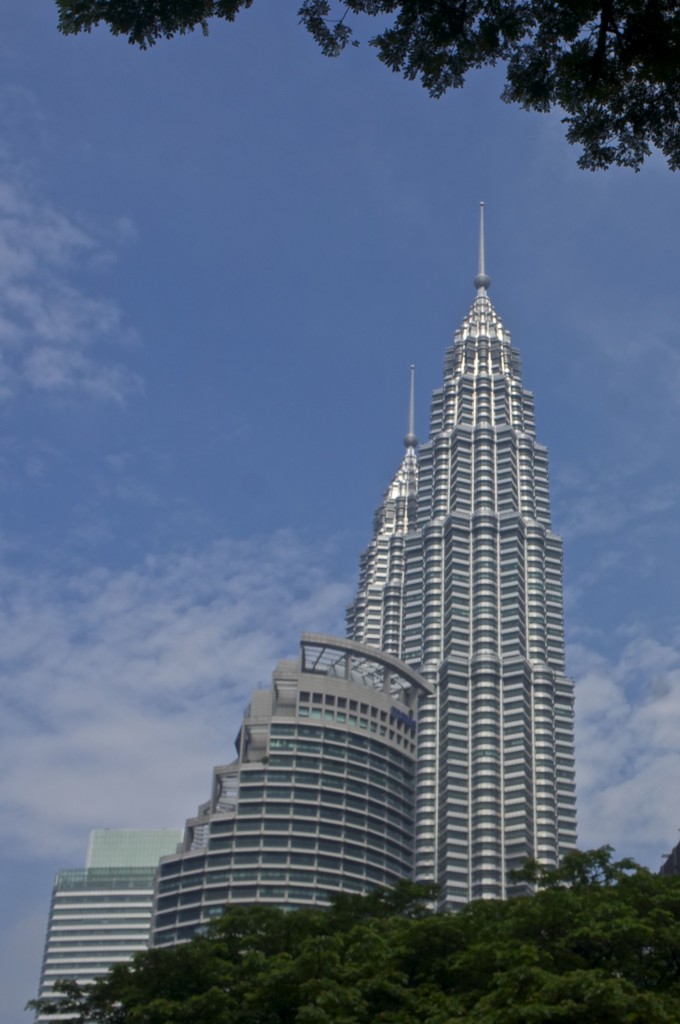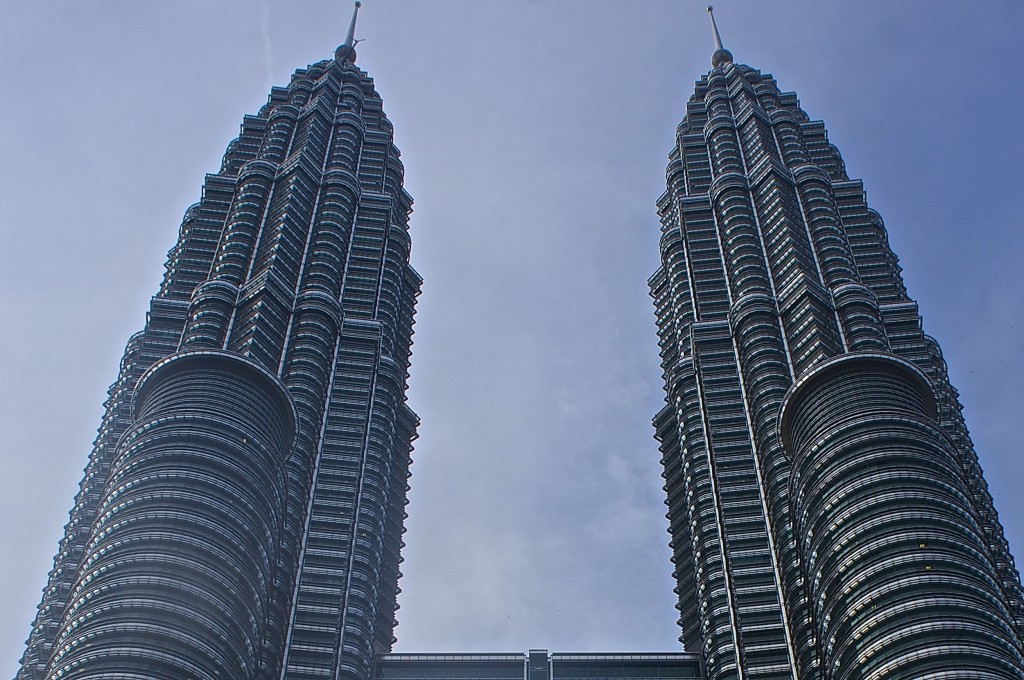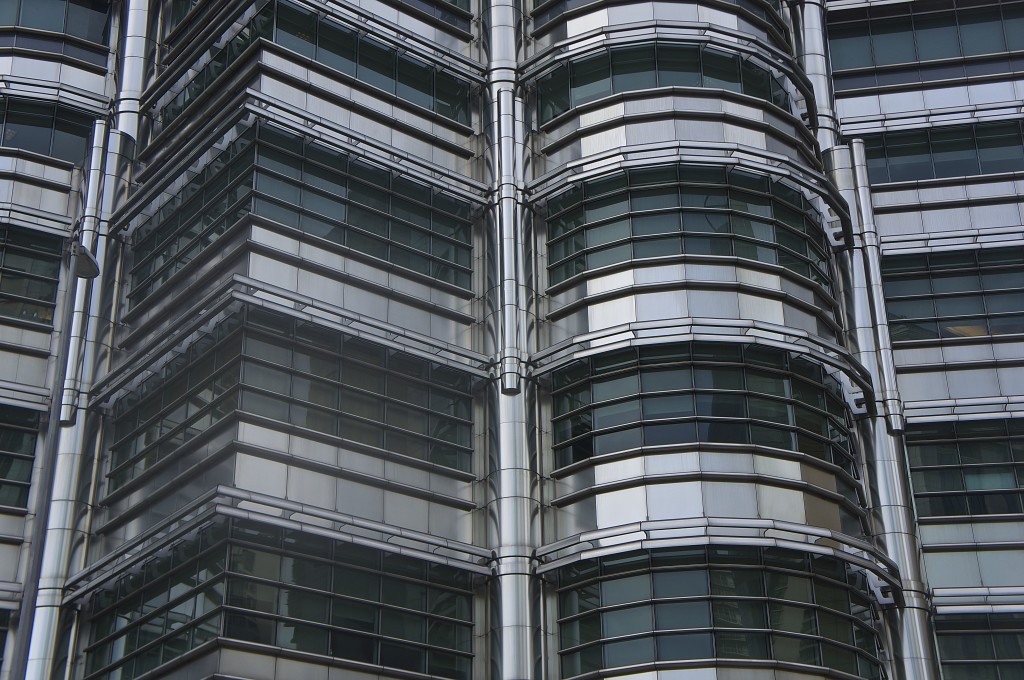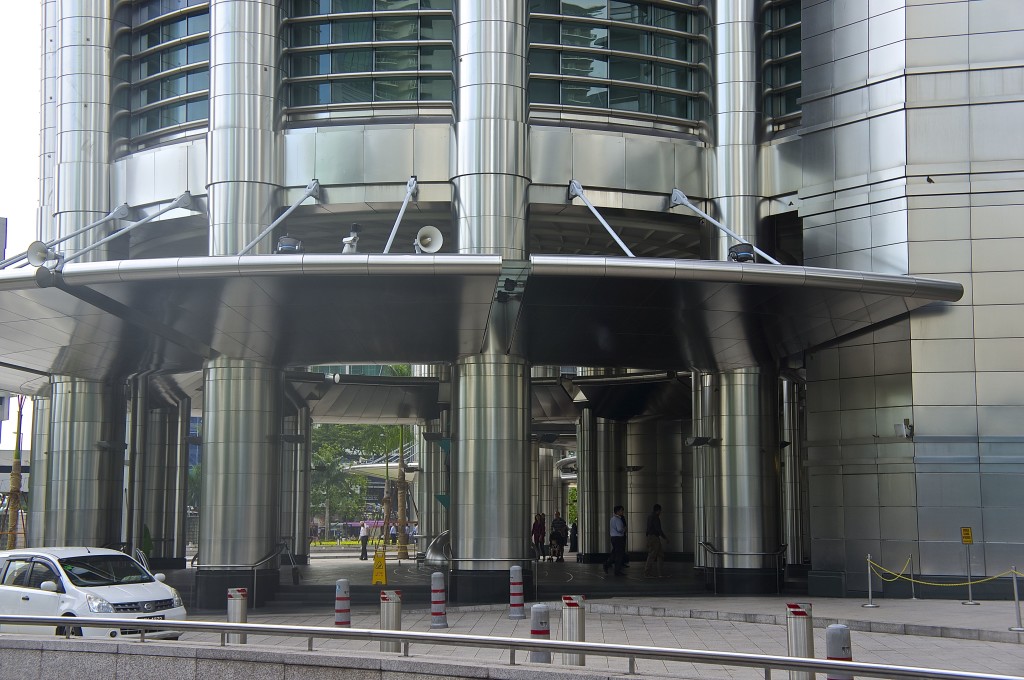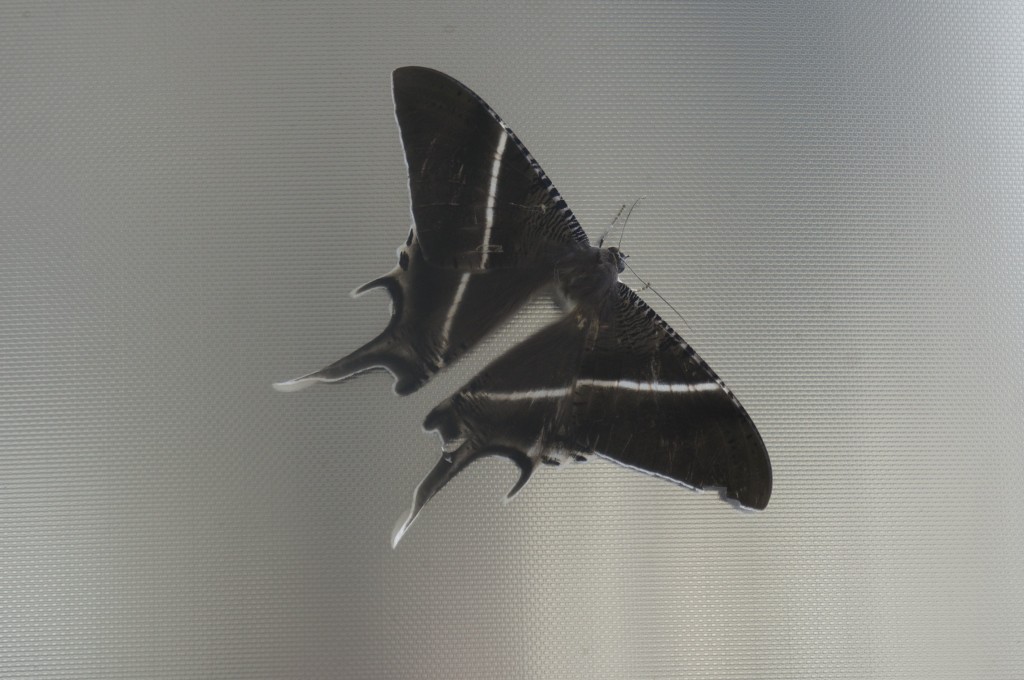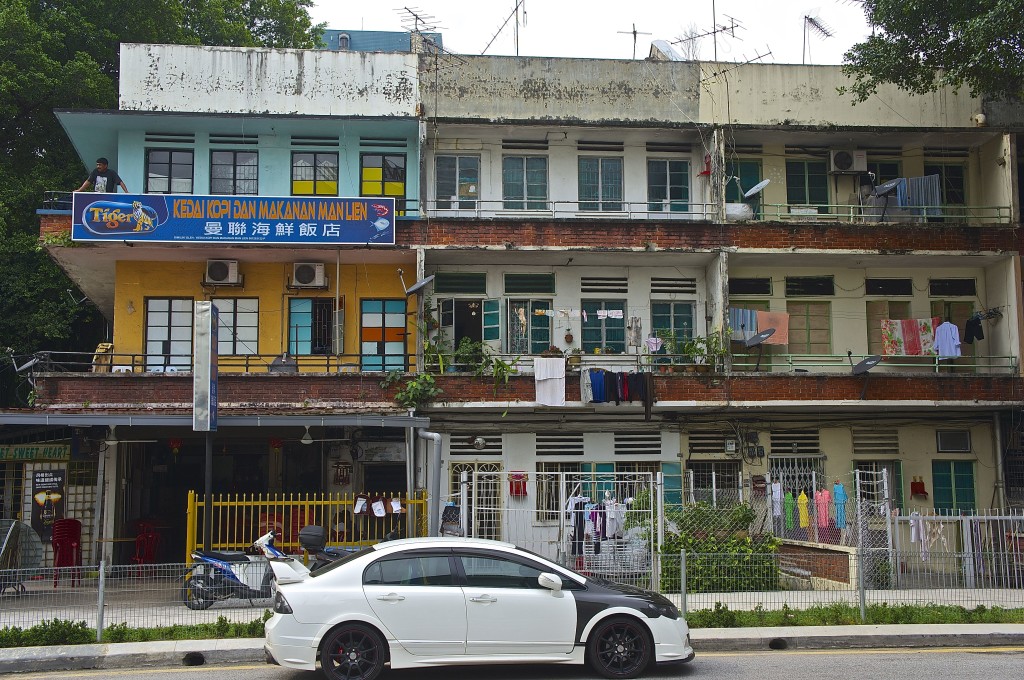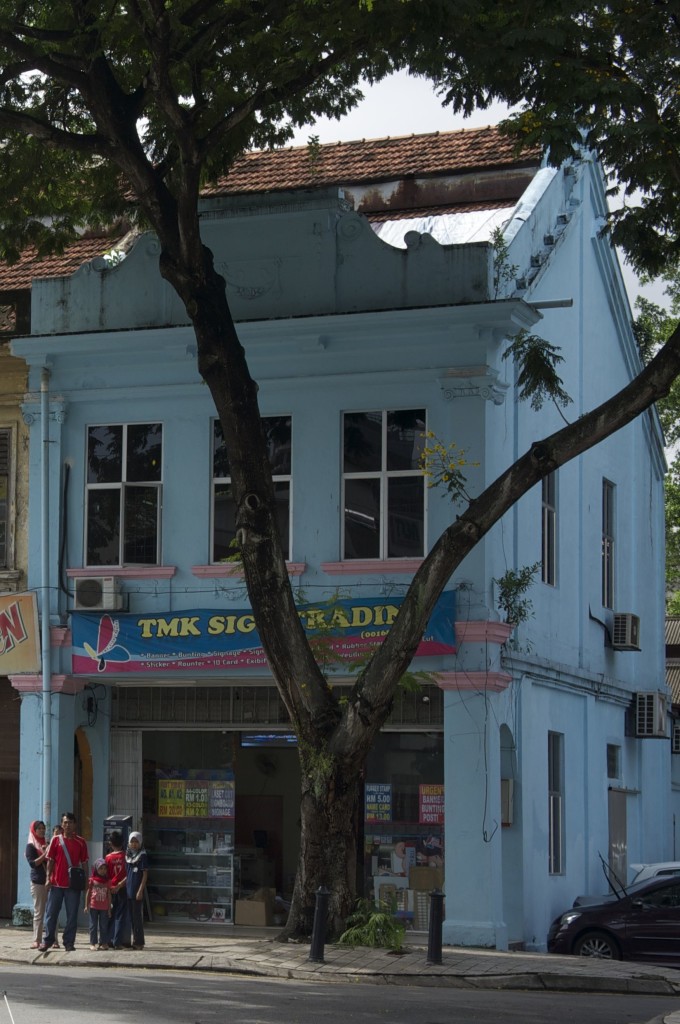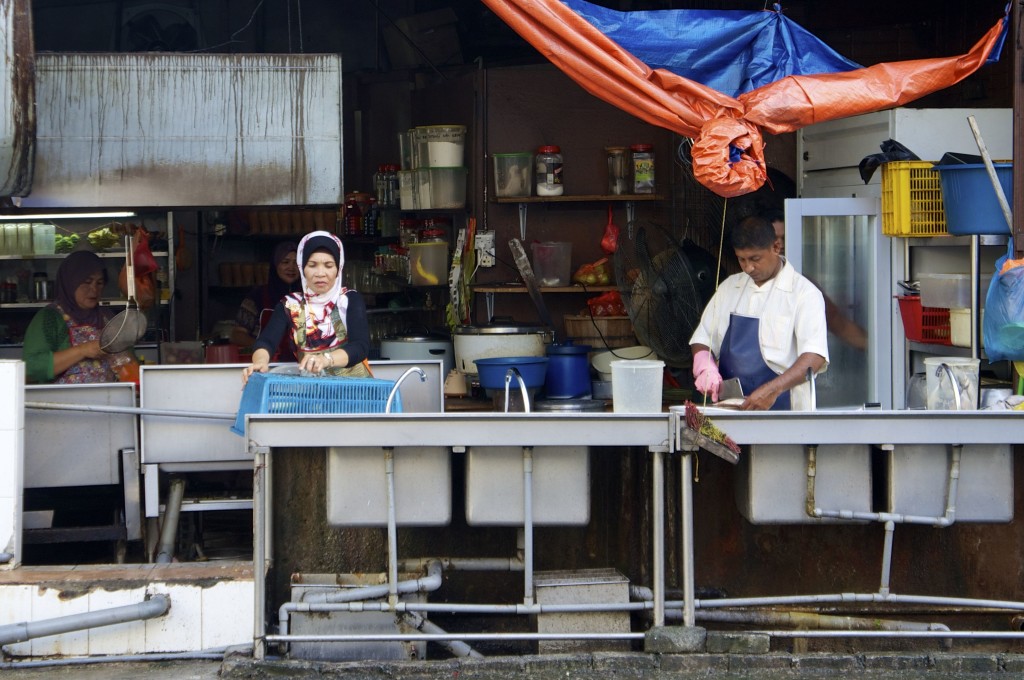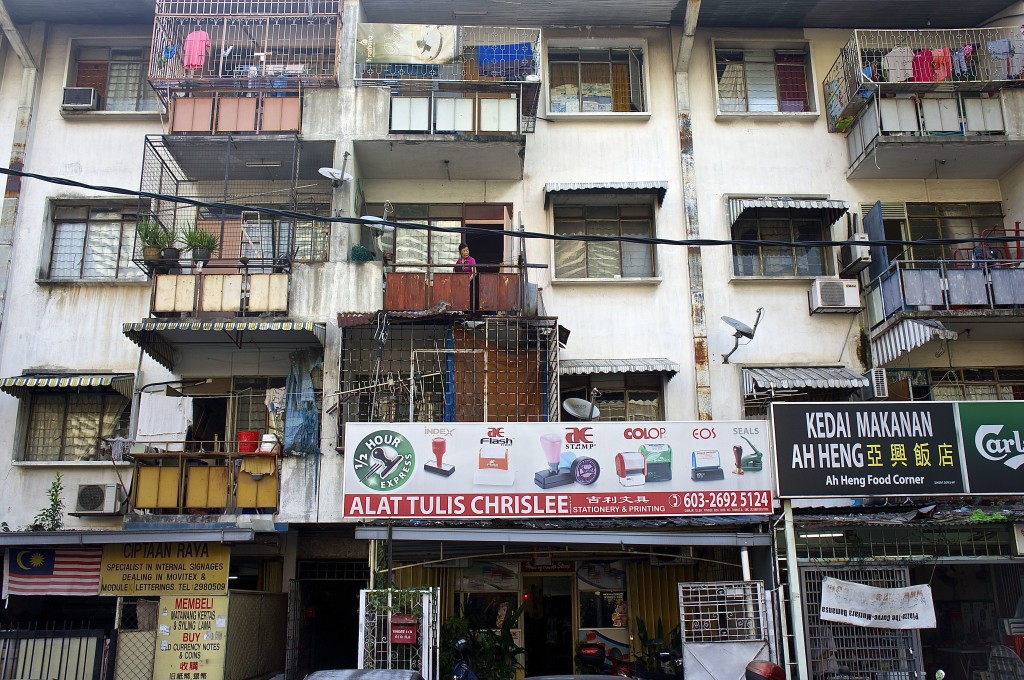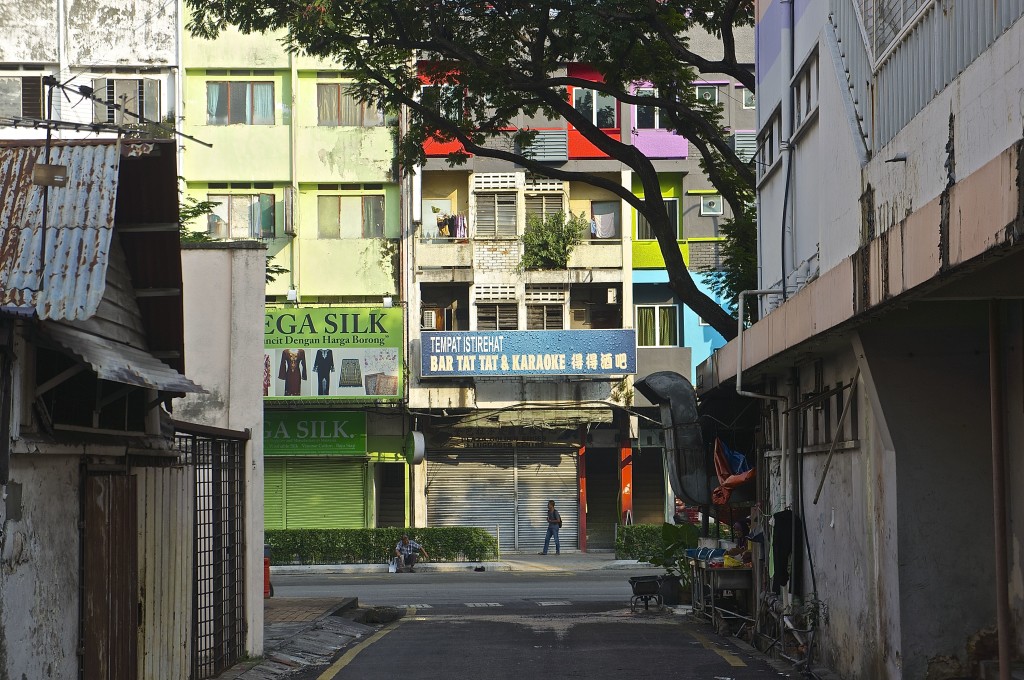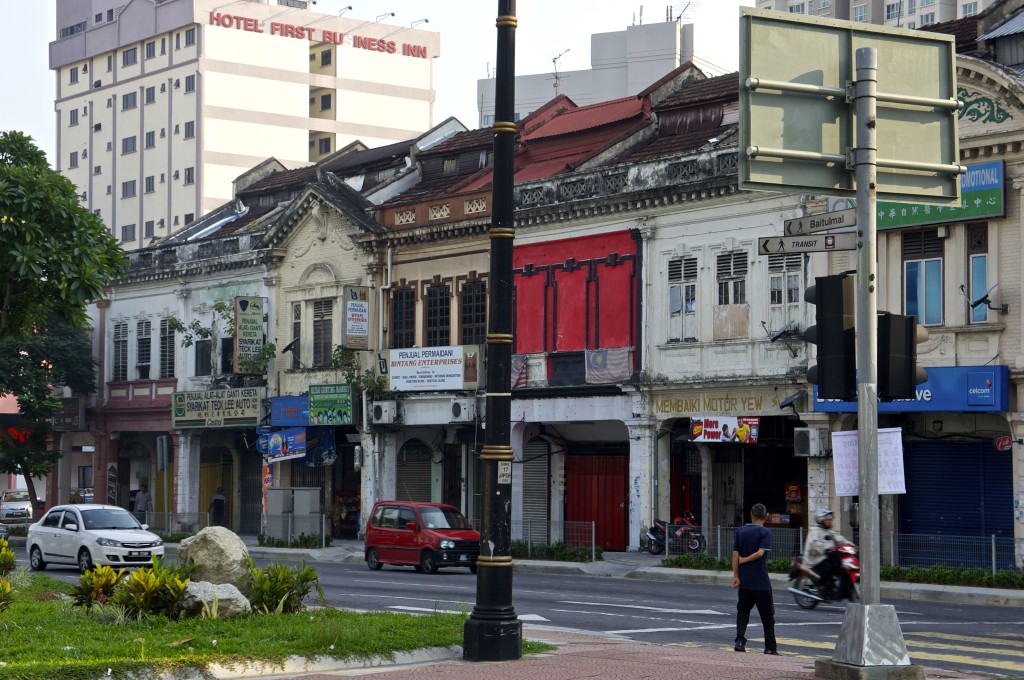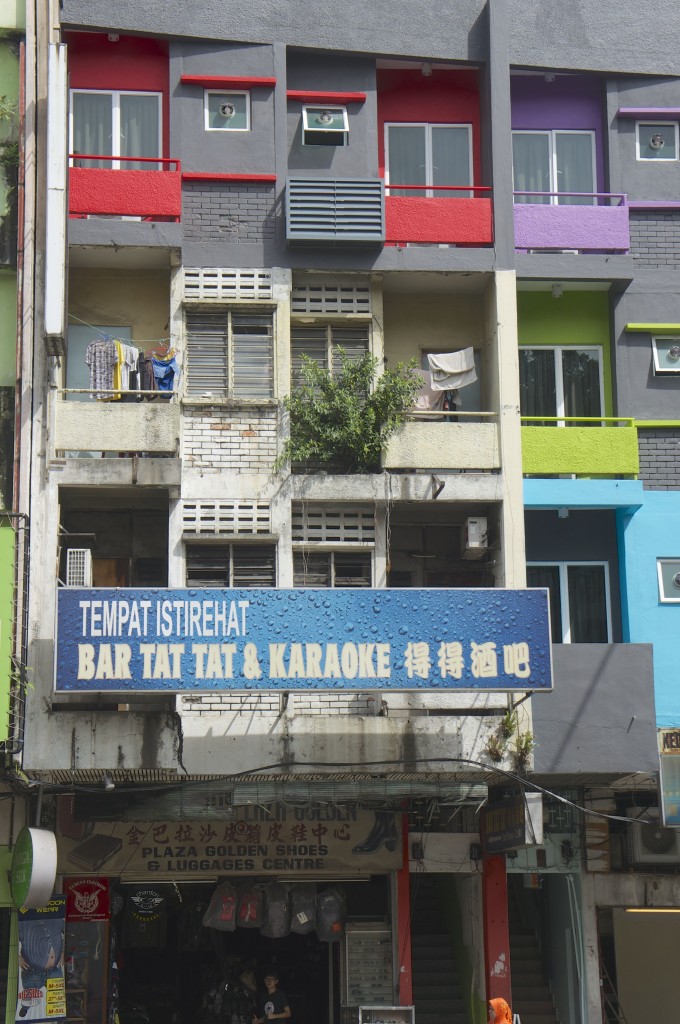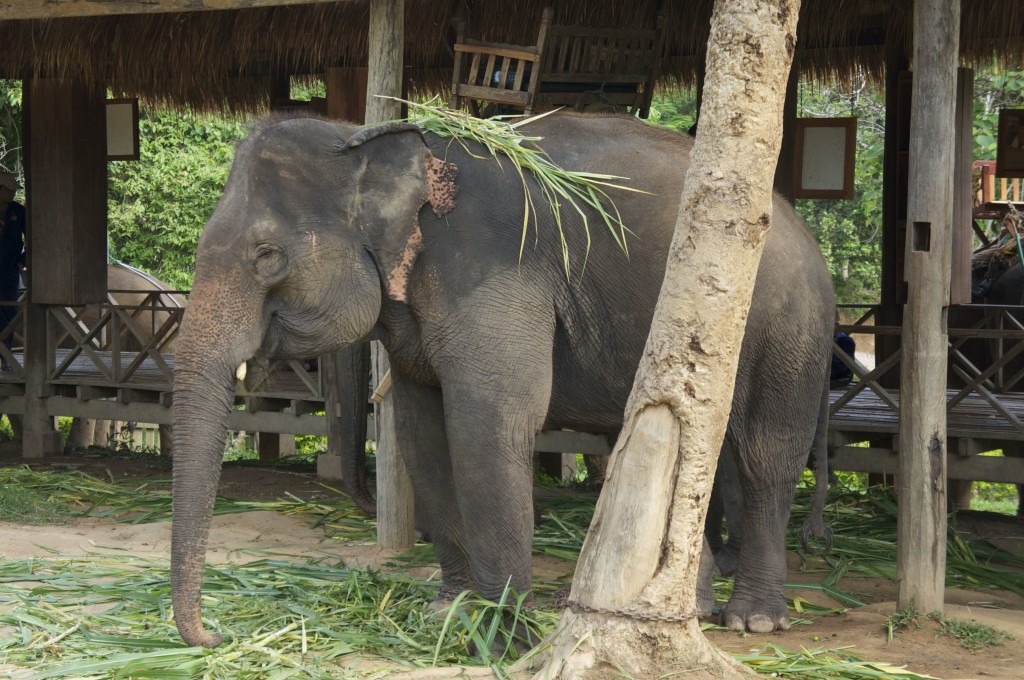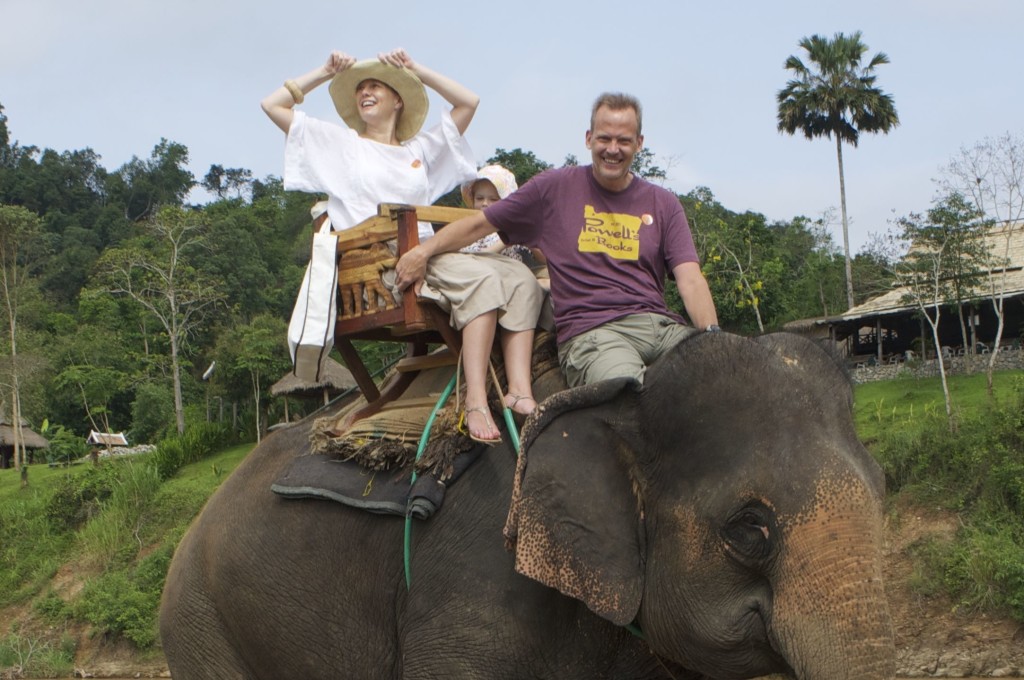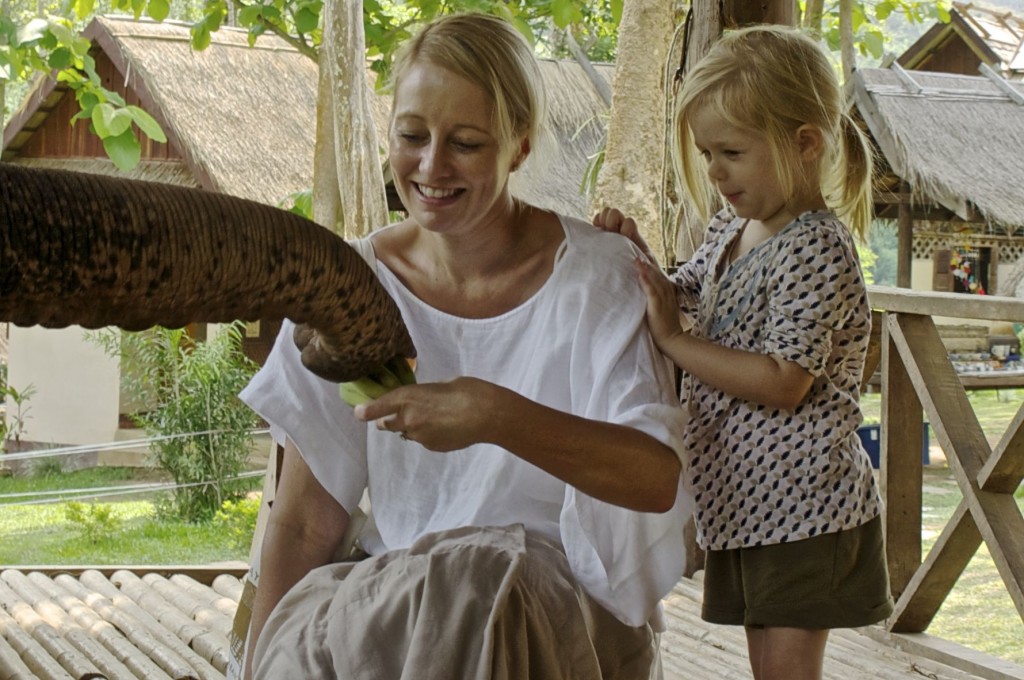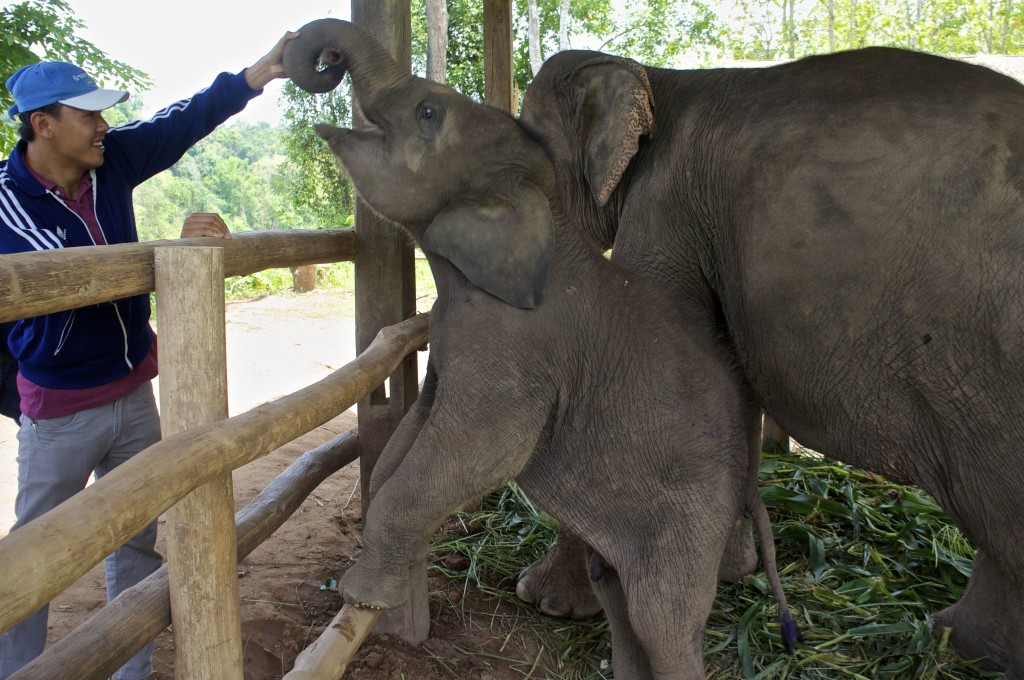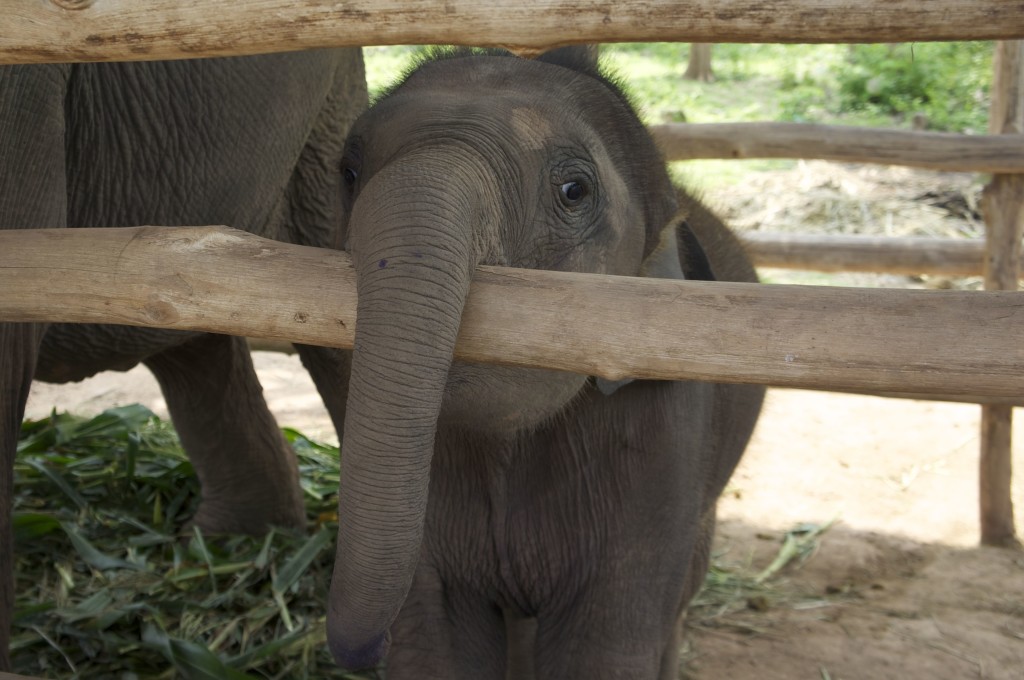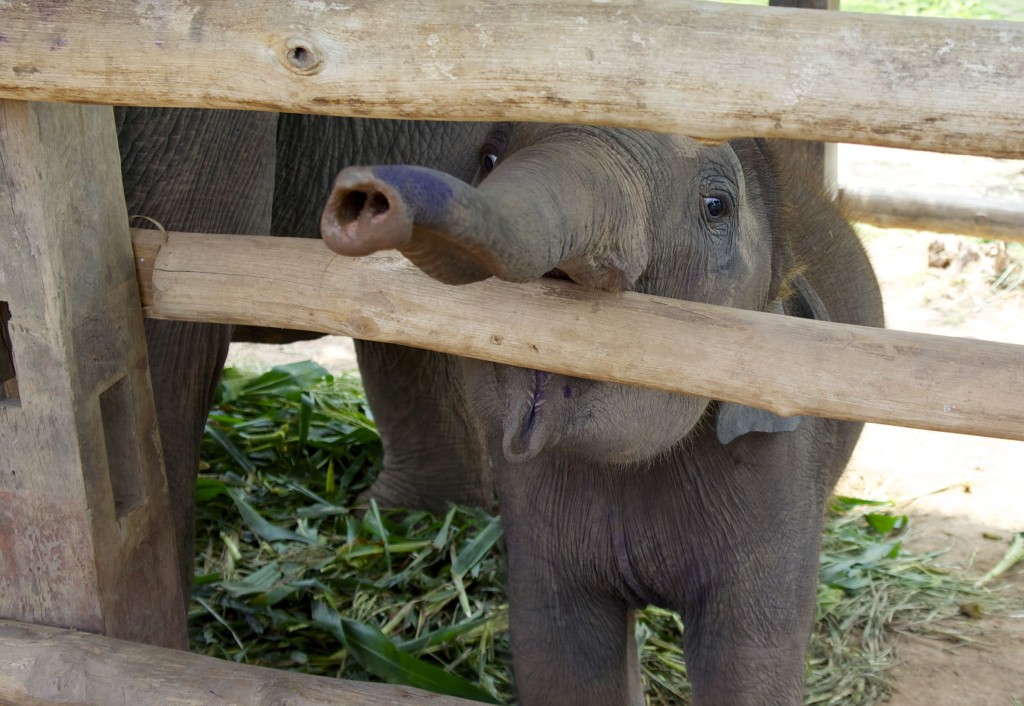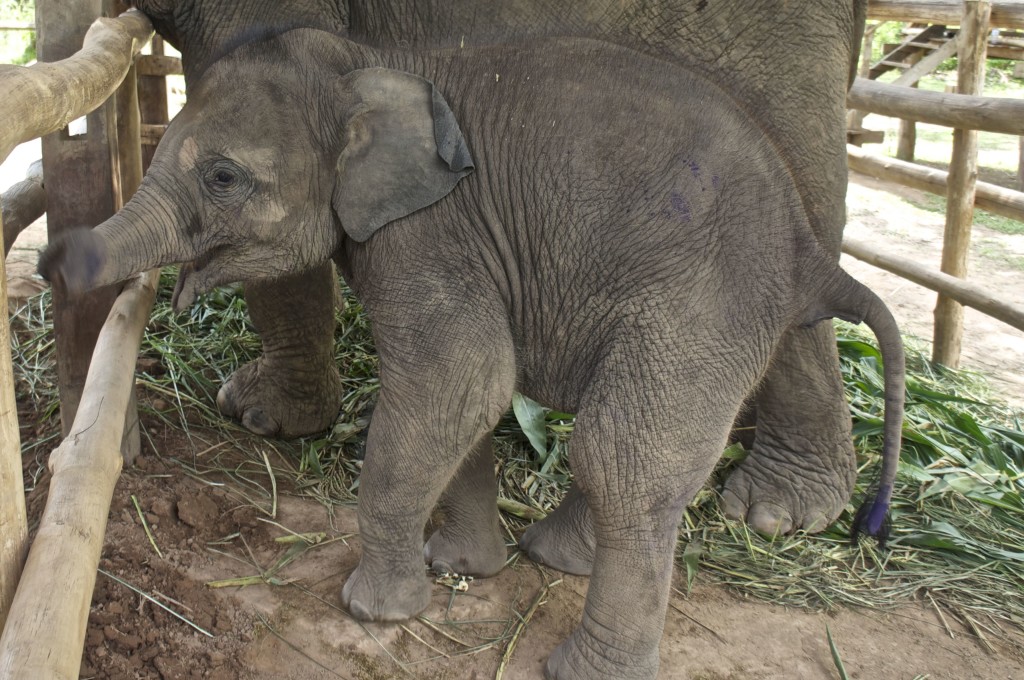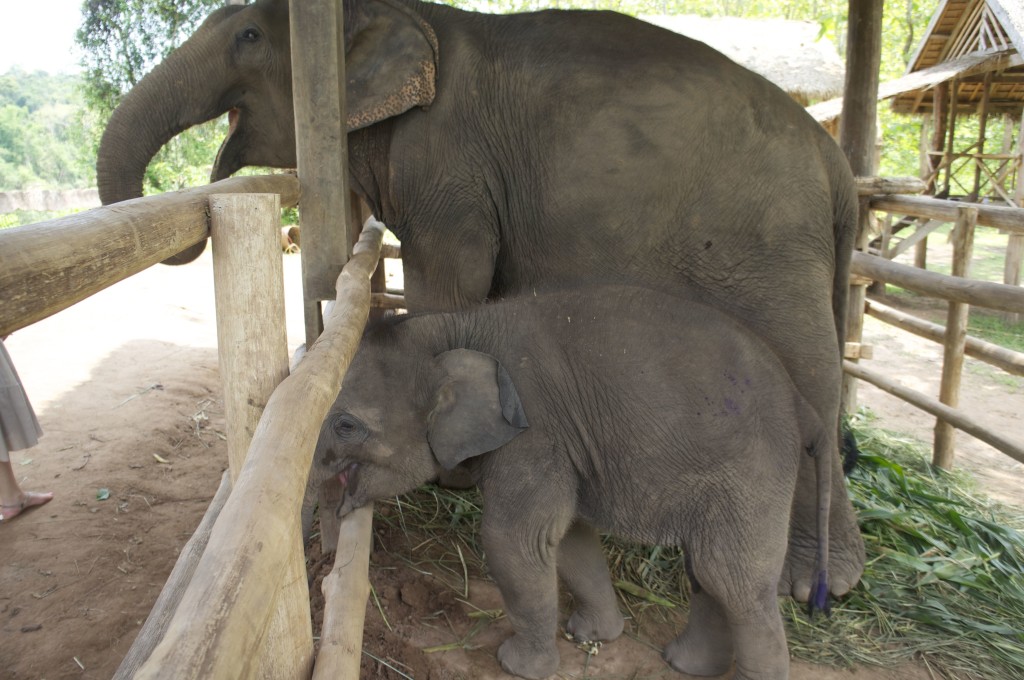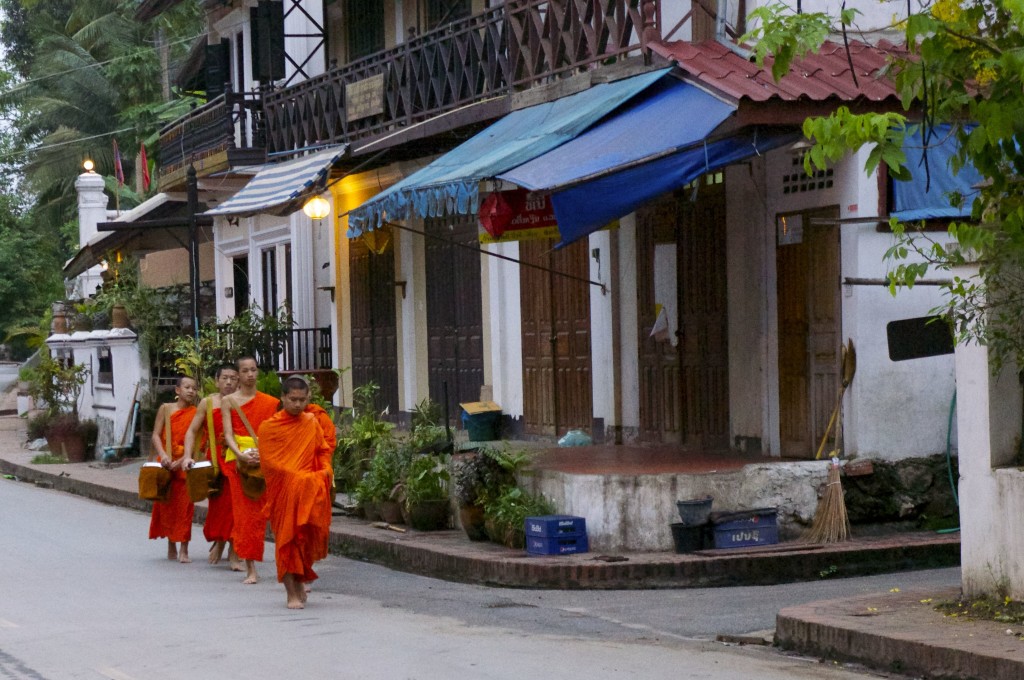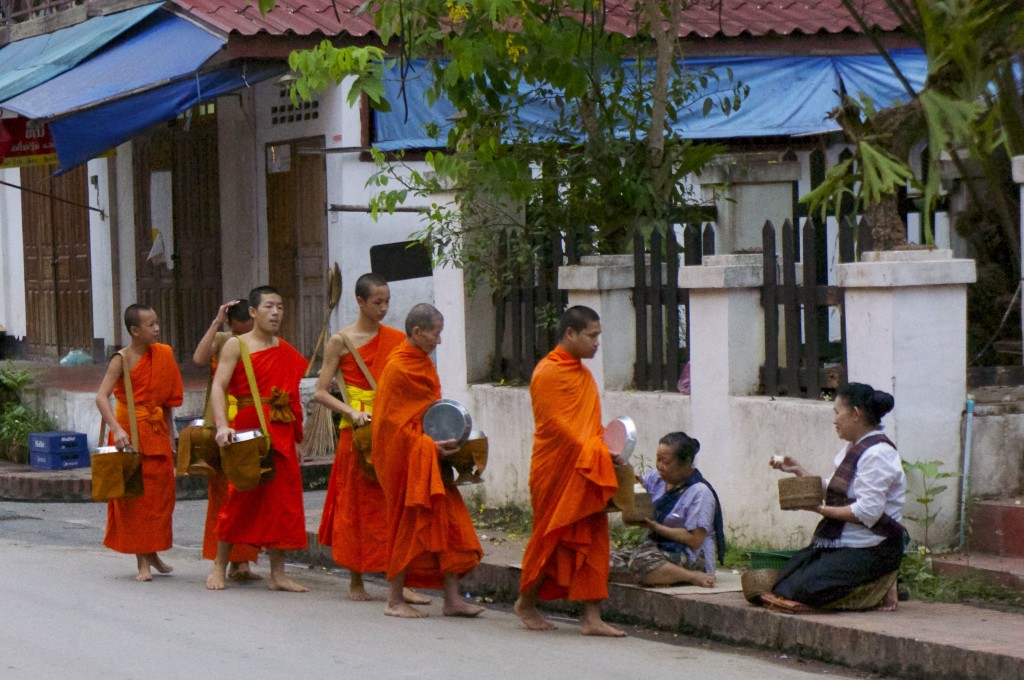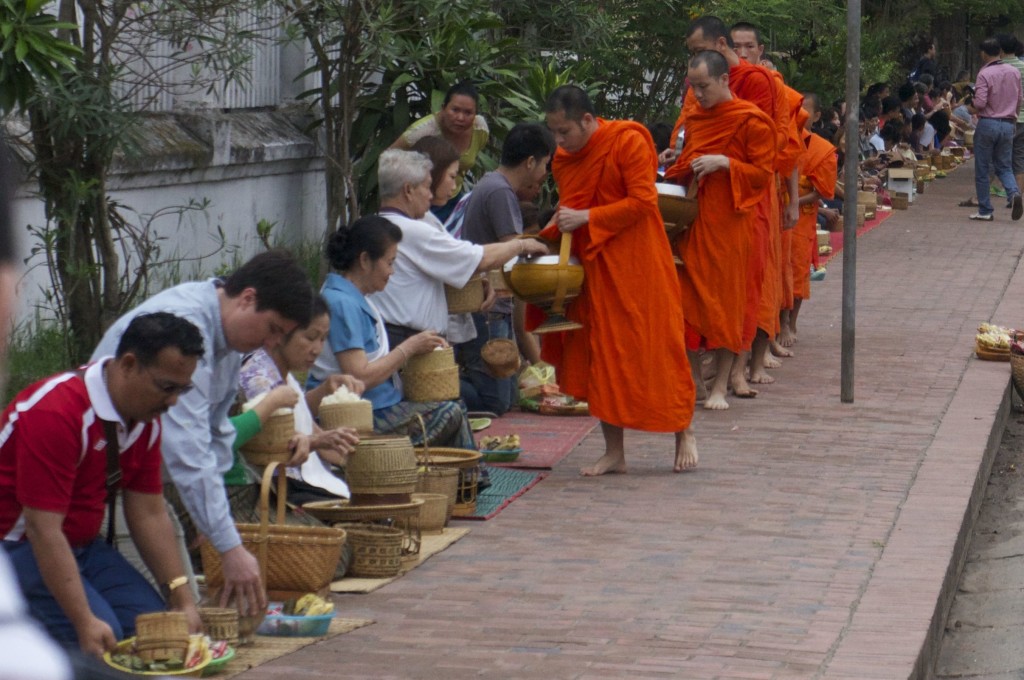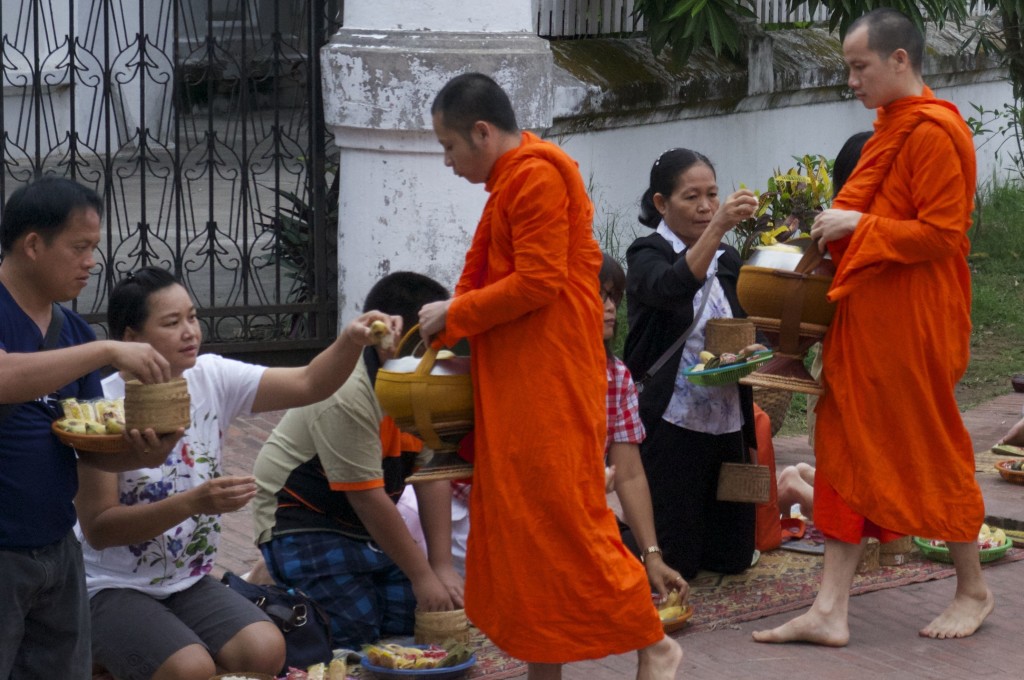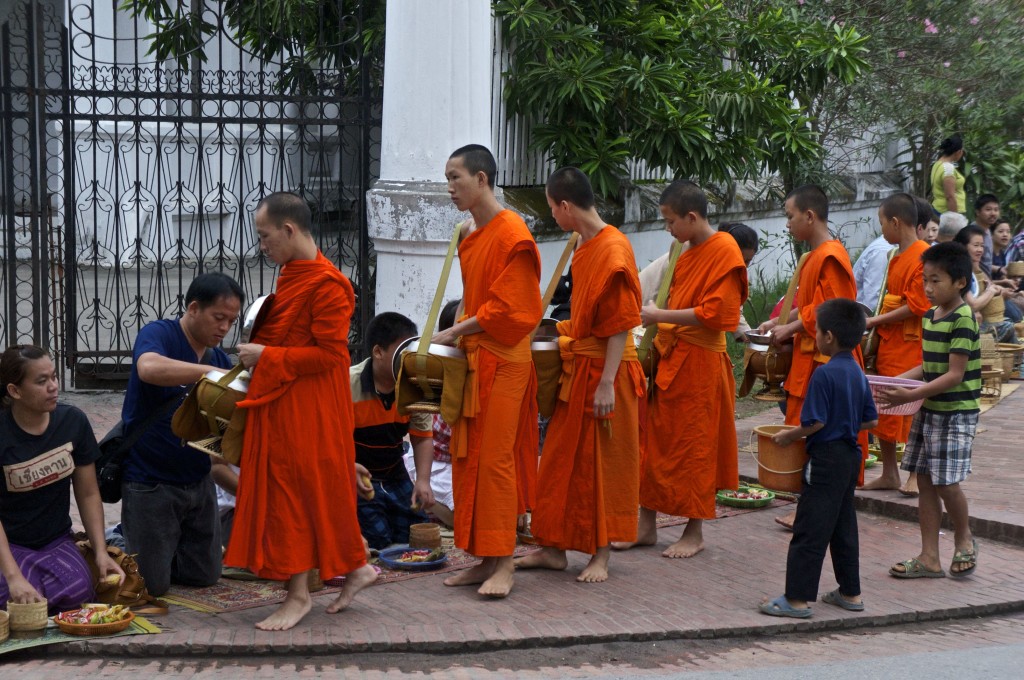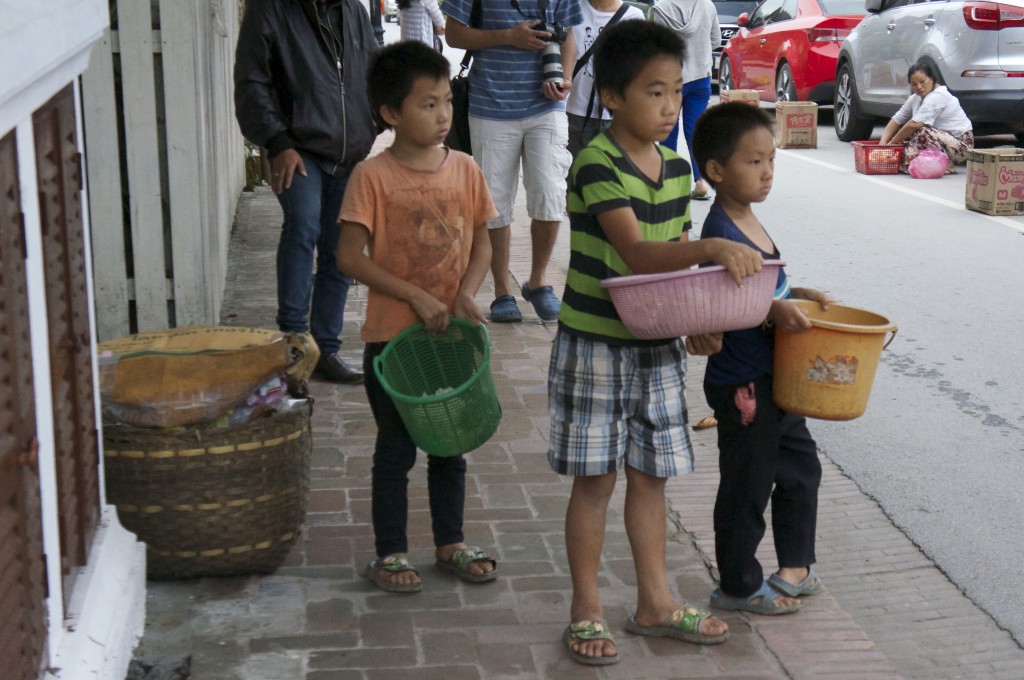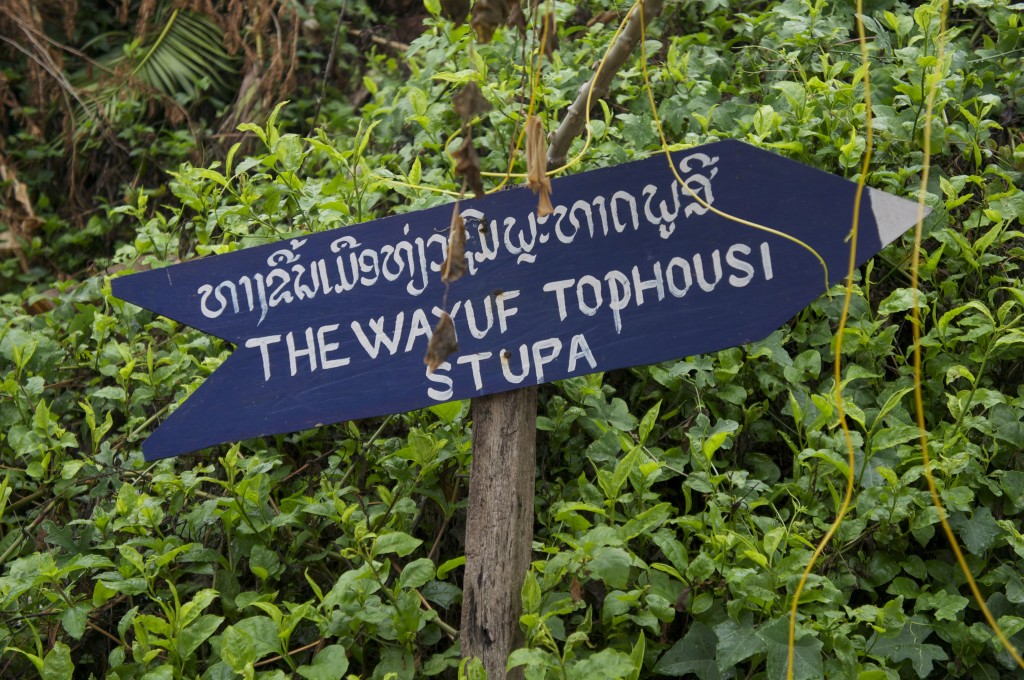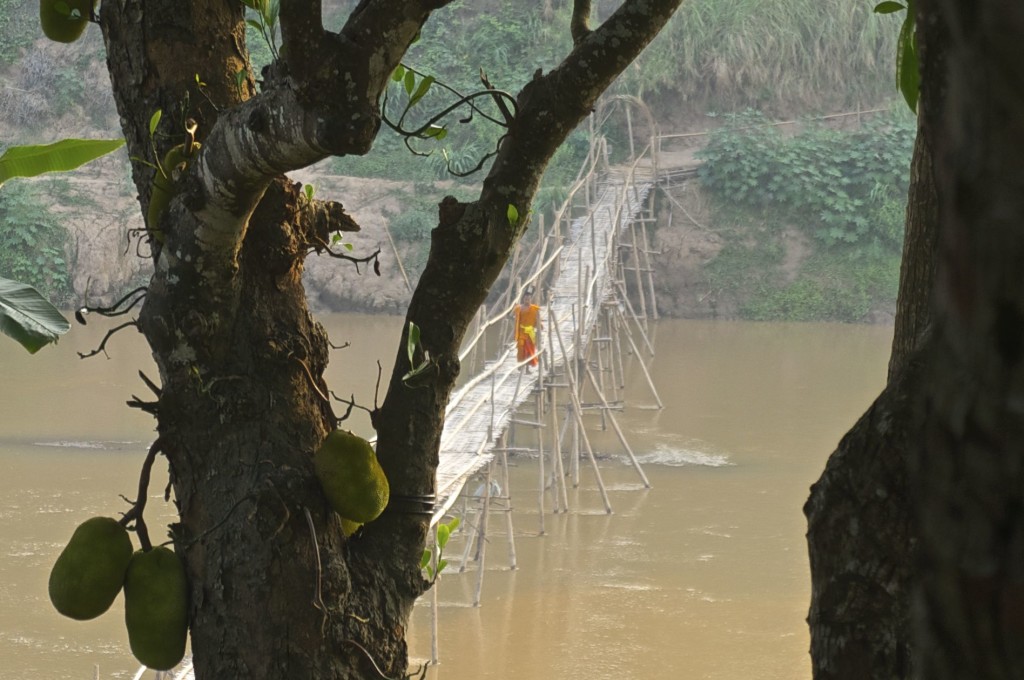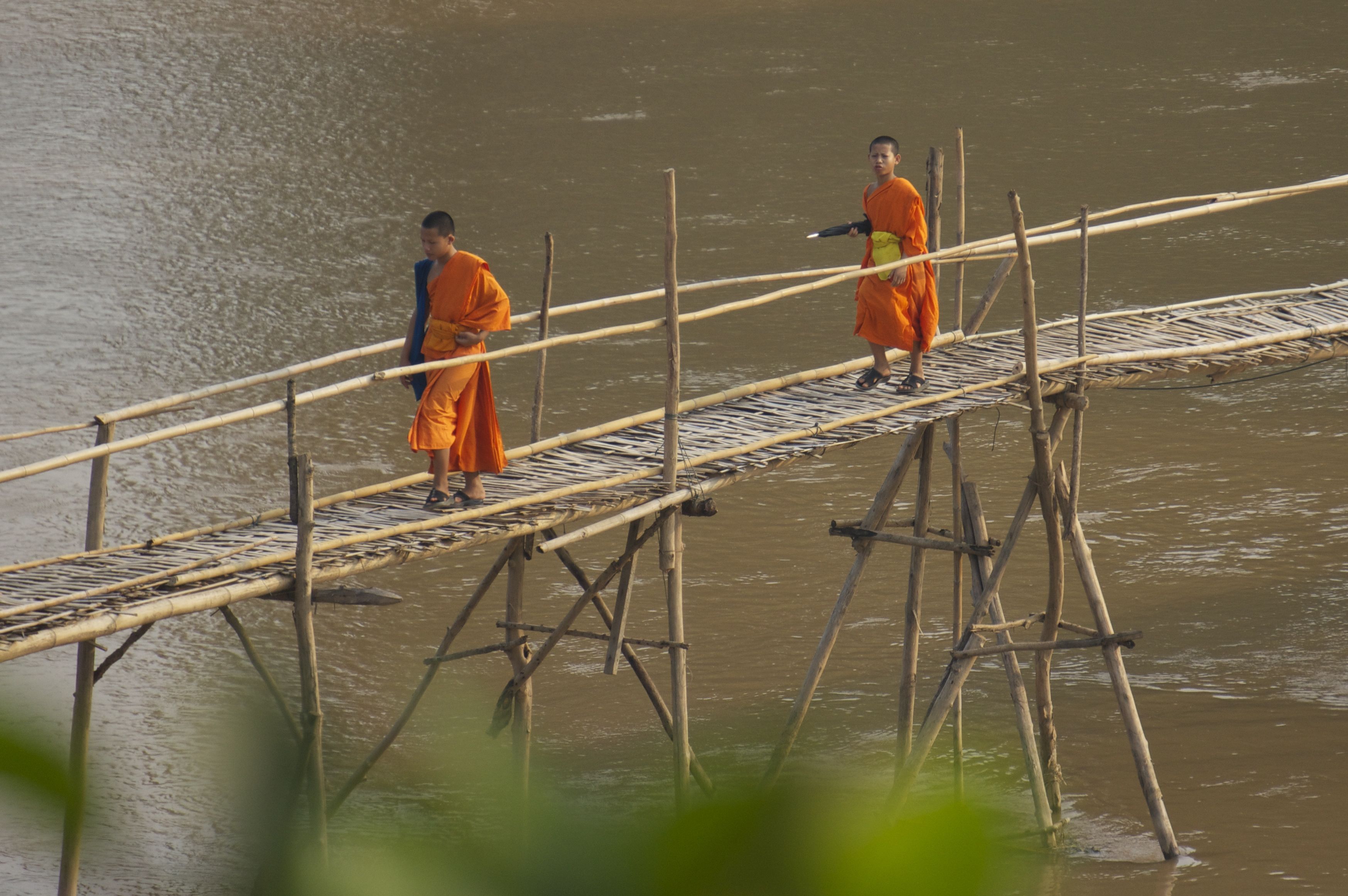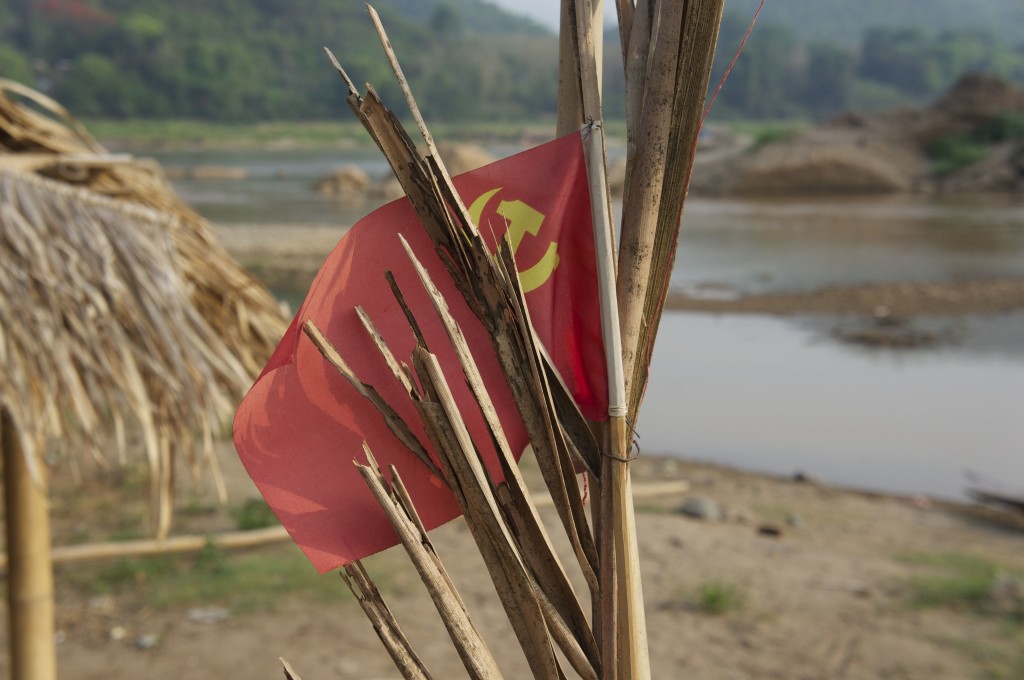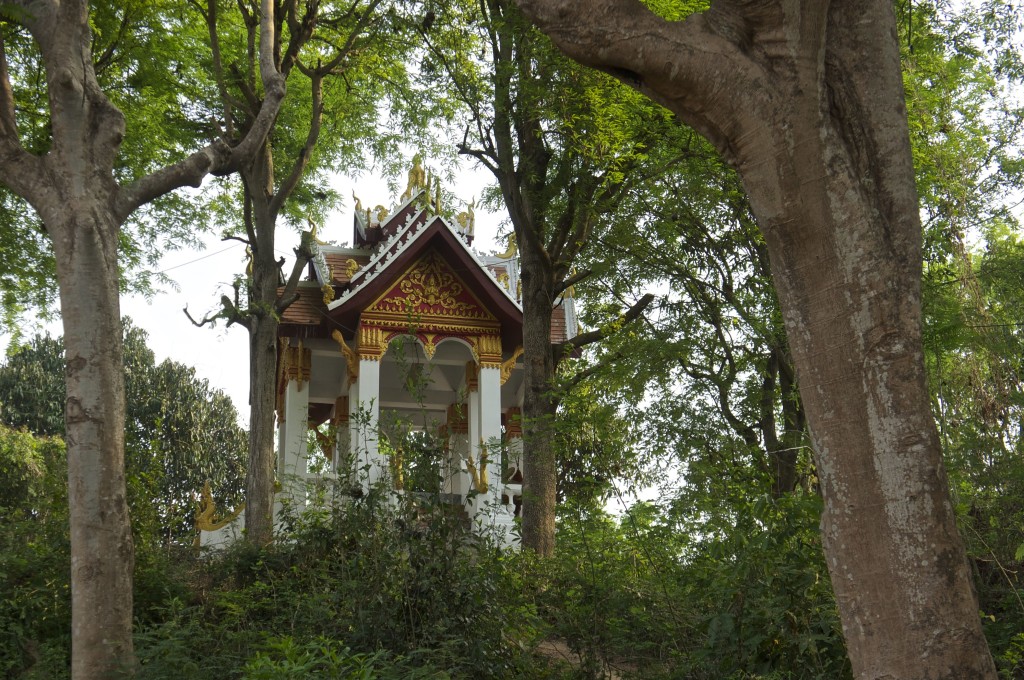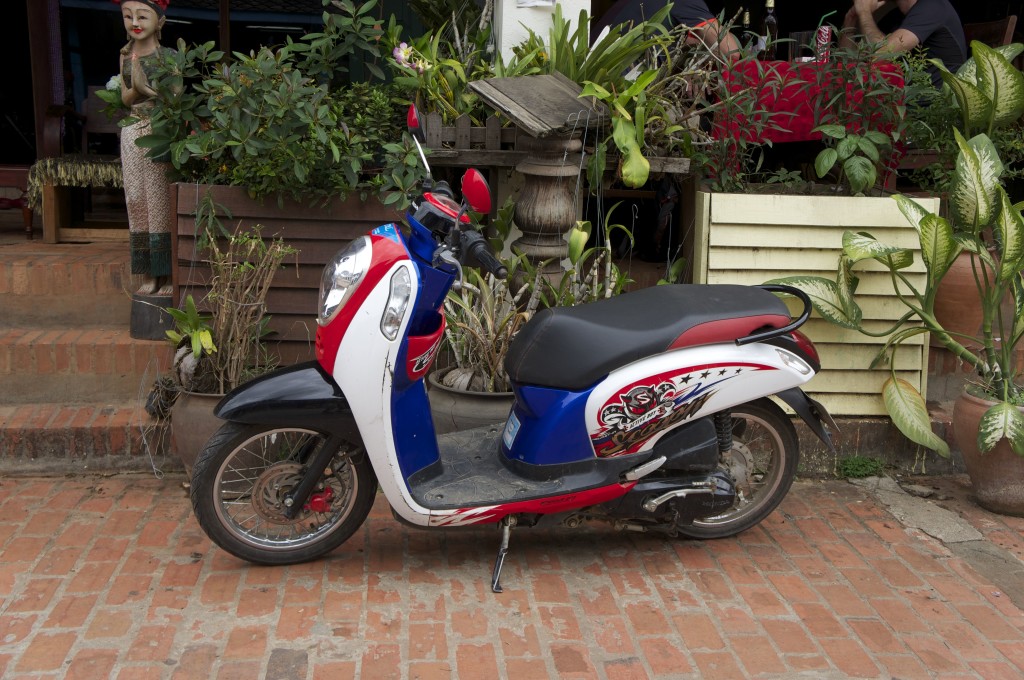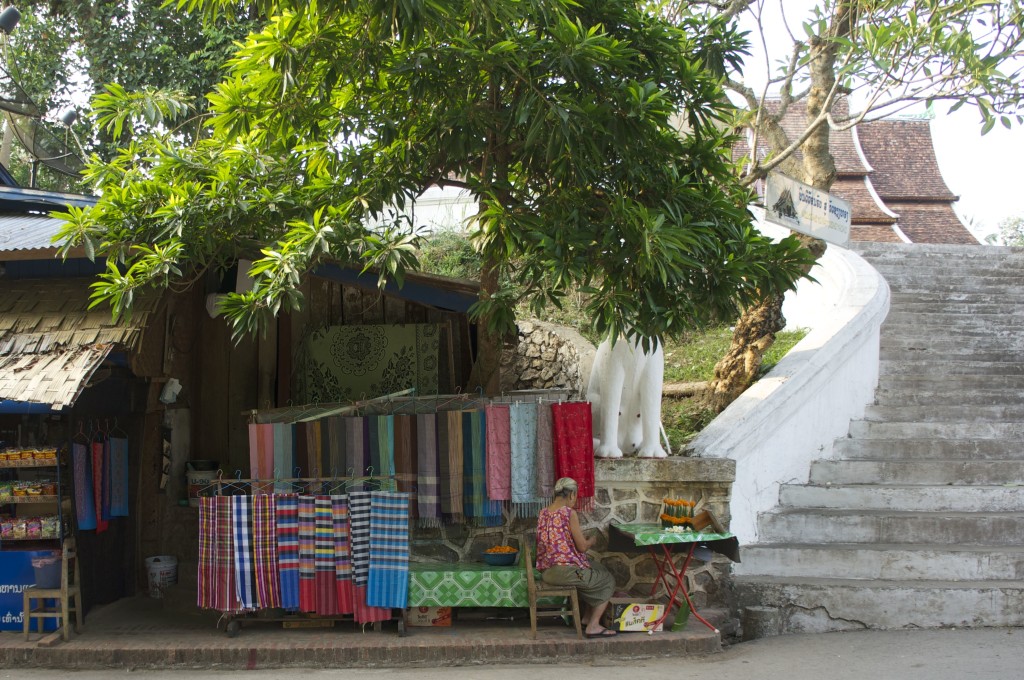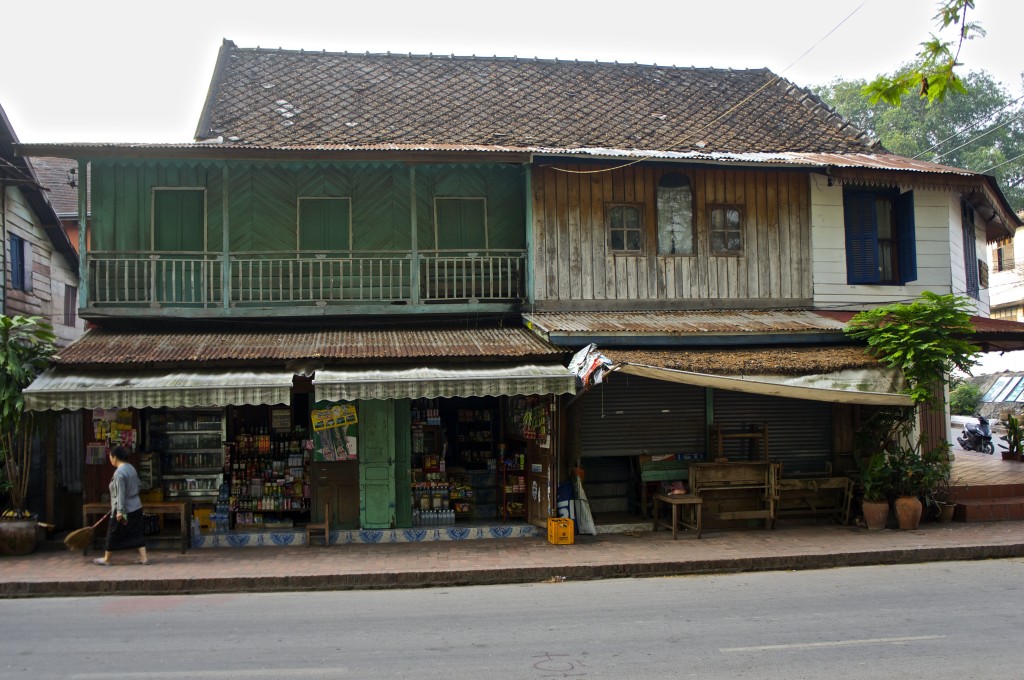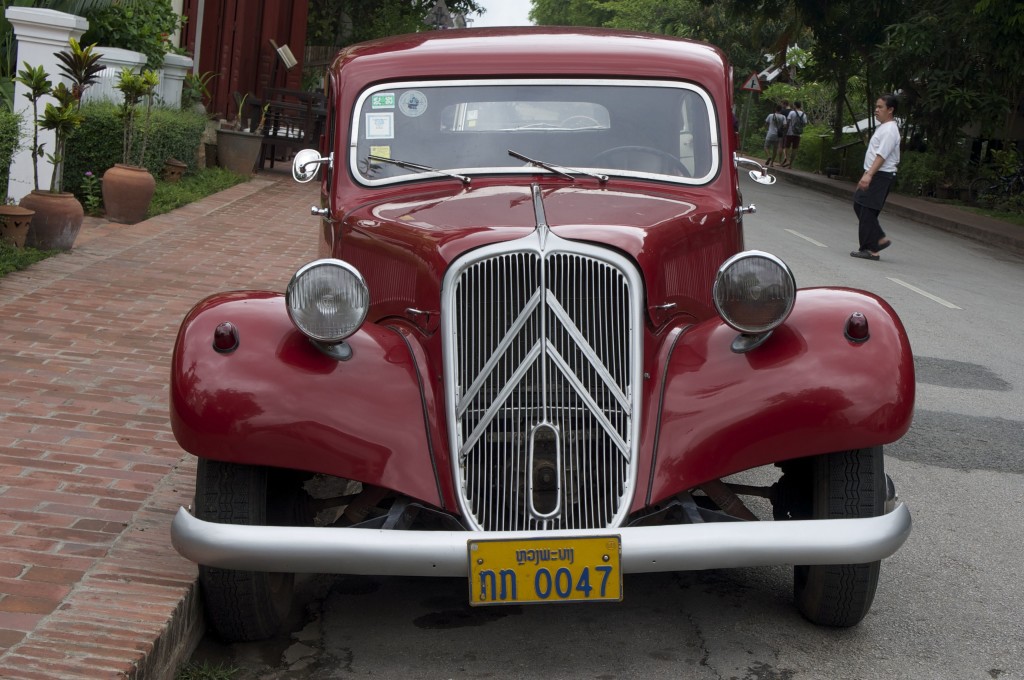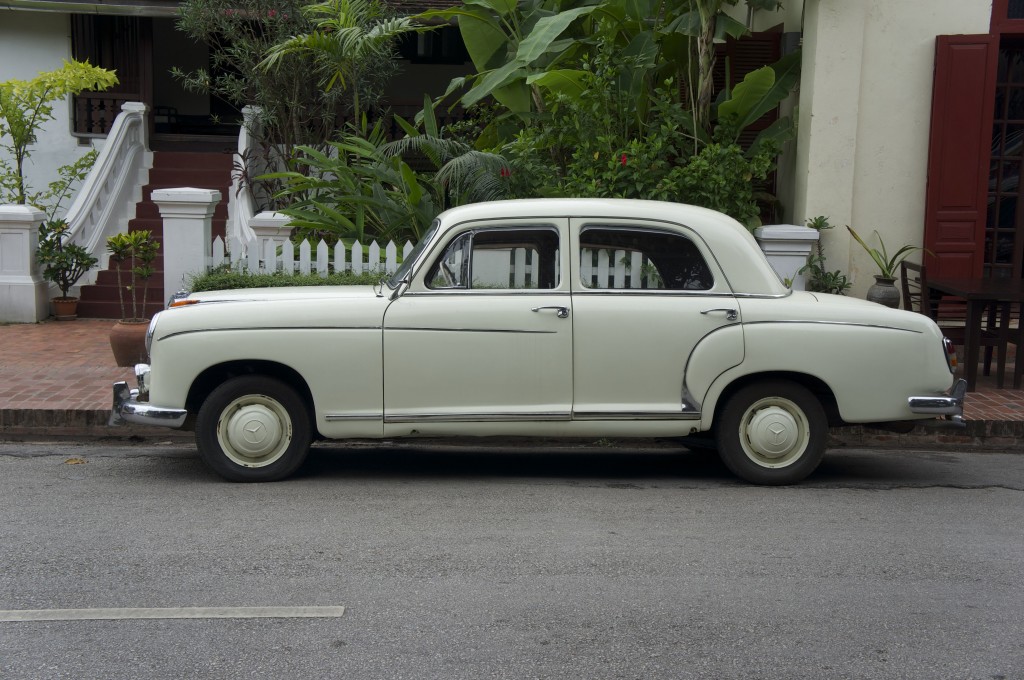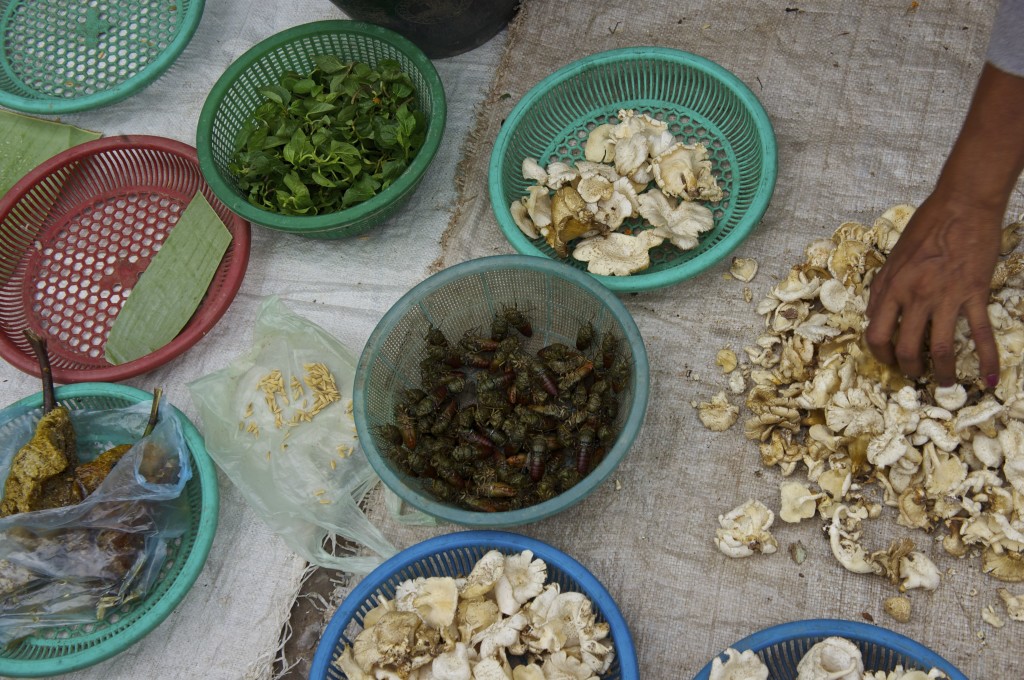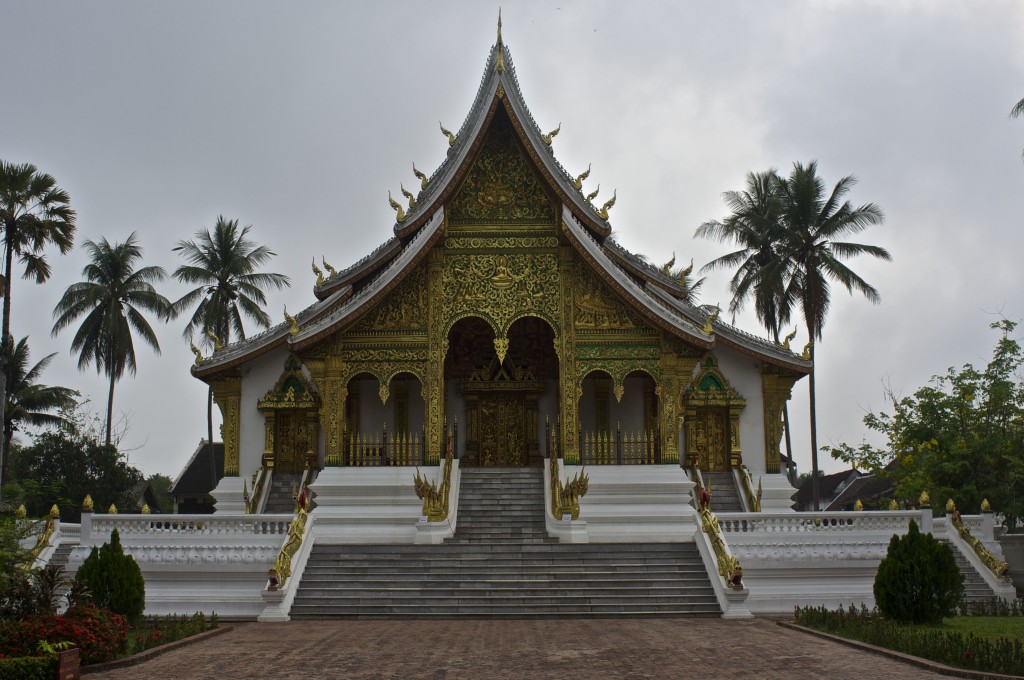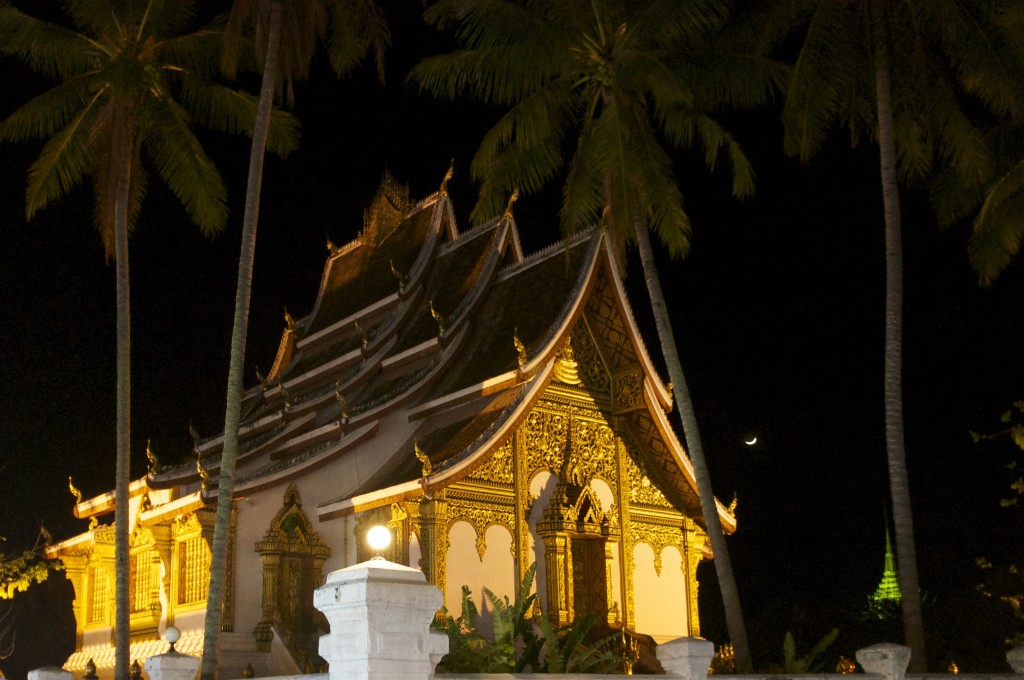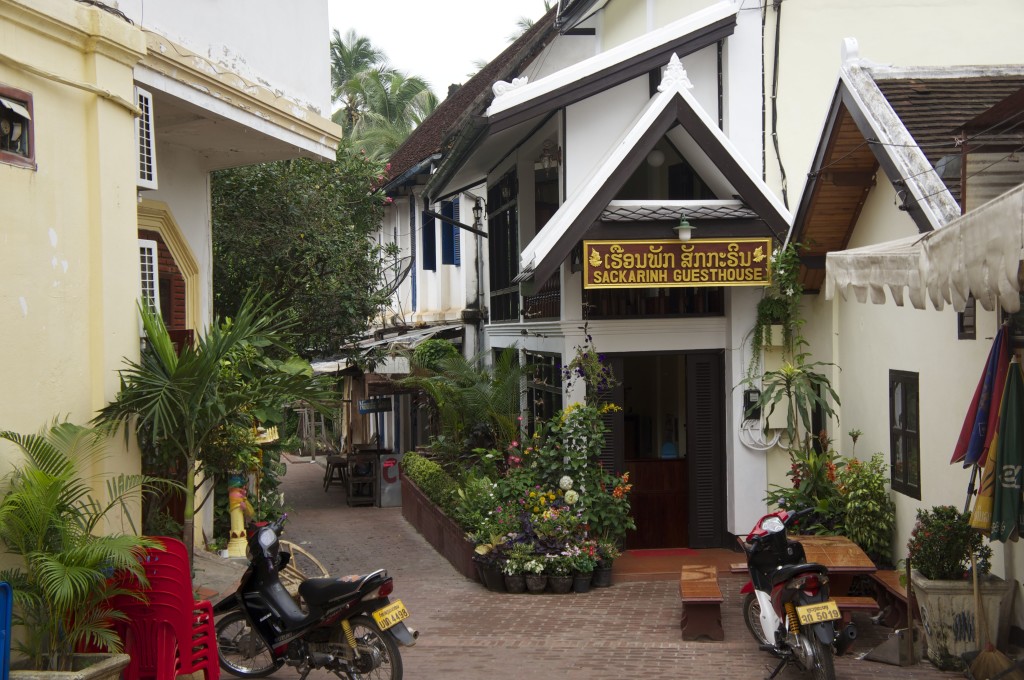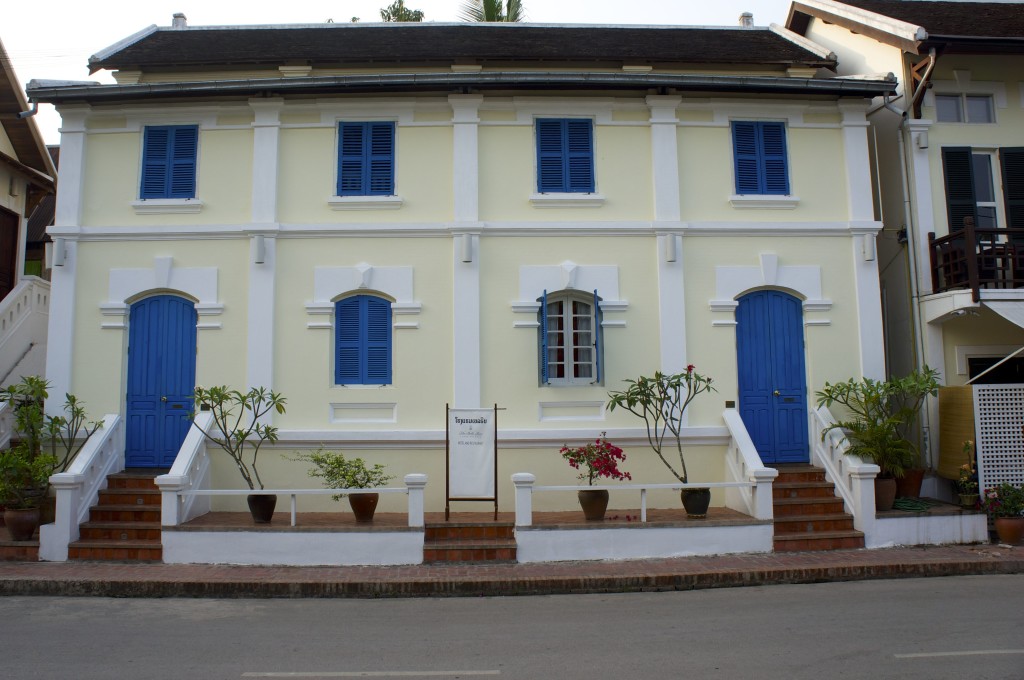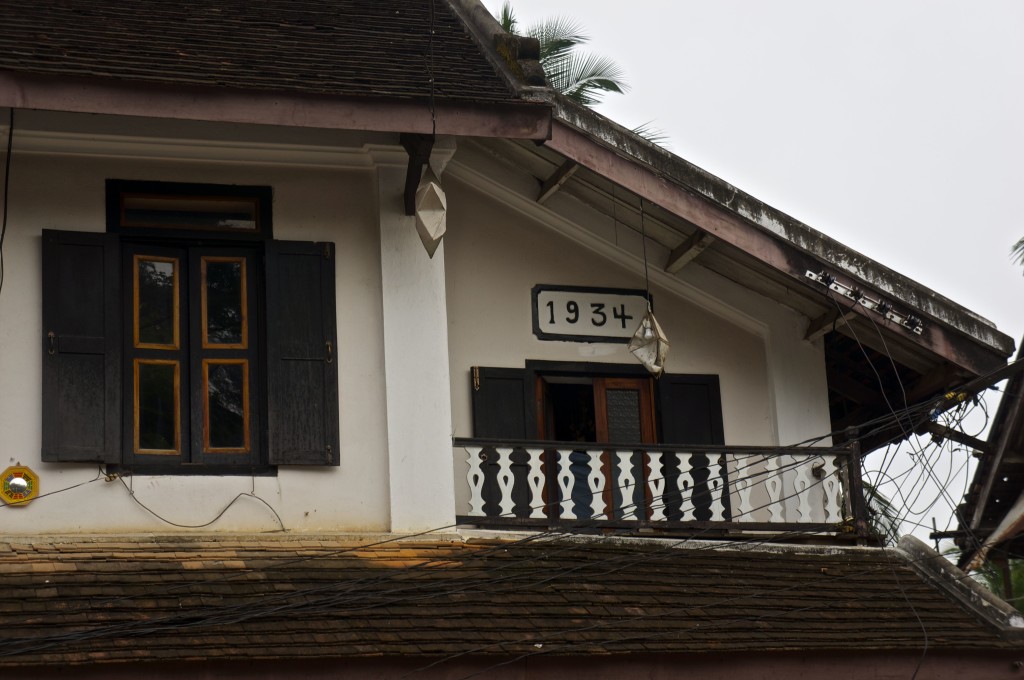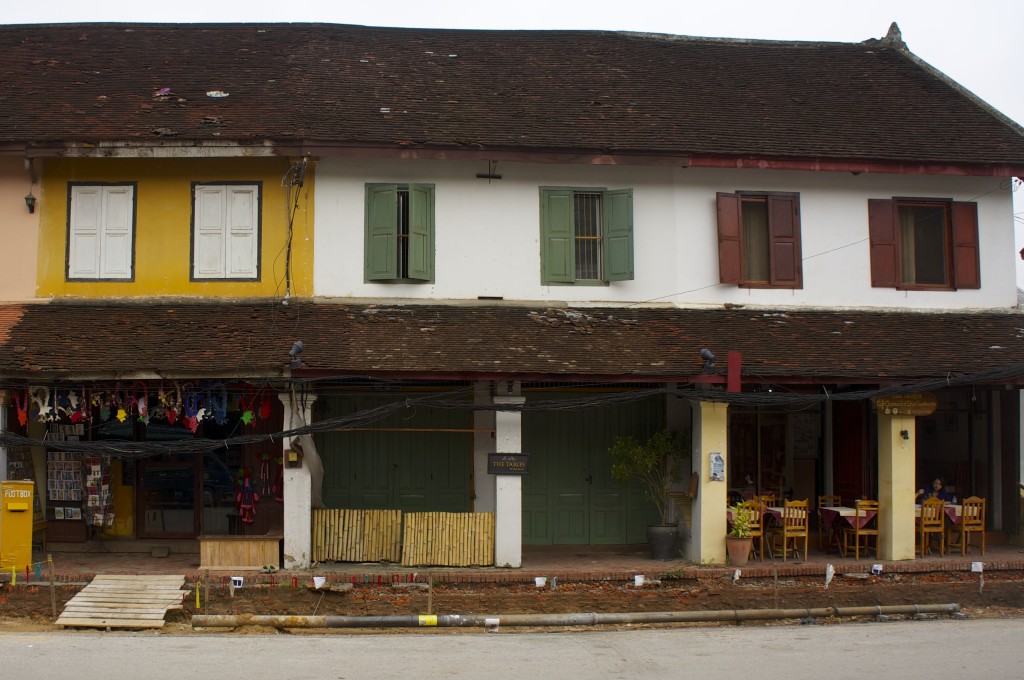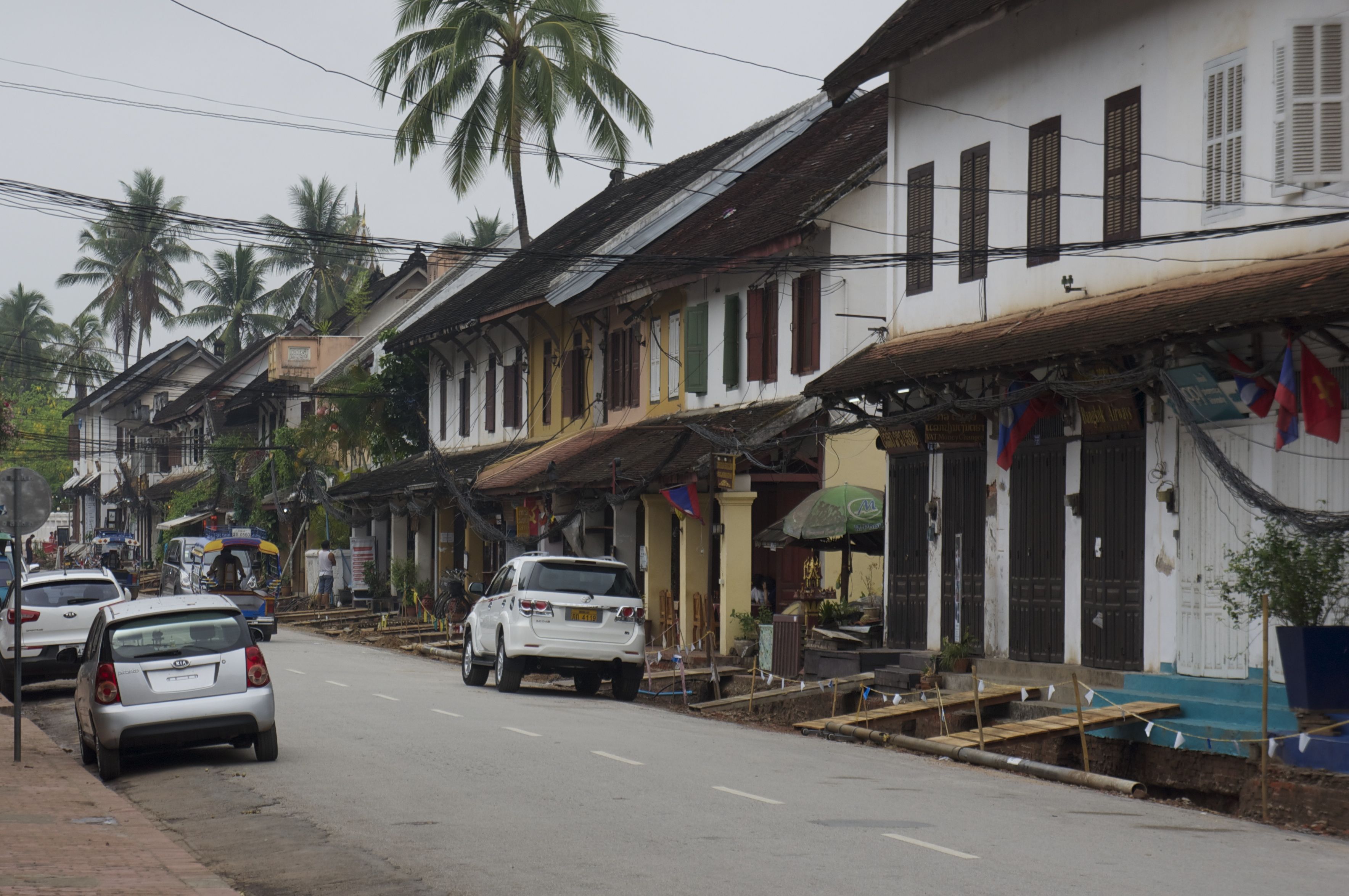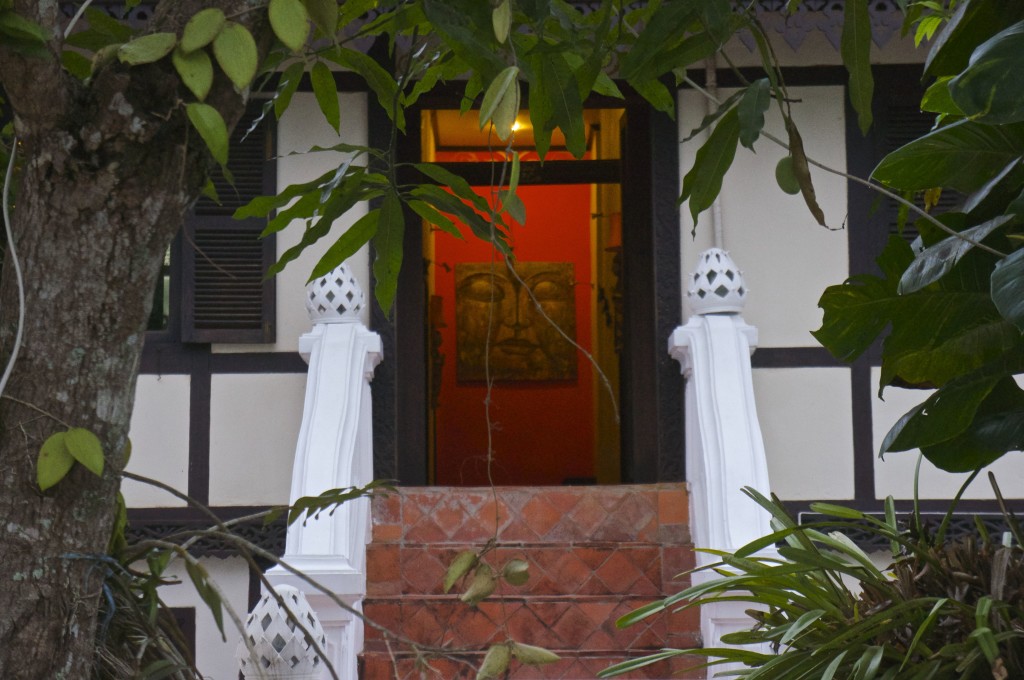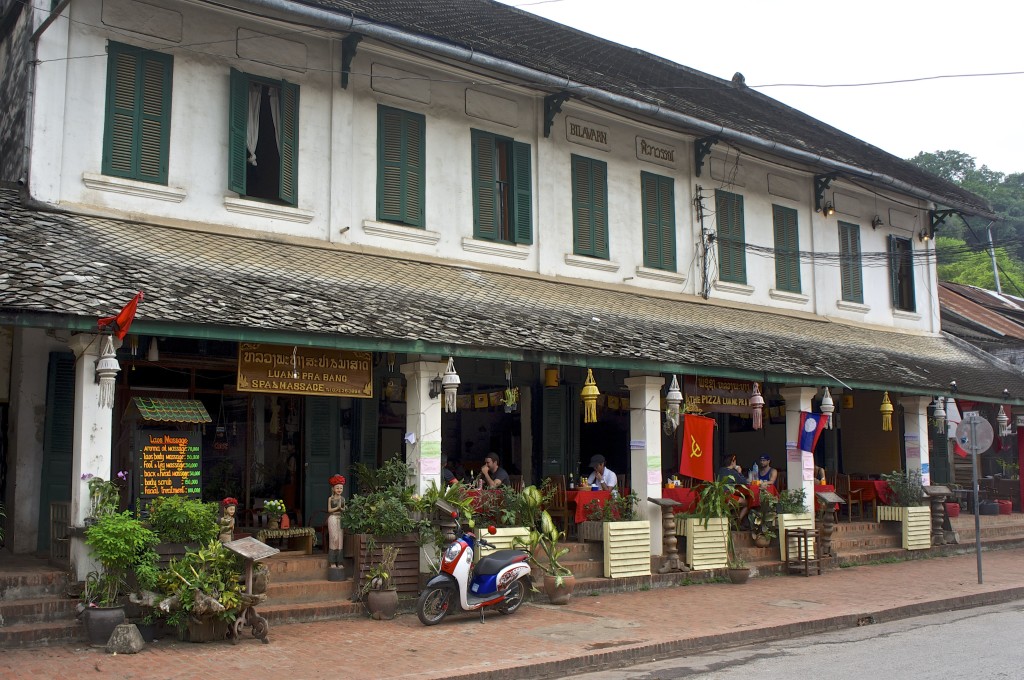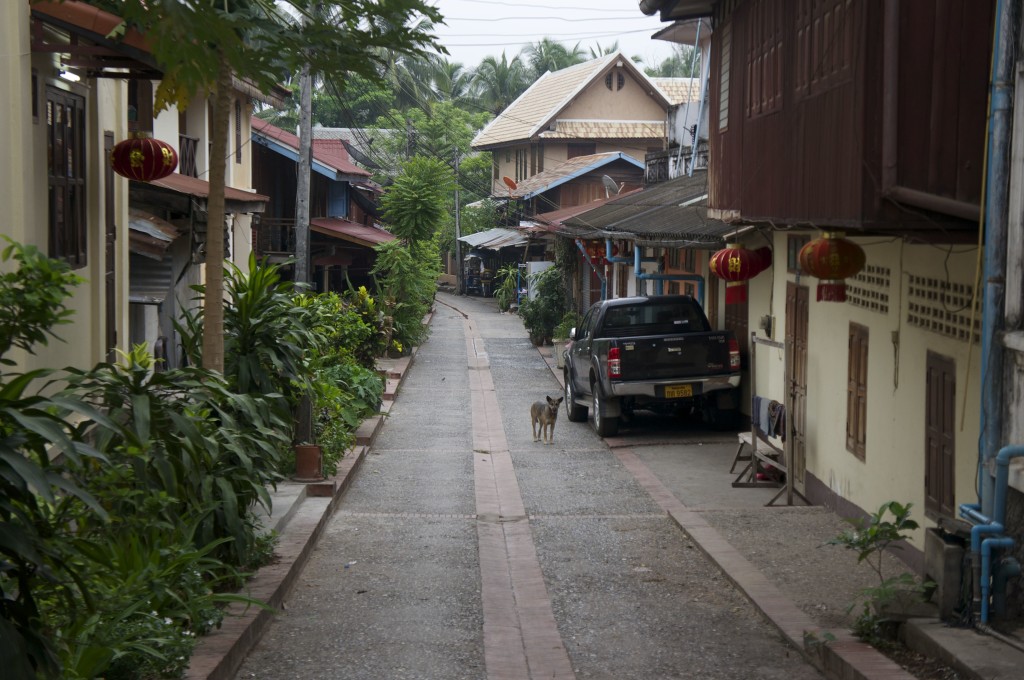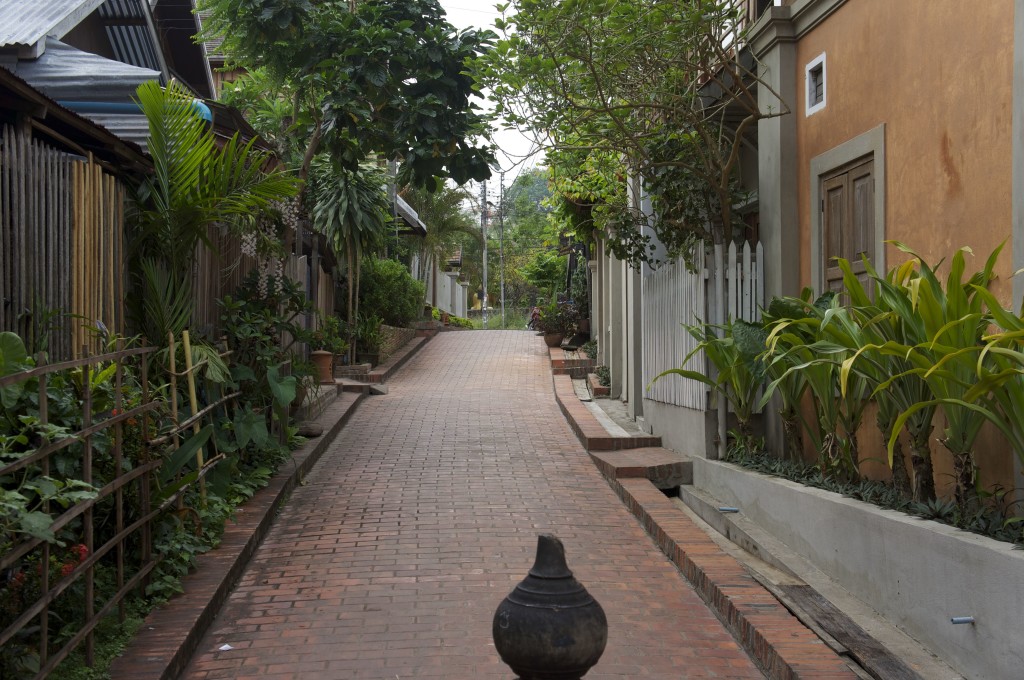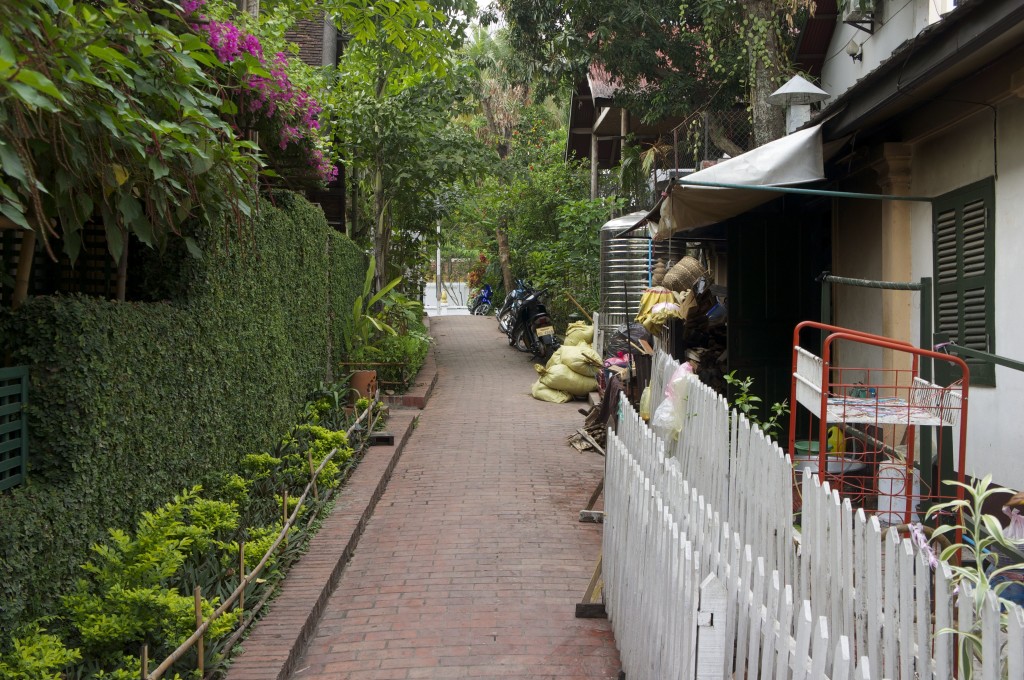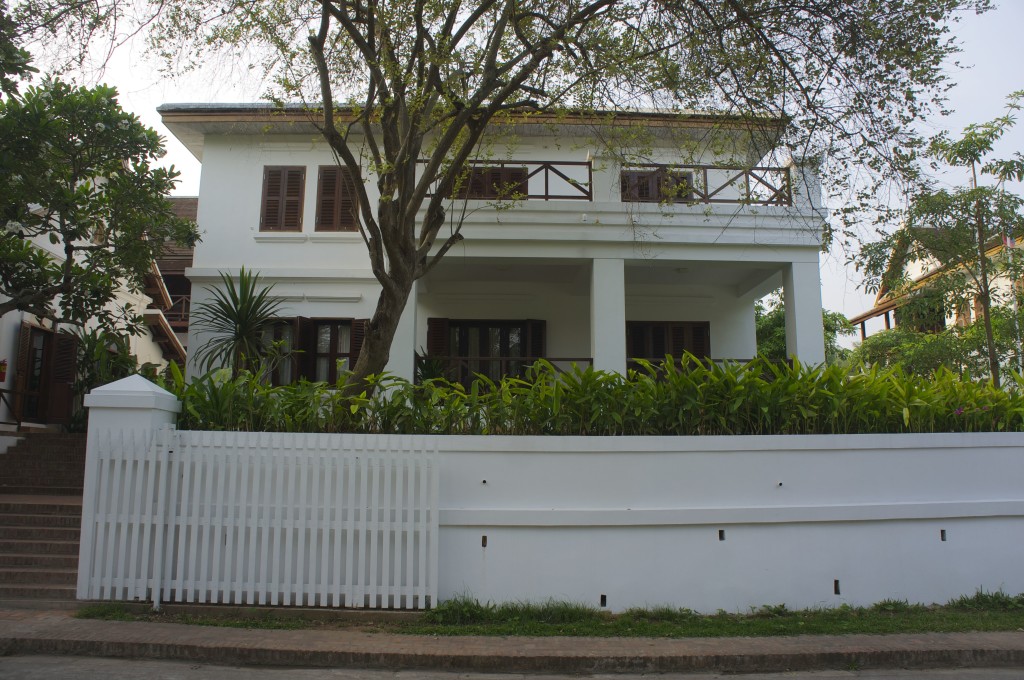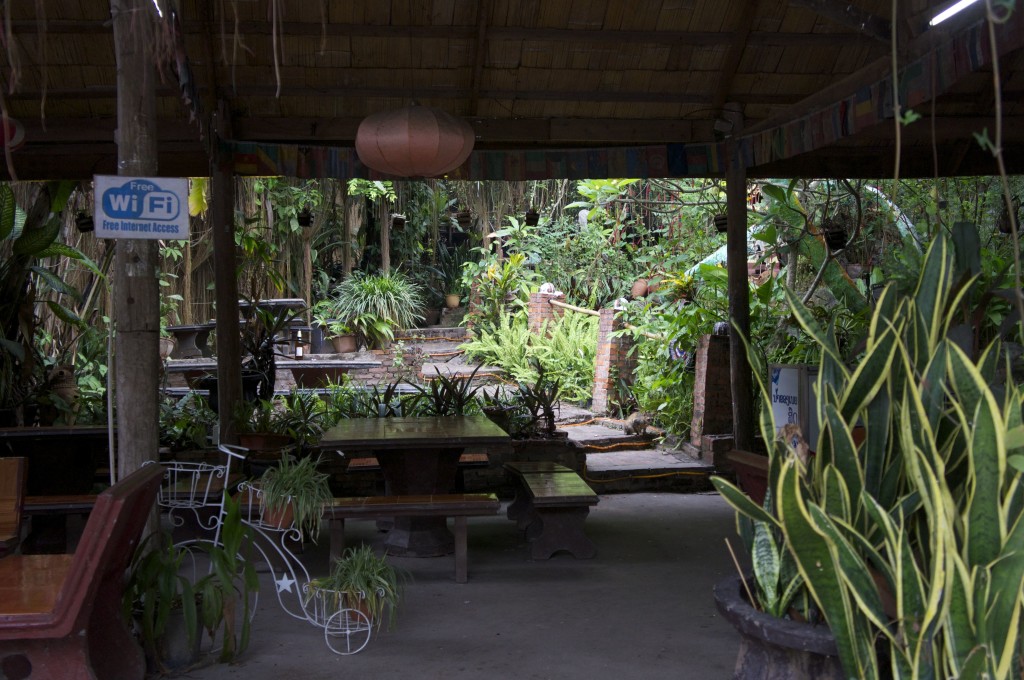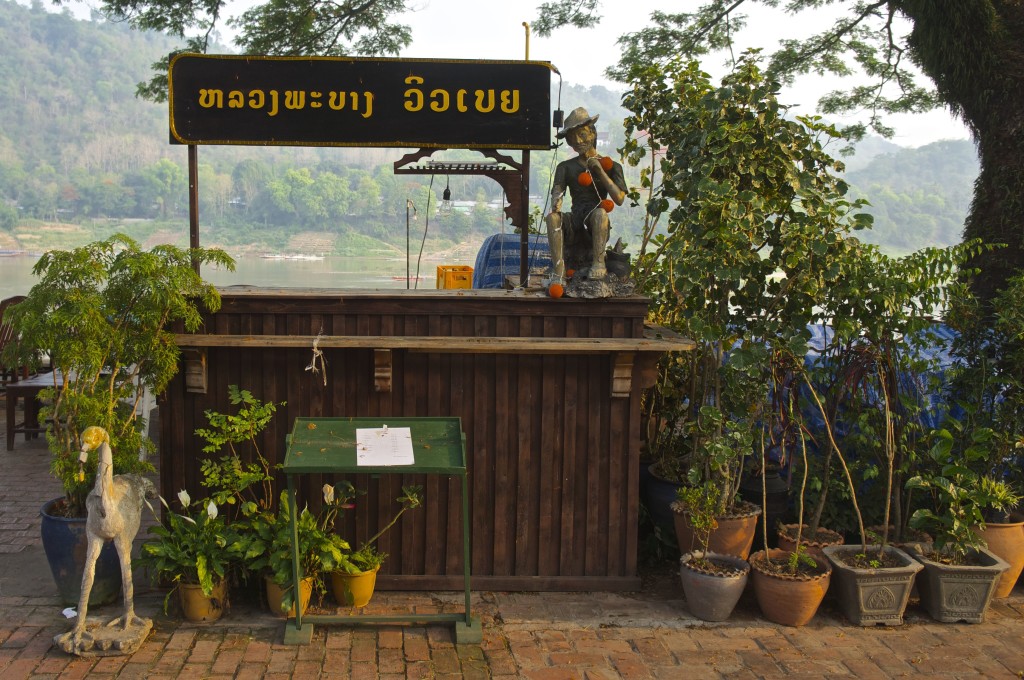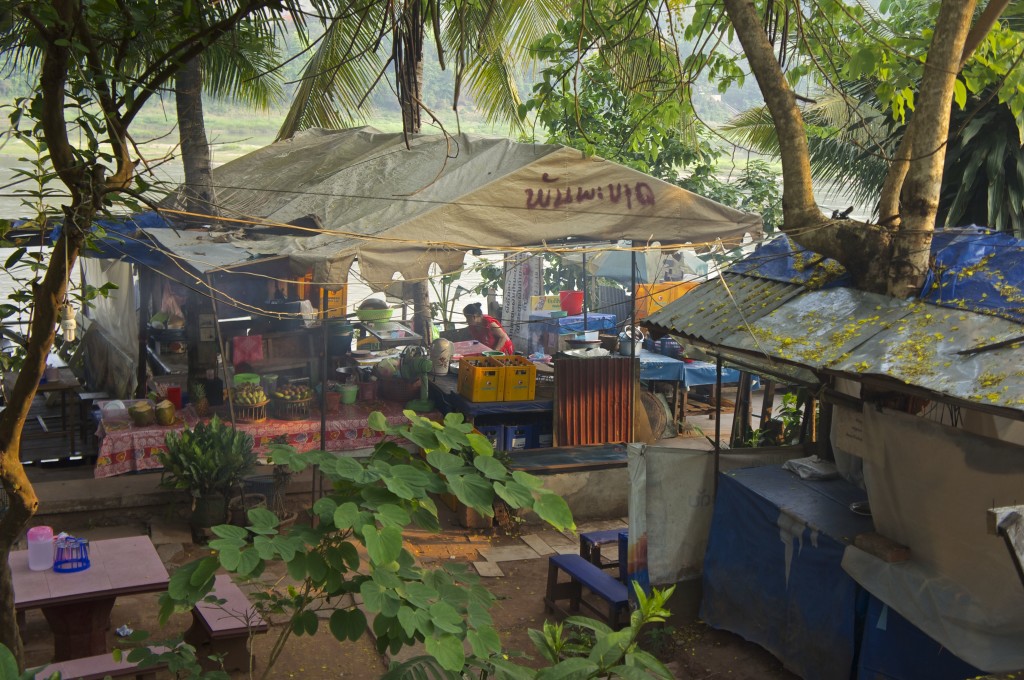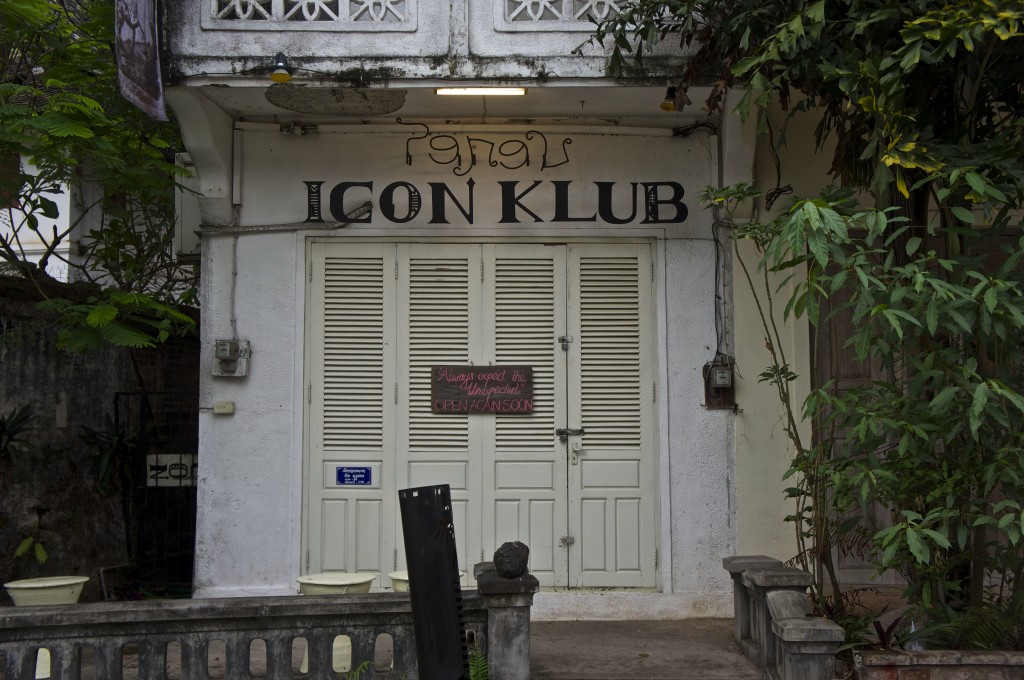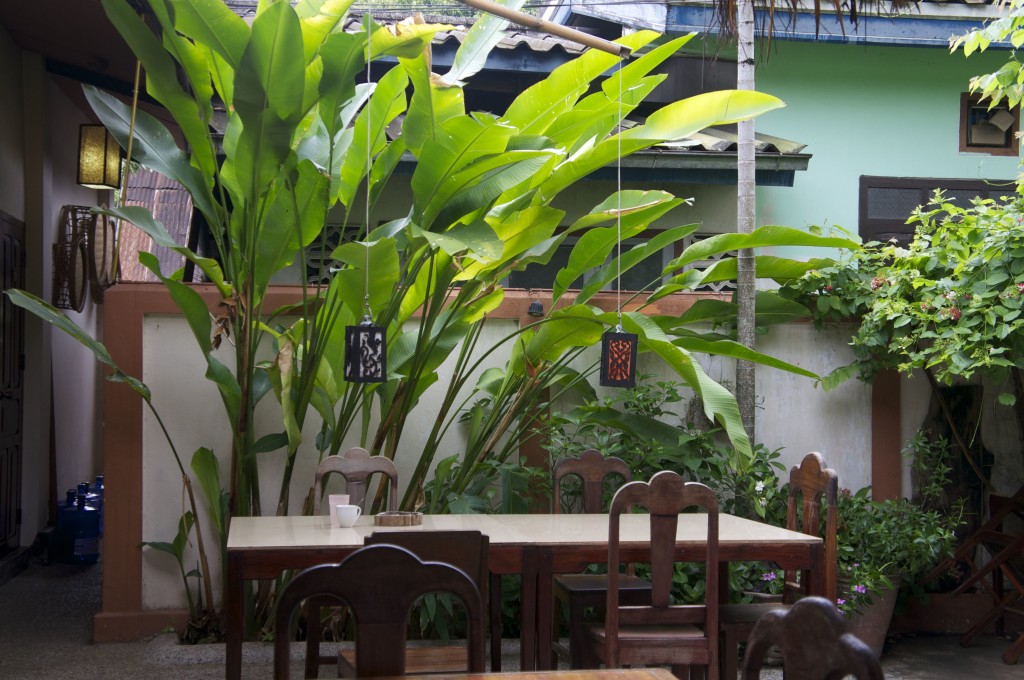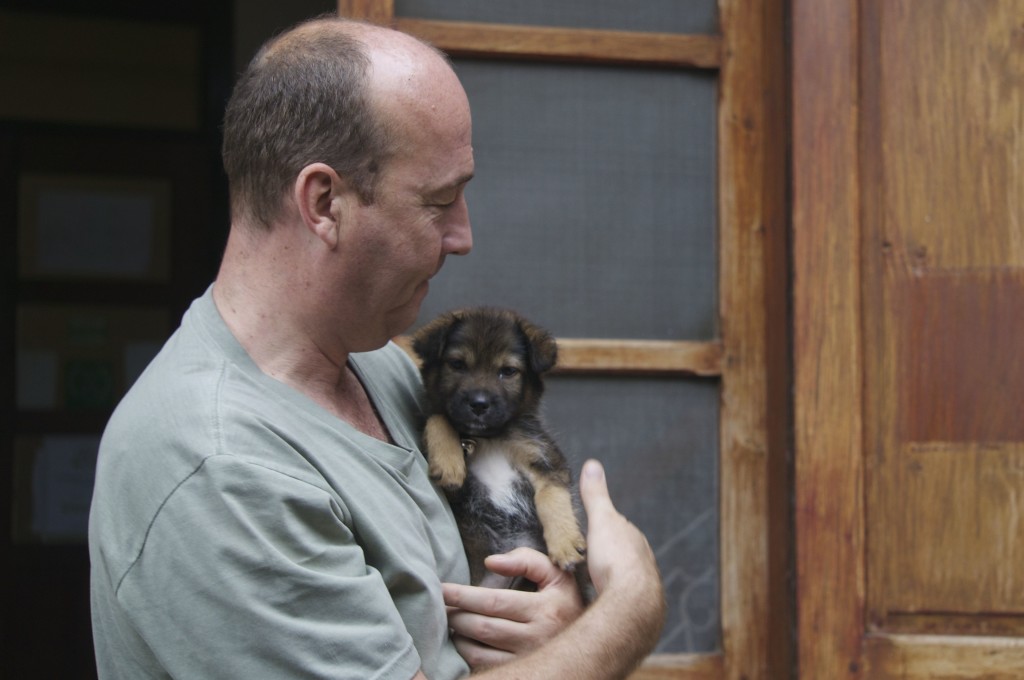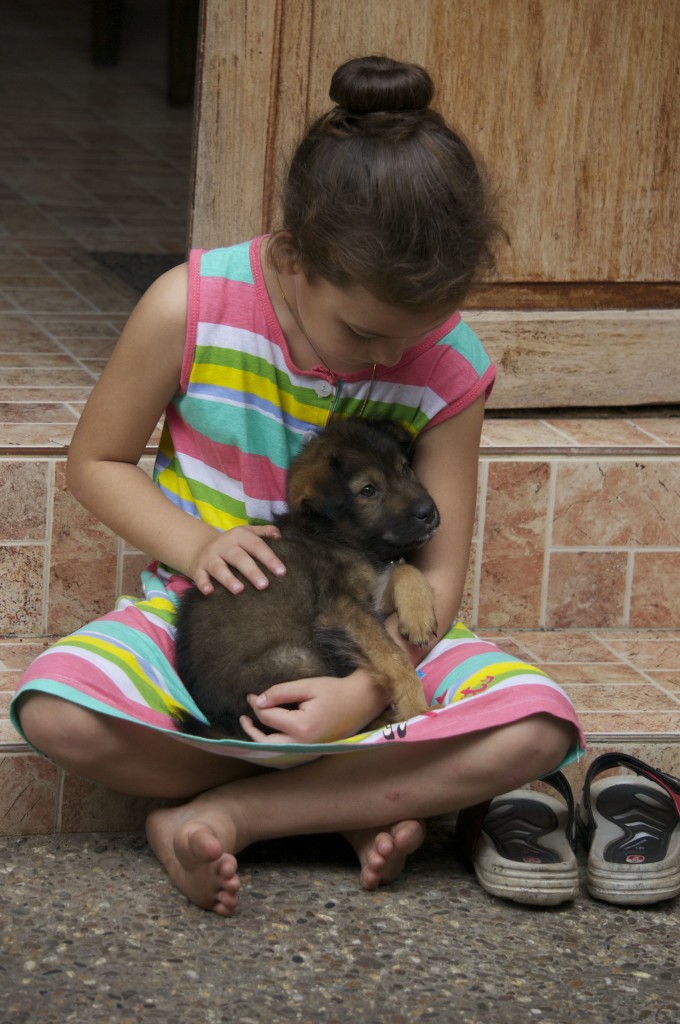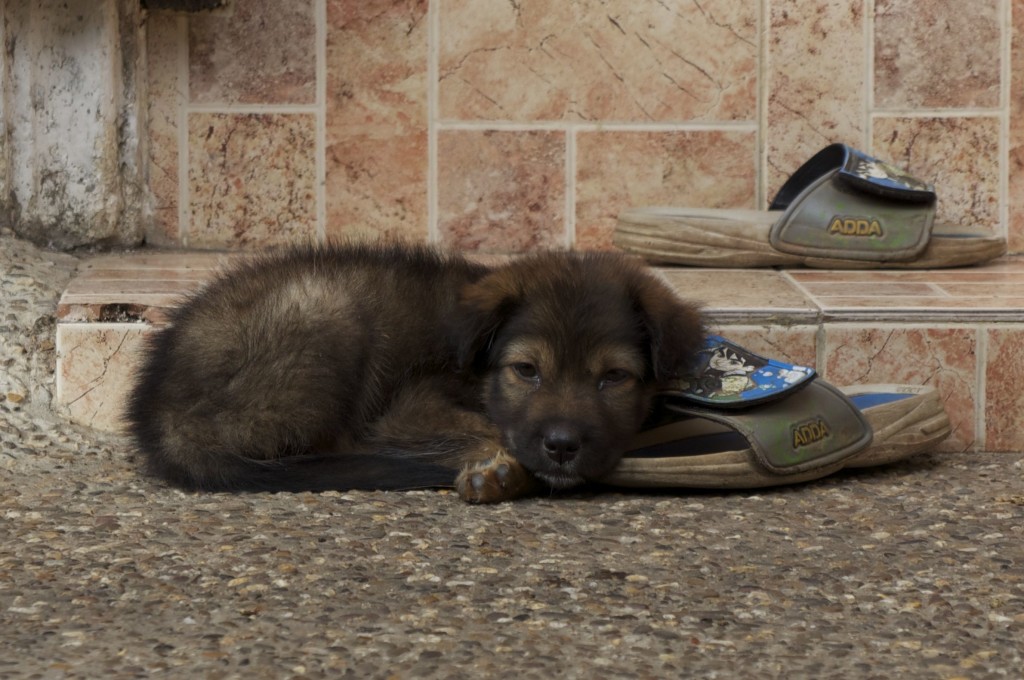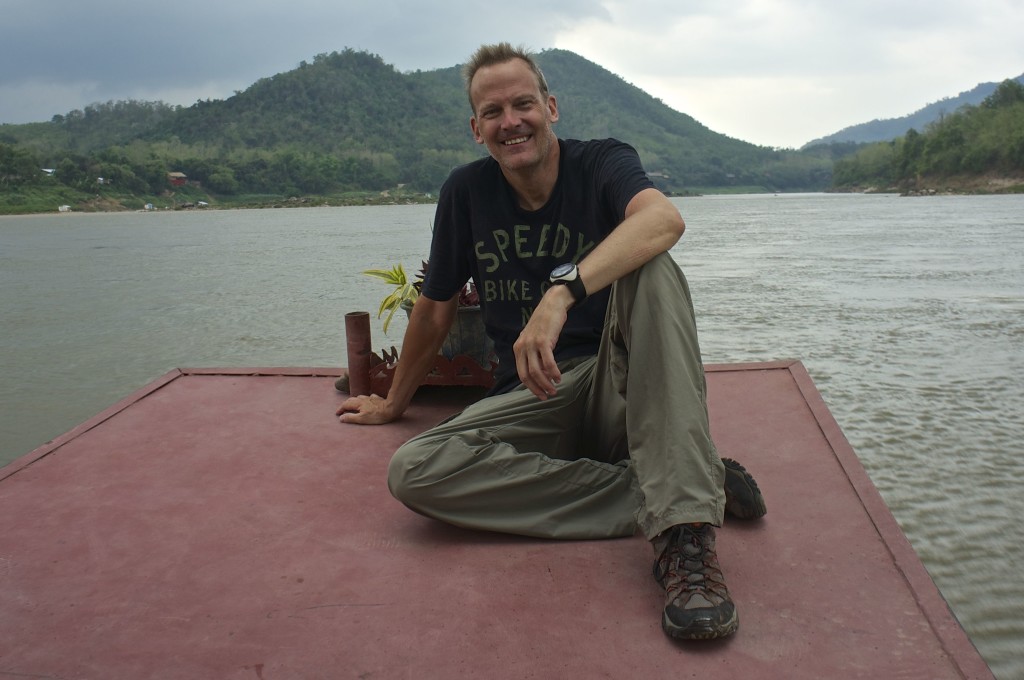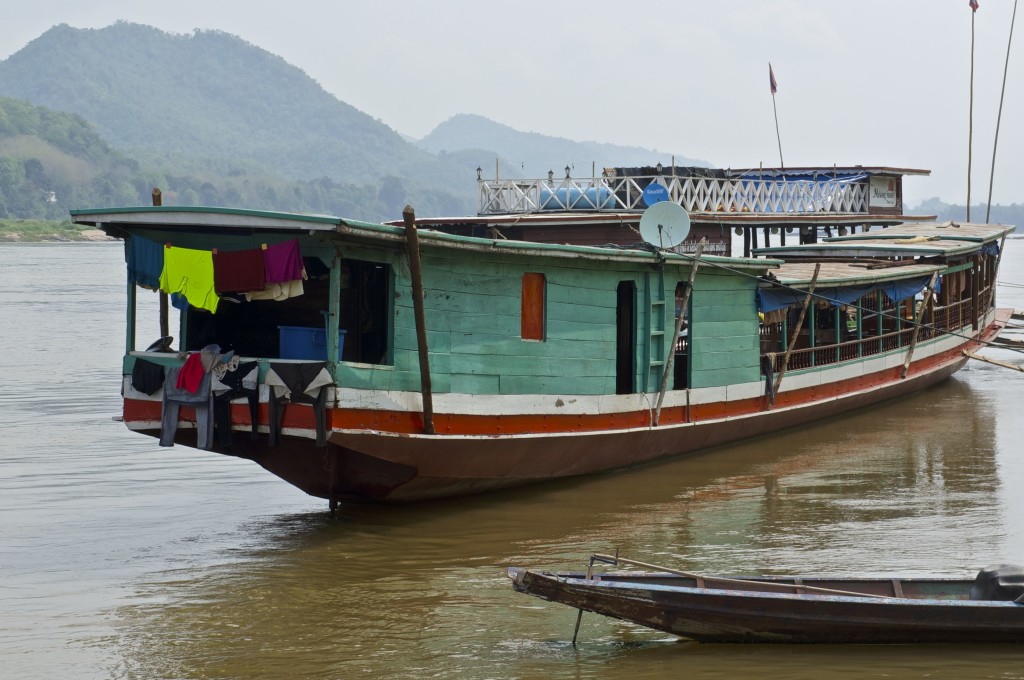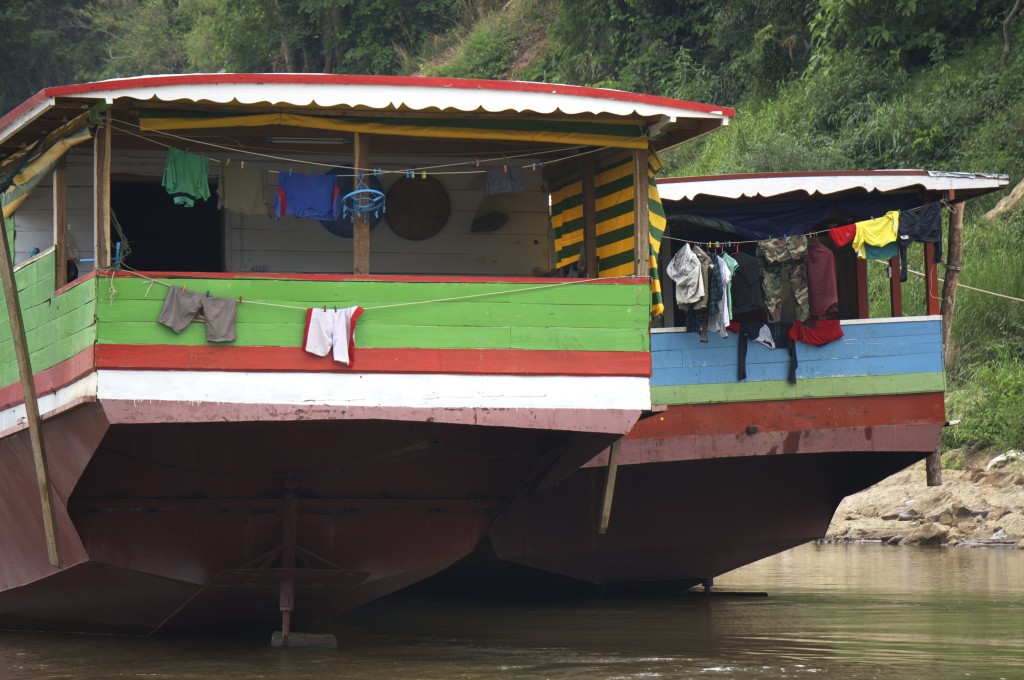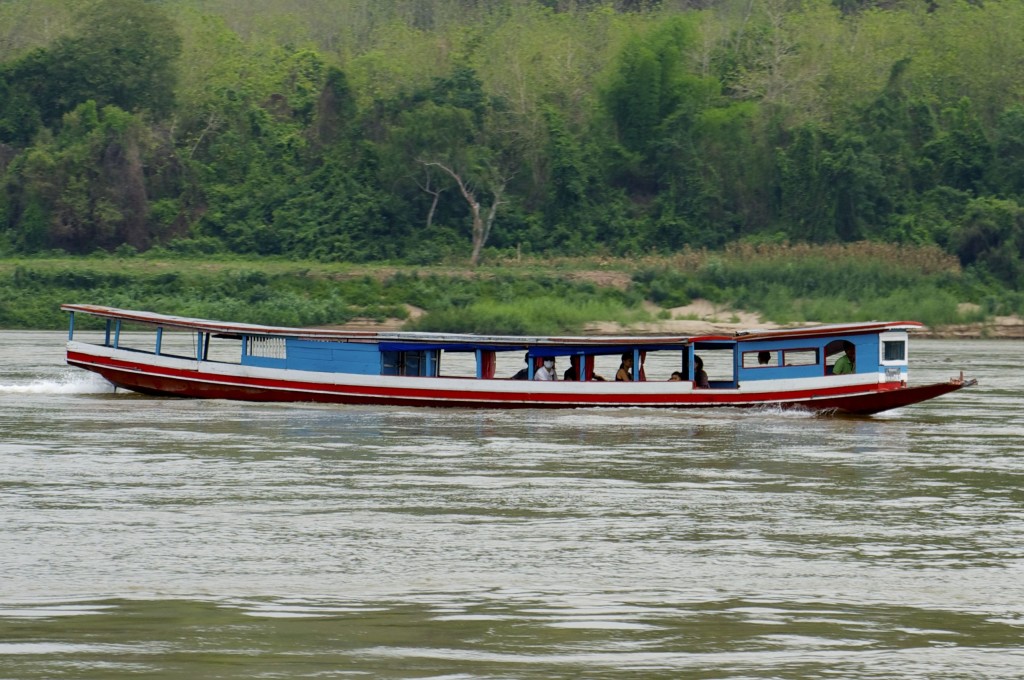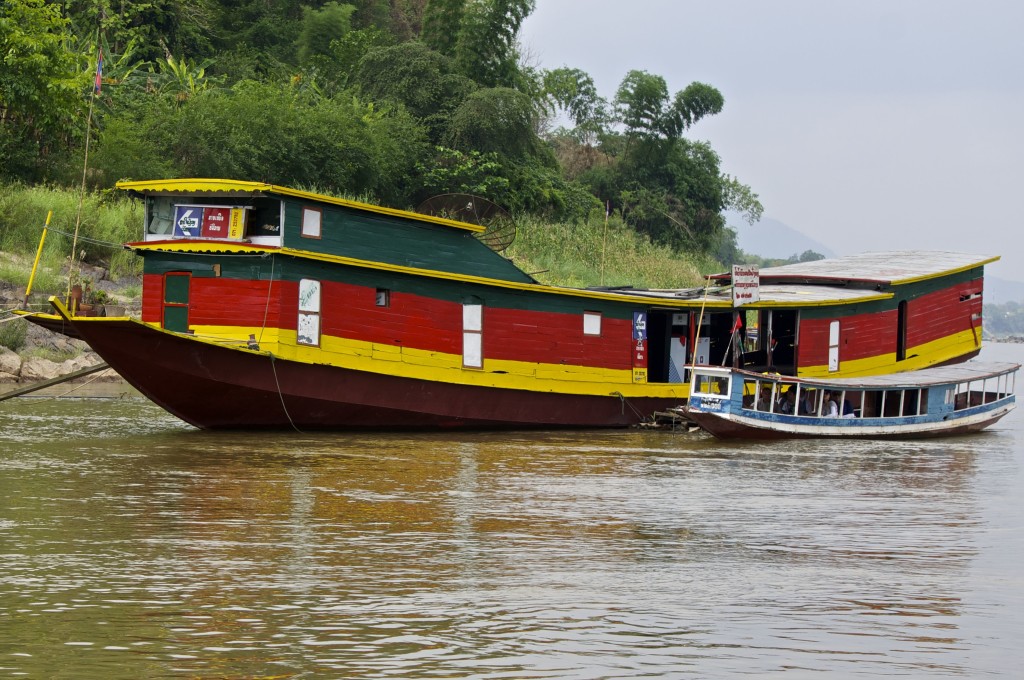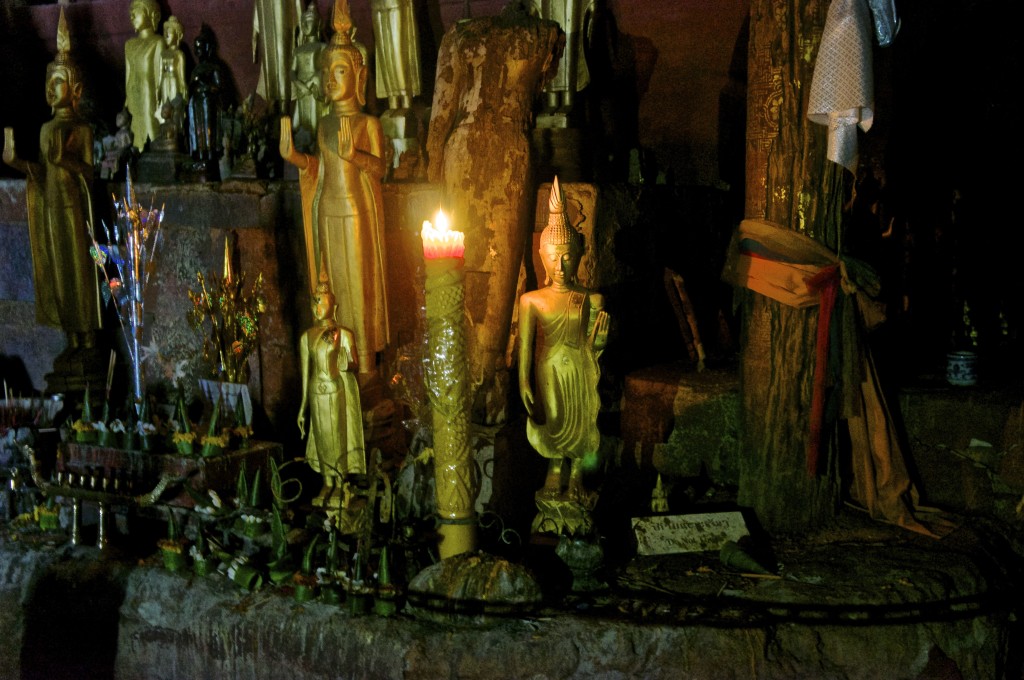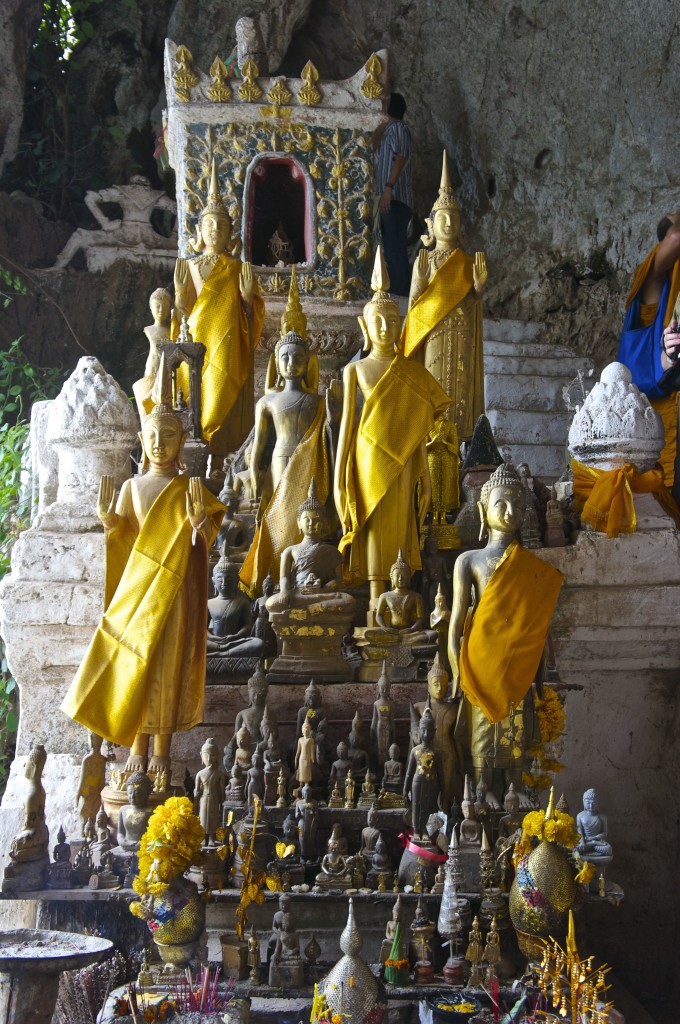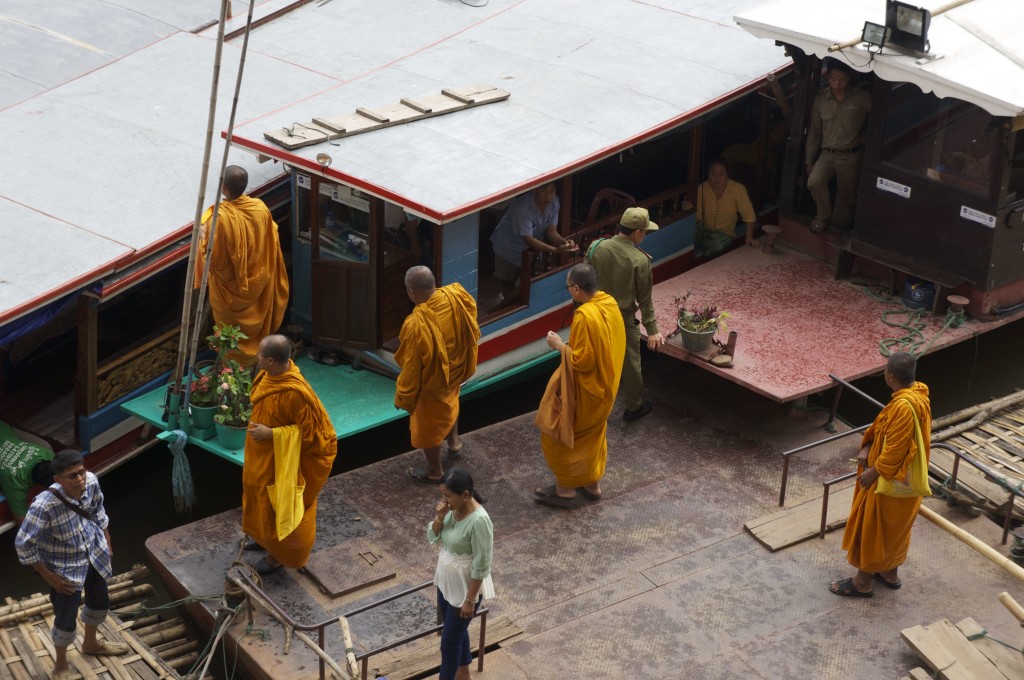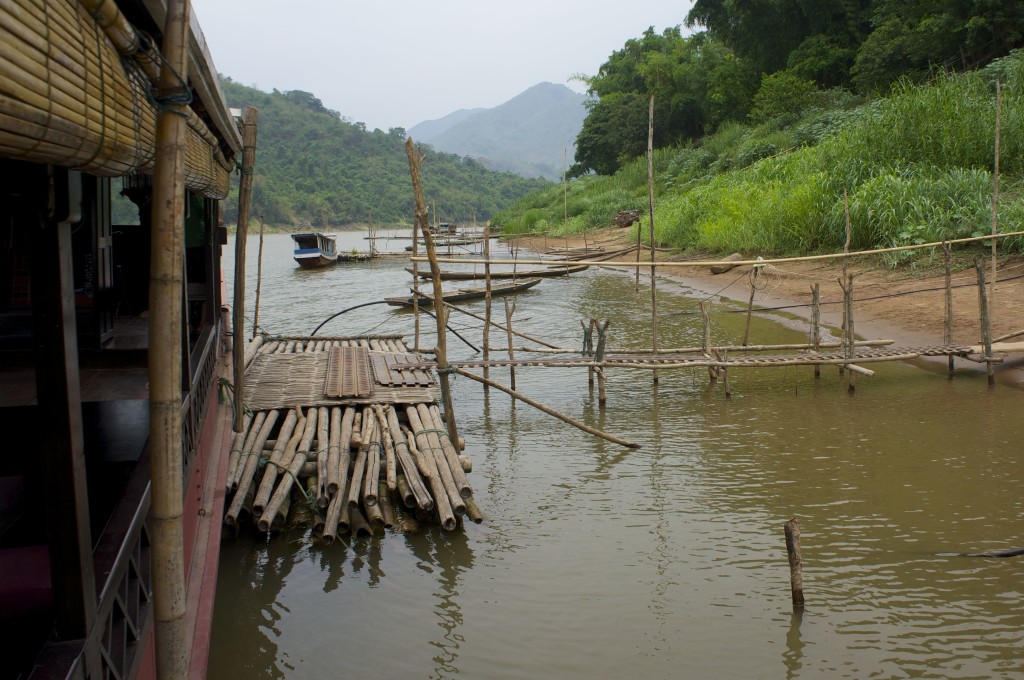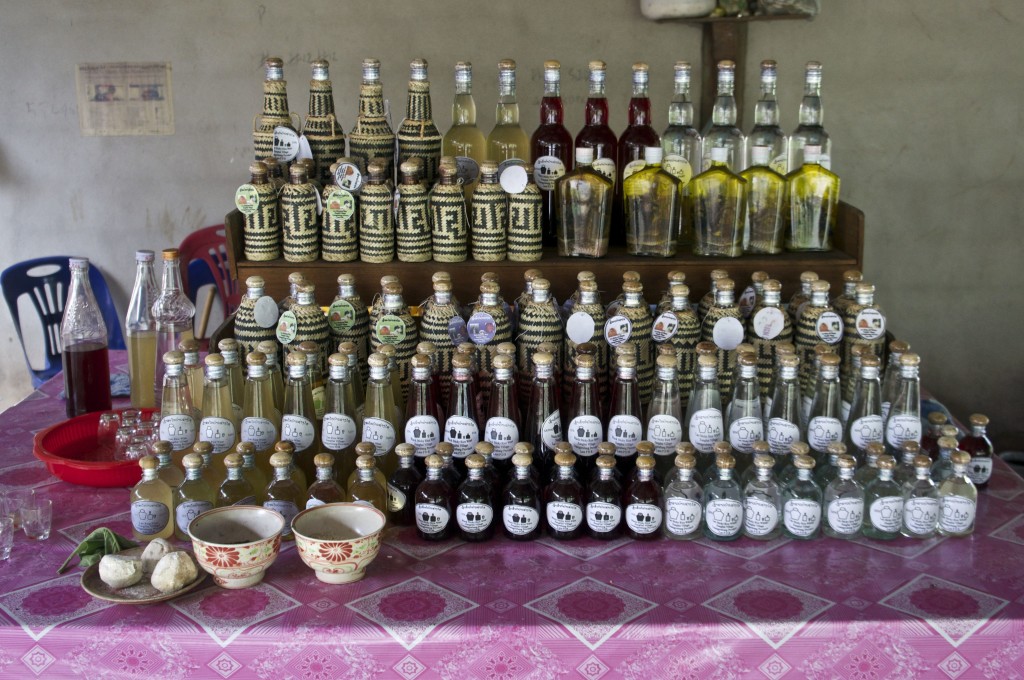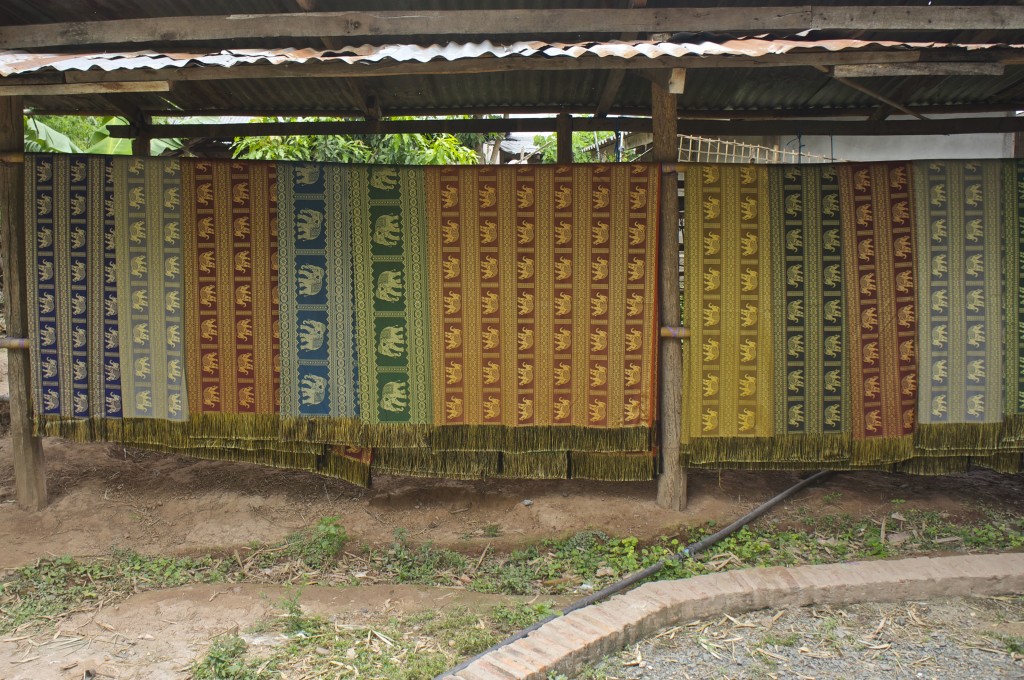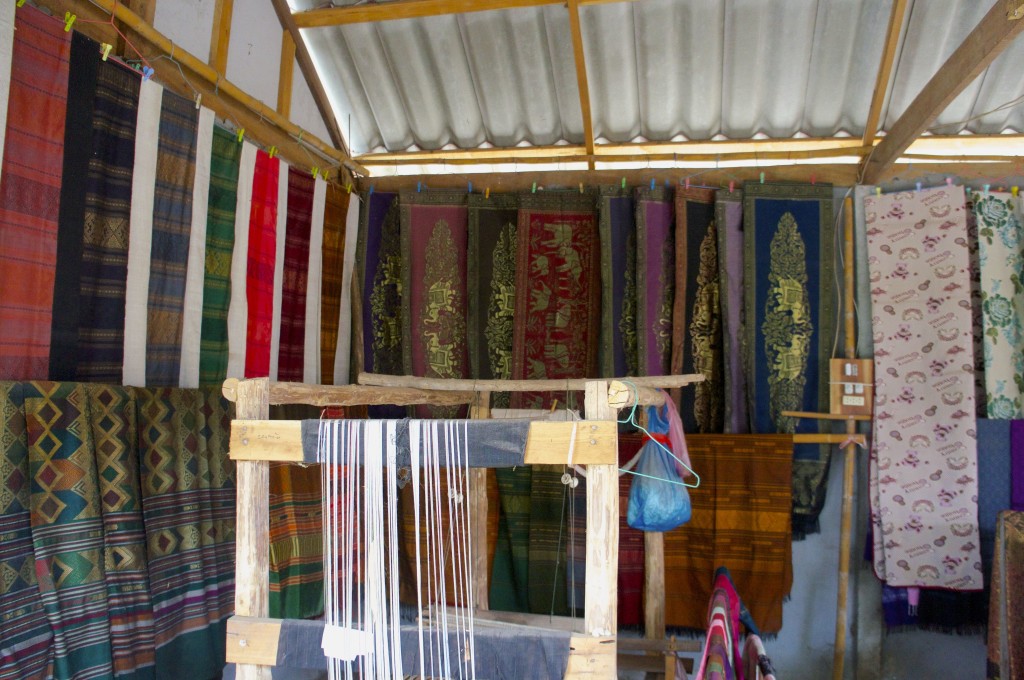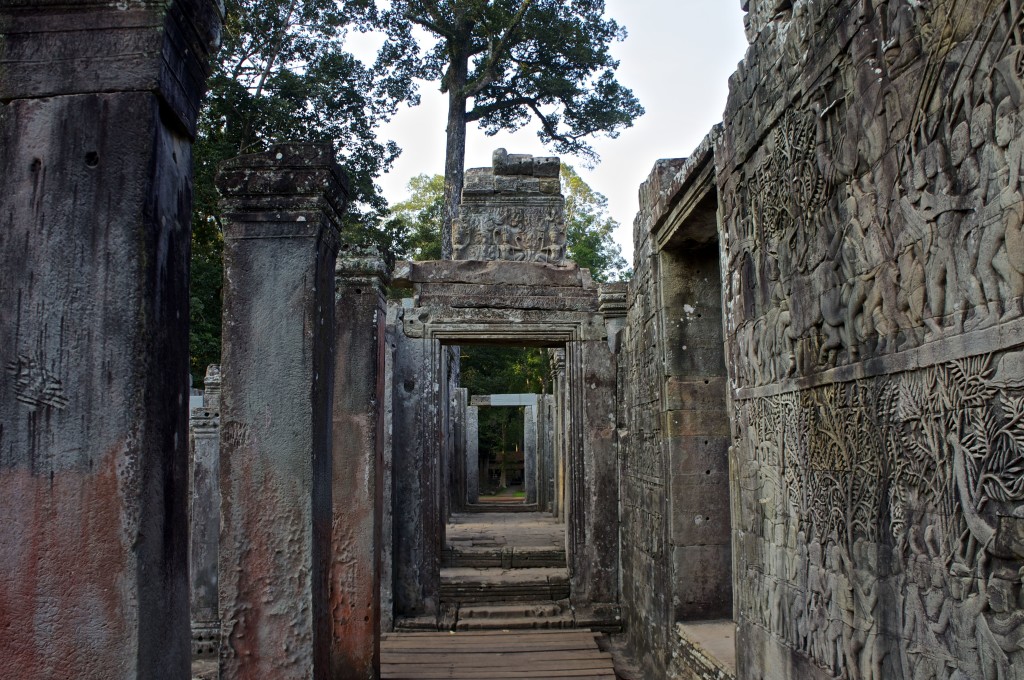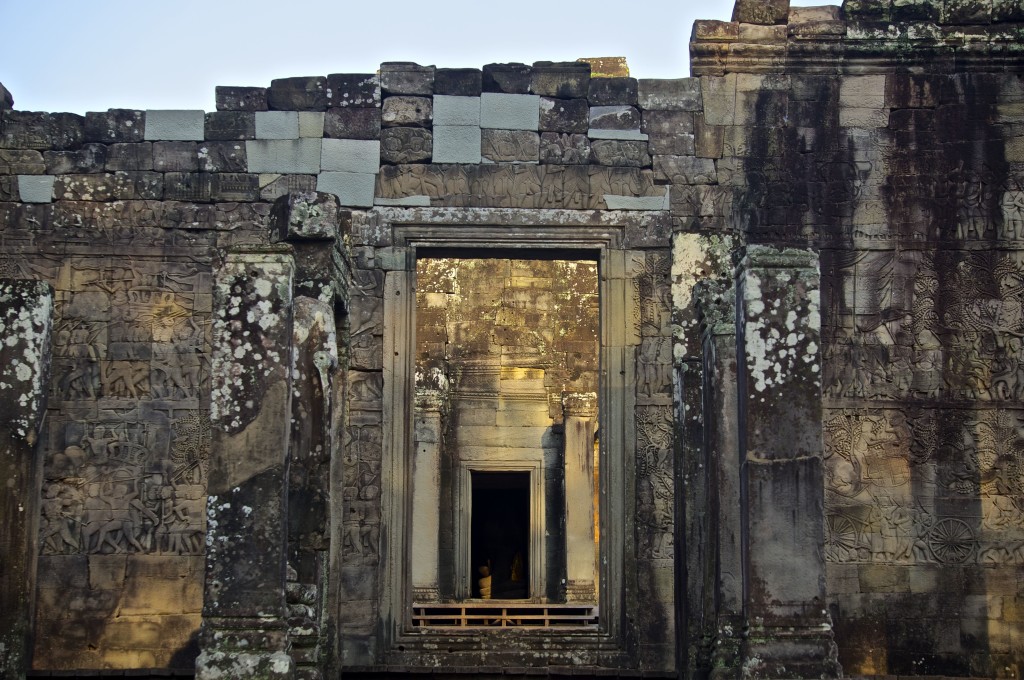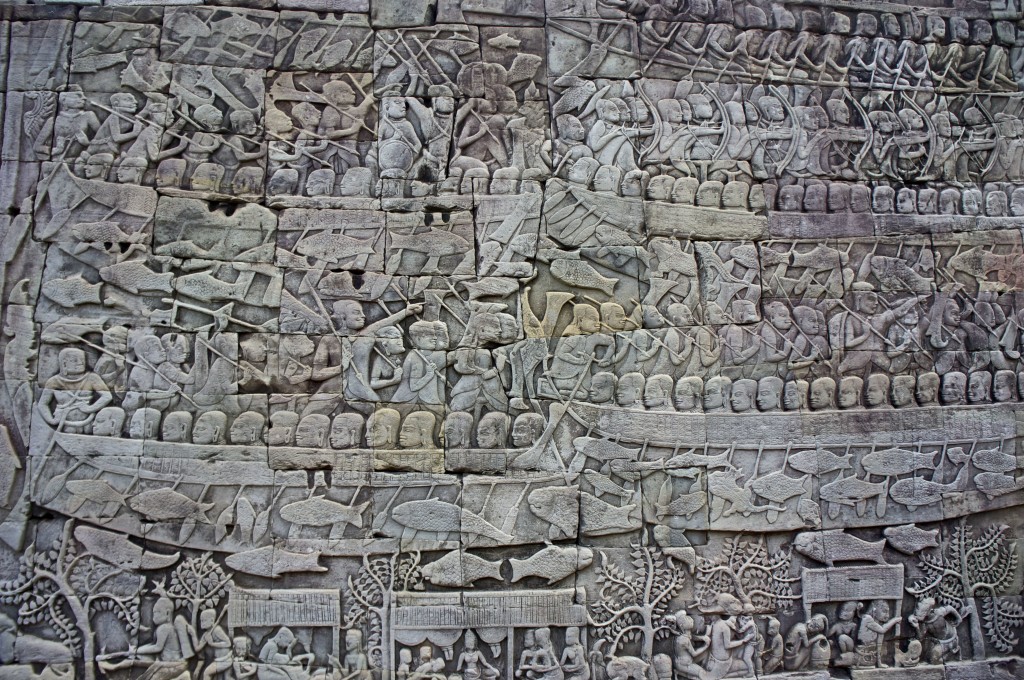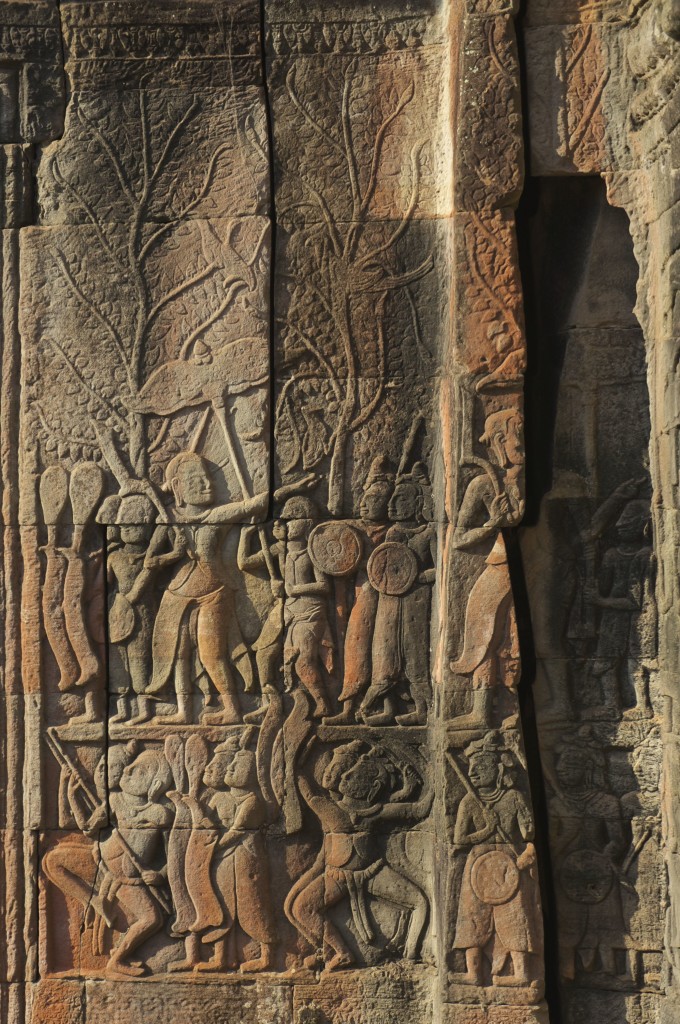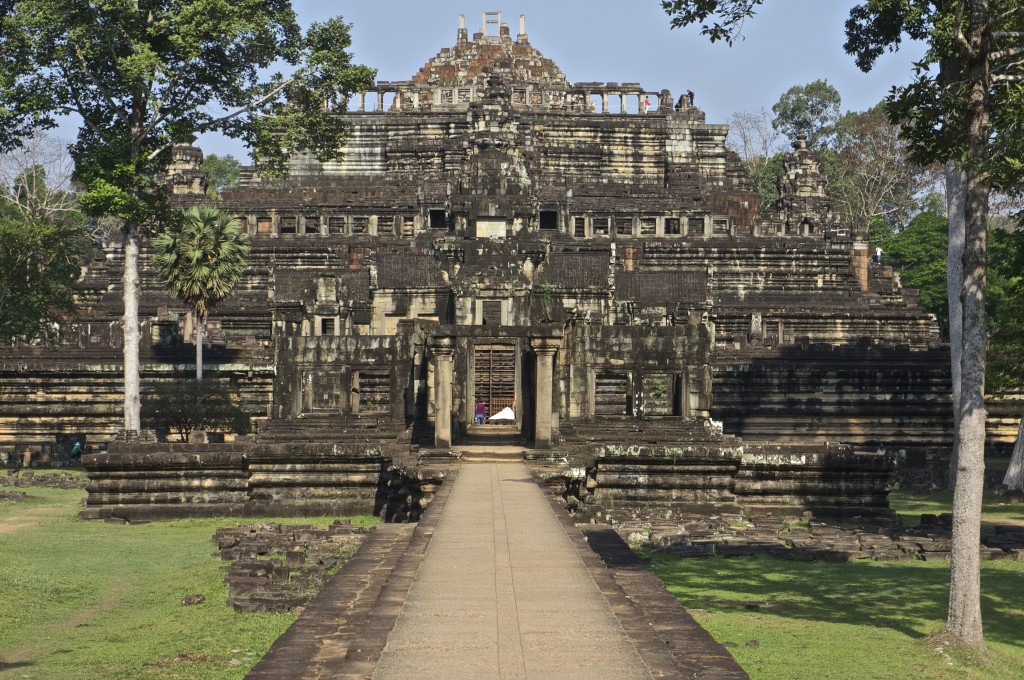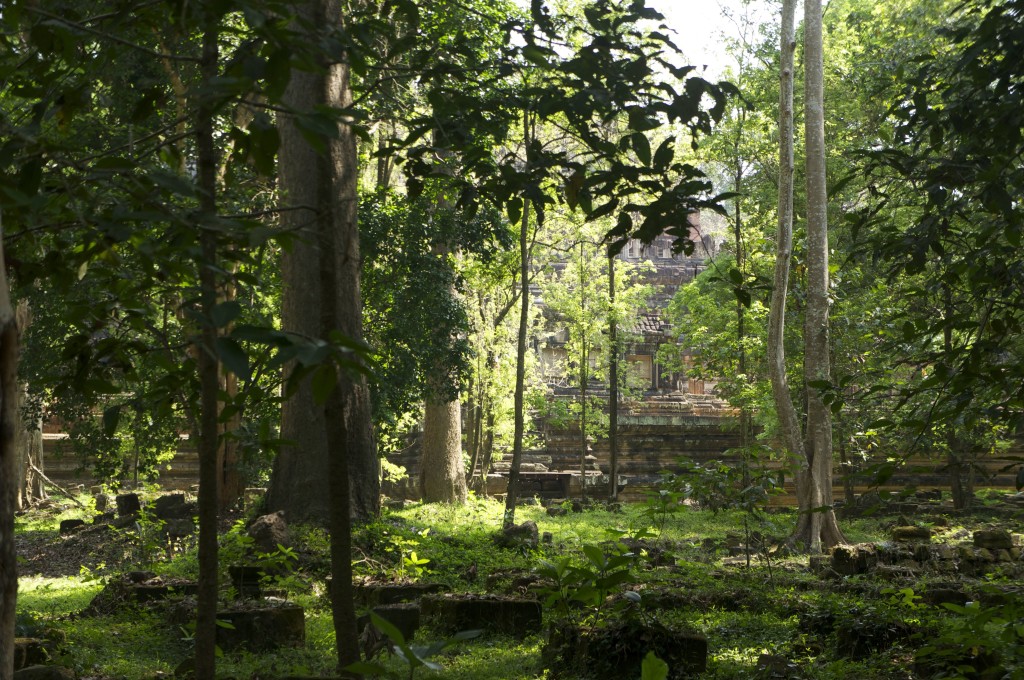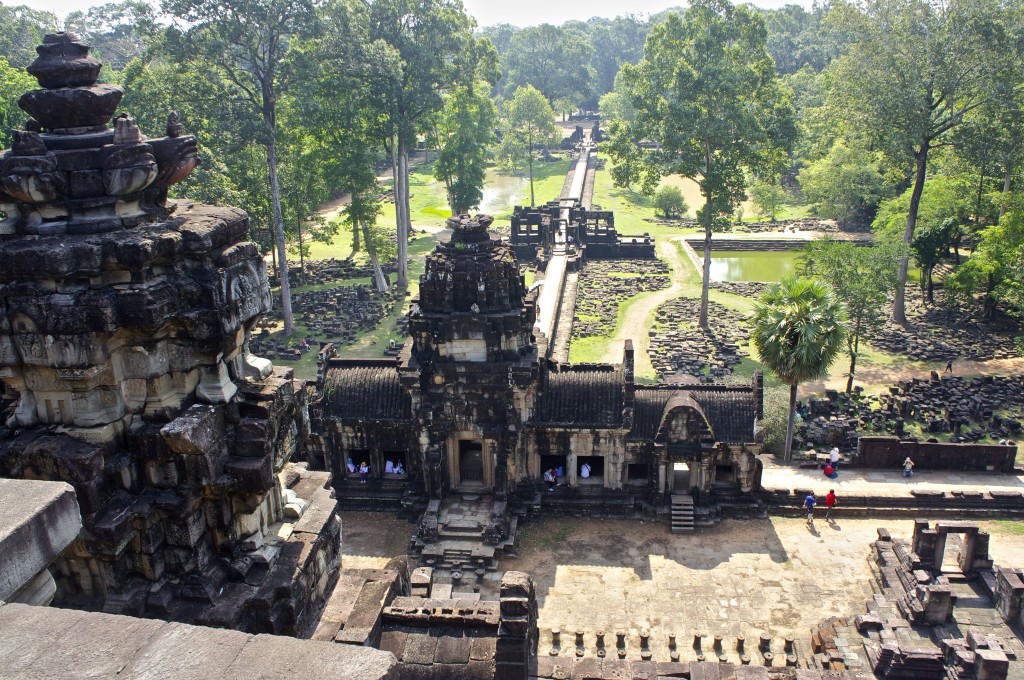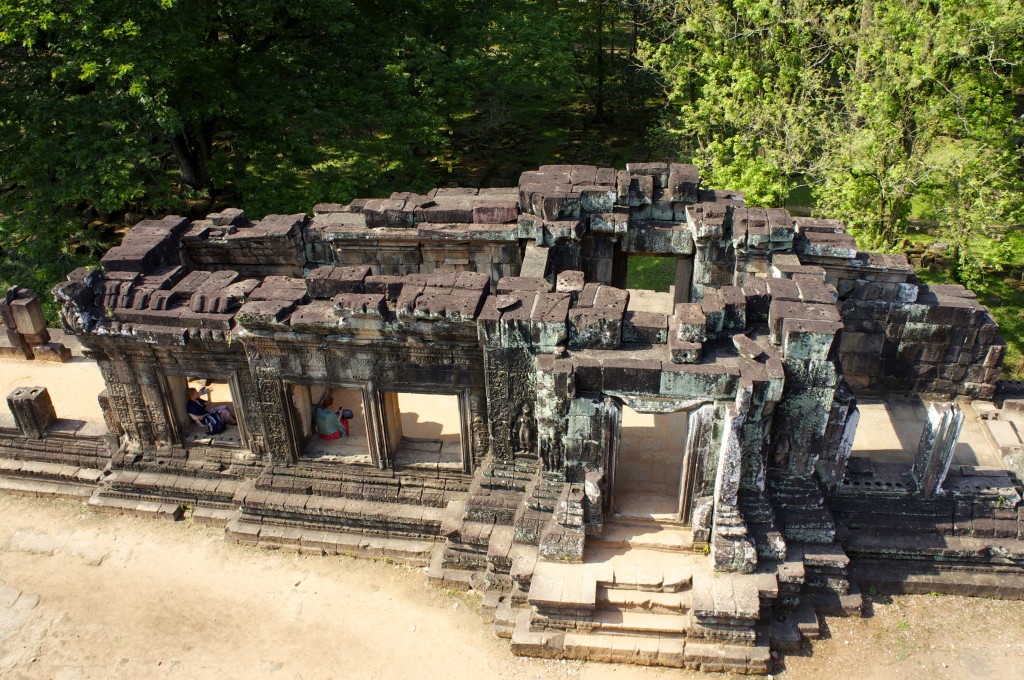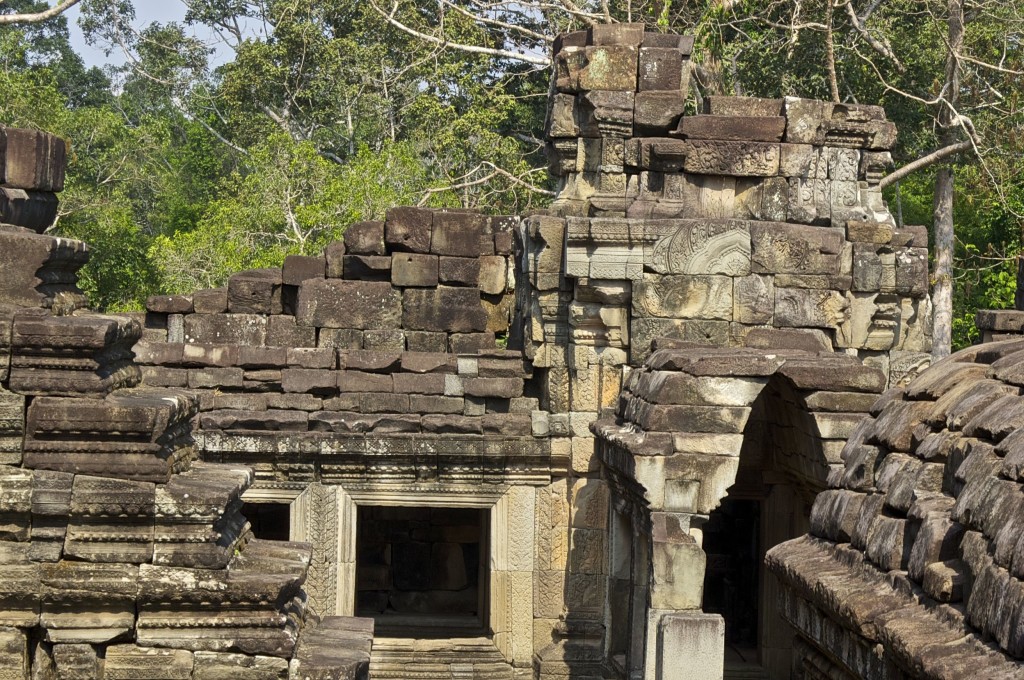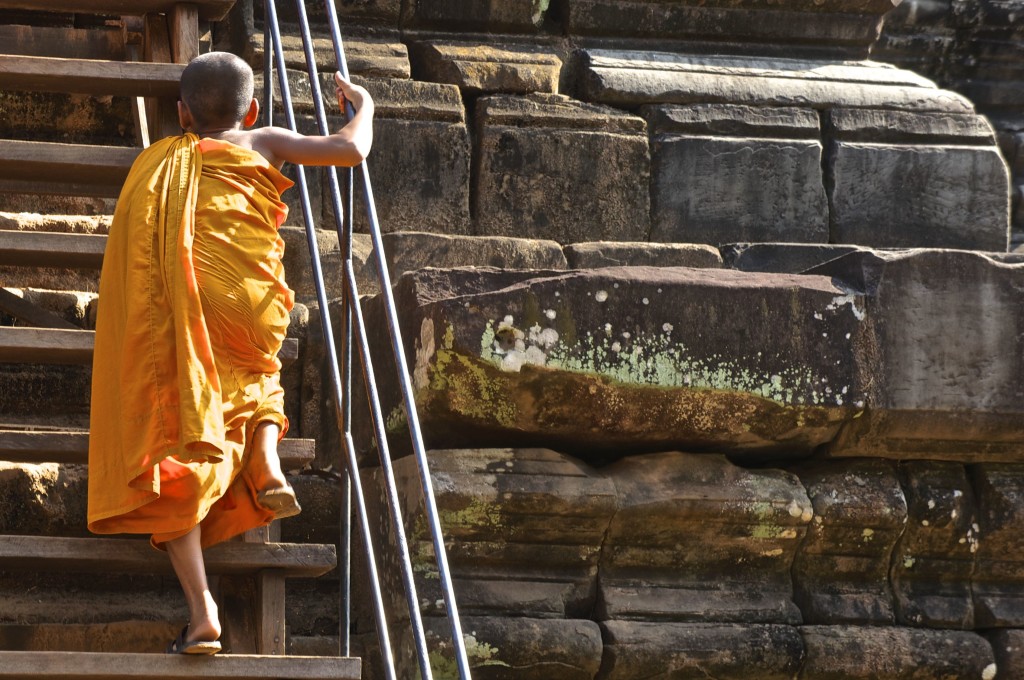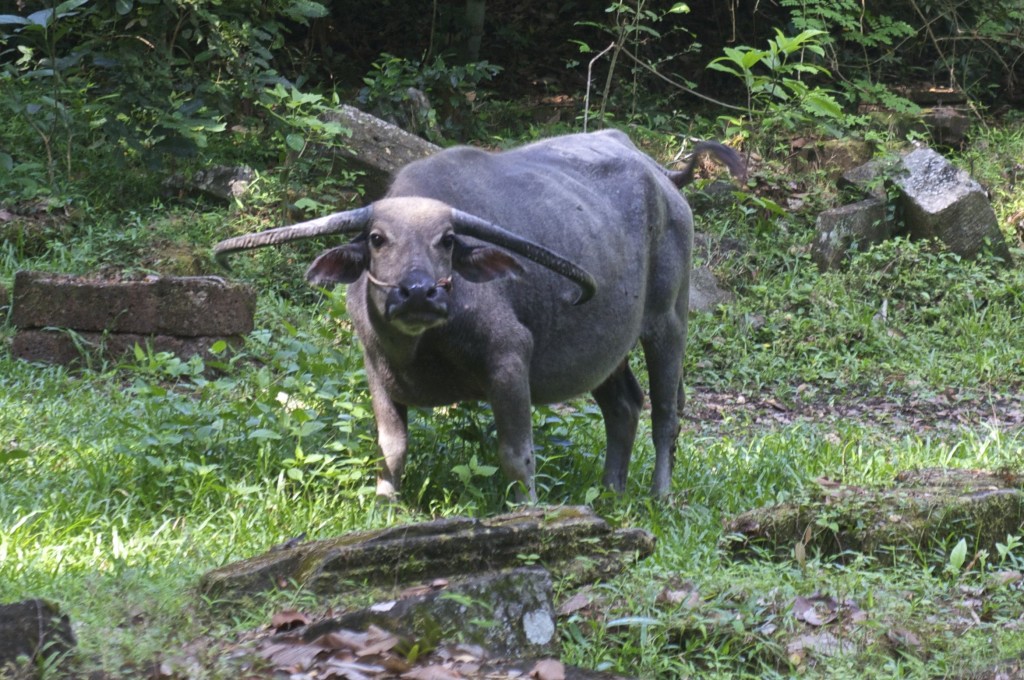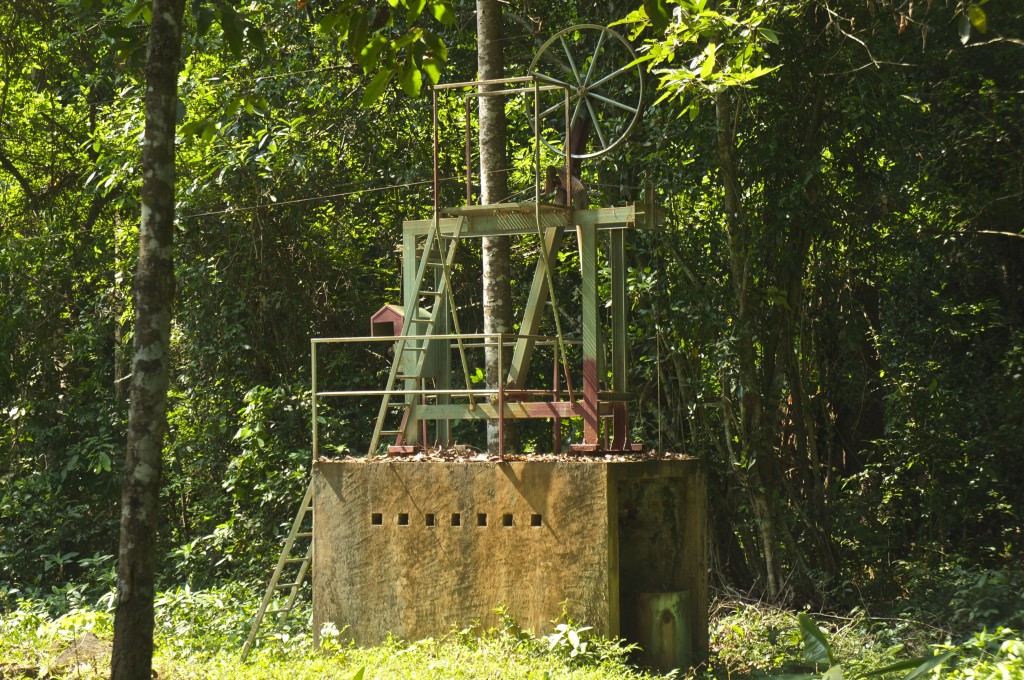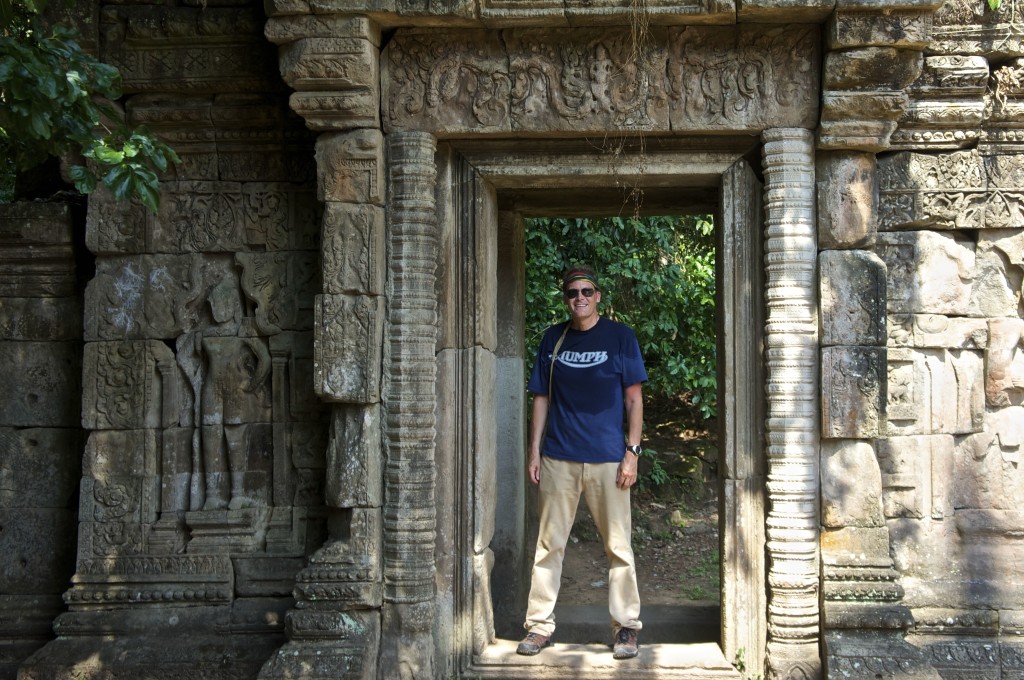Mobile phones are rapidly making the payphones of Kuala Lumpur obsolescent. They look lonely now. In five days of walking the city, I never once saw one being used. Their days are numbered. They stand stoically on the streets waiting to be ripped off their moorings and sent to the scrapyard. And so before they are gone for good, I made it my mission to photograph every one I saw and then to reinterpret them as the vital instruments they once were.
Kuala Lumpur: The Petronas Towers
After walking a circle around the Petronas Towers, I was ready to call them the most beautiful skyscrapers to be built in the last 25 years. Maybe even the last 75. I mentally catalogued the influences I saw in their design. Art Deco and the streamline look from the ’30s. Angkor Wat’s textured, tapering spires. The Chrysler building’s gleaming metal decoration. Steampunk detailing. And yet despite all these themes, the structure is not a hodge-podge of design. It works so well because it looks to the past and the future in equal measure.
The towers can be seen from all over Kuala Lumpur.
They drew me closer.
When I finally arrived, I was hamstrung by the scale of the place. How do you take a picture of something that large?
I found myself appreciating the building by focusing on its details. I could imagine cars from the 1930s pulling up beside these Deco-influenced exteriors.
The brushed stainless steel (?) exterior is nicely balanced between shiny and matte. It attracted these strange-looking bat-shaped moths.
And though I didn’t get a picture of it, the building looks terrific at night, when white spotlights make the complex gleam like precious metal.
Inside the towers is a huge mall with high-end Euro-merch on the ground floor and mass market brands on the upper upper floors. I normally don’t venture into such places, but there was a store there I’d read about and had to visit. It did not disappoint. Kinokuniya Books is the biggest and best bookstore I have found so far in Asia. I spent just an hour there, but easily could have made it a day. Sadly, I’m keenly aware how much books weigh and how few I could take back to the States without paying megabucks in overweight baggage fees. But just being in a comprehensive bookstore after more than a year of going without reminded me of how much I both love and hate being confronted with all the books I haven’t read yet.
I was here:
Kuala Lumpur: Chow Kit
My hotel was in the Chow Kit district of Kuala Lumpur. My hotel doesn’t advertise that fact. Some guidebooks and websites suggest that Chow Kit is a seedy and even dangerous place. Maybe those descriptions are out of date. Maybe the people who wrote them were confusing relative poverty with danger and sleaze. Maybe my own urban radar is just out of whack, but I didn’t perceive Chow Kit that way at all.
In fact, I’d say that Chow Kit is my kind of place. Unpretentious. A little out of the way, but hard by the central city. Not paved over with skyscrapers like so much of the rest of Kuala Lumpur, but still possessed of buildings dating back to the 19th century. It’s a neighborhood of small shops, working class people, and friendly street markets behind decaying apartment blocs.
Laos: Elephant Orphanage
Elephant unemployment is a real problem in Laos.
There used to be many, many elephants there — some say upwards of a million. Today there are about 1,600. Many of those that remain work in the logging industry, but now the logging industry is using trucks and other mechanized equipment to do their jobs. These elephants have not lived in the wild and thus cannot be turned loose. They become liabilities for the logging companies that own then, since it can cost $25 a day just to feed one. Sometimes they are killed. Often they are mistreated. And sometimes they are injured or killed by the land mines that are still buried in the Lao countryside from the days of the Vietnam War.
Elephant Village acquires those unemployed elephants, who are generally older animals in their 30s. Their website, which I’ve linked to here, has wonderful biographies of the elephants who live there, obviously written by people who know and love the animals.
Sometimes the orphanage purchases elephants; sometimes it leases them from the logging companies. (Who knew you could lease an elephant?) Its mission is to rescue and rehabilitate elephants. The people who work there seem strongly dedicated to what they do. There is a veterinary medic who works there full time; elephant veterinarians sometimes fly in from Thailand.
I was able to walk among the elephants, to touch them, to feed them, and even to play with them.
I felt very privileged to be there with such magnificent creatures. I was struck by how calm they were and how little noise they made when they walked. Their wrinkled skin makes them look older than they are. And maybe I am anthropomorphizing there, but their big expressive eyes seemed to contain a world-weary knowingness.
A few things about the orphanage troubled me — and let me make it clear that this is almost certainly more due to my ignorance than to anything else. One was that when the elephants were among us, they had chains that attached to one leg and to a tree or a post. I understand the reason for the chains, but the image was still disturbing. I also thought that the enclosure where I met Maxi, a one-year old baby who was born there last year, was pretty small for him and his mother, but again there are probably reasons for this that I don’t understand.
The biggest issue I had was that the orphanage gives tourists like me elephant rides. This is probably my most irrational concern, since carrying a few people is hardly a strain for animals who can carry much bigger loads. And what about all those horses I rode when I was younger? Yes, I understand that the orphanage needs tourist dollars to keep itself running and that rides are one way to generate those funds. And I also believe that jobs can be fulfilling to animals just as they can be to humans. But the idea of riding such intelligent, sensitive and endangered creatures seems demeaning to me — that is, it seems to demean the elephants, turning them into larger versions of the ponies that show up at kids’ birthday parties.
I wasn’t until I got there and saw all the orphanage’s operations that I decided to put my concerns aside and take a ride. Since rides are for two people (or two plus a child) and I was single, I was put with Anna, a lovely South African woman who works for L’Oreal in Thailand, and her three-year-old daughter, Mila. With the mahout (elephant caretaker/driver) riding on the elephant’s neck and giving commands via squeezes from his knees, we mounted up via a purpose-built platform. It was hard for me to escape the feeling that I was about to pitch forward into the mahout’s back, especially when our elephant walked down a steep hill, but I learned to live with that anxiety.
We walked down to the bank of the Nam Khan River — and then right into the river, which barely came up to our elephant’s chest. We crossed to the other side and stopped. The mahout asked me if I wanted to drive. I barely knew what I was agreeing to before he hopped off (an amazing feat in itself) and left me in charge of the elephant, Anna, and her daughter. Fortunately, the elephant knew the drill even if I didn’t, and we lumbered along at a slow pace while the mahout called incomprehensible instructions to me. At one point, though, we lurched to the left. I started to slip. I was riding bareback and there was nothing to grab onto — except Anna’s leg behind me. I immediately apologized and assured her I wasn’t being forward, just alarmed. She laughed and said that she’d been groped much worse. The mahout remounted, using the elephant’s trunk and ears as handholds, and we were off again.
After the ride, we fed our elephant, who dexterously took the banana bunches we offered her with her trunk and curled them into her mouth.
After lunch, we went to see the star of the orphanage, Maxi, the baby elephant. We took a longboat across the river to an island and there met him and his mother. Maxi is still nursing (which he will do until he is three). He never left his mother’s side, but he was definitely playful. He and I played the kind of tug games that you’d play with a puppy. Maxi would circle his trunk around my leg and pull me toward him. I would then try to pull away. I’d push him on his forehead and he’d push back. Every five minutes or so he suckled more milk from momma and then returned to the game. It was a lot of fun. And Mila, the three-year-old, was obviously entranced.
After that, we went swimming at the pool in the eco-lodge that adjoins the orphanage. This was the first real pool I’d been in in over a year (hot spring pools in China aren’t proper pools in my book). We then said our goodbyes to the elephants and headed back to town.
Laos: Morning Alms-Giving
I had a long, late conversation about Buddhism with Manichan, the proprietress of the guesthouse where I was staying. She’s very devout, very sincere. Her face glowed as she spoke about the Buddha. She was a very good teacher and persuaded me and four other travelers to get up at 5:00 in the morning to witness the daily giving of alms to the monks.
And so it was that, bleary-eyed and uncaffeinated, the five of us found ourselves on the street that runs along the Mekong at about 5:35 to see a procession of monks troop by.
A number of older women had laid prayer mats out on the sidewalk and were kneeling on them. They’d brought rattan containers of sticky rice, which they had presumably cooked themselves even earlier that morning. The monks all had large jars that rested in slings that went over one shoulder. As the monks passed by the women, each woman took some sticky rice with her fingers and placed some in each monk’s jar. The monks murmured something and then moved on to the next woman, who would add more rice, and so on.
Manichan said that it is important that the women give the rice with their fingers, that the rice residue was a tactile reminder of the joy of giving.
We then shifted our location closer to the center of town, where a much larger group of monks, alms-givers and spectators had gathered.
I couldn’t help but think of the monks I’d seen with Nikon DSLRs and Samsung phablets, but it was still a moving ceremony. I noticed, too, that some poor children trailed the monks, who gave some of their rice to them. Kind of a trickle-down charity.
Laos: Luang Prabang, Part 2
I spent the day exploring Luang Prabang.
Where the Mekong joins the Nam Khan River, I saw a bamboo bridge across the latter waterway and just knew I had to cross it. It was one of those crazy-rickety bamboo structures you’ve seen in every movie from Sorcerer to Apocalypse Now. I sat and studied it a while. A dog came safely across, but it was a very small dog. Then a Lao woman went across, but she was a very small woman. Finally two monks came across together, their saffron robes flapping in the morning breeze.
I figured I weighed 1.75 monks and since two monks had just crossed, that gave me a safety margin of at least 0.25 monks.
But the bridge was guarded by a troll. As I approached it, a woman began shrieking at me, demanding that I pay 5,000 kip (about $0.63) to cross. I told her I had just seen two monks pass without paying, so why should I? “Monks no pay,” she insisted. “YOU pay.” I tried to convince her that I, too, was a monk, and that I’d even done time at a monastery in Kentucky. She was unpersuaded. Finally, with bemused irritation I forked over the kip — and the troll let me pass. It was a profoundly capitalist transaction conducted under a communist flag.
The bridge swayed a little and the bamboo slats were awfully thin. Its surface was lashed to bamboo piers with thin twine. The slats felt squishy but held. And so I crossed. There wasn’t much to see on the other side — a decaying shrine and an ox skull were the highlights.
After crossing and recrossing the bridge, I rented a little motorscooter and drove around to see what could be seen.
I came across these cars, both of which had been restored by a Lao man who was justifiably proud of his work and asked if I wanted to buy them. I wish.
There were other transportation options available.
I walked through a food market and wondered what on earth is in the bowl in the center.
I also found that in Luang Prabang you are never far from a Buddhist temple, by day and by night.
Laos: Luang Prabang, Part 1
Luang Prabang would be the perfect place to live life in the slow lane, to write a book, or to cultivate an image as a mysterious eccentric. The buildings are French colonial with some tropical Asian touches, dating to the 1930s. They give the town a graceful, old-world feel and are the primary reason the place was designated as a UNESCO World Heritage site. I can imagine white-suited Frenchmen getting out from vintage Citroëns and going into their cafés for déjeuner.
I spent a fair amount of time at this place sitting just inside where I could watch people passing by, read, write and relax. That’s the little motorscooter I rented parked out front.
The residential side streets were quiet and well-kept.
Inviting riverside cafes were arrayed along the bank of the Mekong, places to stop in and relax over a Beer Lao and some delicious fish.
This is a place I would very much like to come back to someday.
Laos: The Manichan Guesthouse
While I was in Luang Prabang, I stayed at The Manichan Guesthouse, a relaxing family-run hostelry on a quiet side street. It was a lovely place to rest, to meet other travelers, and to feel temporarily like family.
My hosts were Peter Van de Velde, a Belgian in his early fifties, his lovely and sagacious Lao wife Manichan, their two beautiful children, and their new puppy, Jackie.
One night, I discovered that Peter shares my taste in music when I heard Bob Seger’s “Mainstreet” coming from the sound system in the courtyard. He and I and two of his Belgian buddies spent some good time picking classic rock hits out of his extensive music collection.
Before I checked out, I saw the official translation of the “Accommodation Regulation” that was posted to the back of the door to my room. It seemed too good not to share, so here it is with the diction and spelling as in original.
Lao People’s Democratic Republic
Peace Independent Democracy ProsperityPolice Department
Luang Prabang ProvincialAccommodation Regulation Accommodating in hotels. Guesthouses and resorts for domestic and international tourists is to make sure that safety and security procedures in place to response in emergency cases for both domestic and international tourists who have accommodated and promote the Lao PDR tourism policy.
The Tourism police office has insured accommodation regulation for tourists and accommodation provider to implement and follow as below:
1. Tourists have to your own accommodation at 24:00 hrs (mid night)
2. When you are check in hotels, guesthouses and resorts, you have to show your passport to receptionist that you are stay.
3. Every time, when you are check in hotels, guesthouses and resorts you must register your belonging. If there are value things you have to give to receptionist to look after for you and both party have to sign for acknowledgment. If not, in case something lost if will be your own responsible.
4. Do not bring any illegal things come into hotels, guesthouses and resorts, if is not allow include ammunitions, except the official who have the permission only.
5. Do not any drugs, crambling or bring both women and men which is not your own husband or wife into the room for making love.
6. Do not allow domestic and international tourist bring prostate and others into your accommodation to make sex movies in our room, it is restriction.
7. Please always lock your door when you are coming in and going out and bring your room key to receptionist every time when you are going out.
8. Checking out hotels, guesthouses and resorts at 1200 hrs (mid day) and please check your belonging before you leave.
9. Do not take the hotels, guesthouses and resort property form room, when you check out.
10. Please meet your guests at reception area, do not bring your friends or guests into the room before you got permission from hotels, guests and resorts staff or receptionist.
11. If you do not follow this accommodation regulation, you will be fight based on Lao PDR law.
12. This regulation take effect with official signature and stamp.
Director of police department
Laos: On the Mekong River
I arrived in Luang Prabang pretty worn out from my trip to Cambodia and decided to take it easy for a few days — a vacation from my vacation. So I booked a long boat to take me north up the Mekong River to no place in particular. All I wanted was to watch the world drift by.
This colorful boat is actually a floating gas station, supplying fuel to the smaller blue bloat in the foreground.
We stopped at a cave notable for its 1,000 Buddha statues. Meh.
The monks were more interesting than the Buddhas.
We also docked at a village famous for its weaving and its moonshine.
The people there offered me a few free glasses of their local hooch, of which they are justifiably proud.
Then, once they had me slightly buzzed, they took me to some huts where women were busy at their looms making the most beautiful fabrics. The stratagem worked, and I bought cool silk and cotton pieces. Lao weaving looks almost unplaceable in terms of ethnicity and time, and yet is very distinctive.
On the back to Luang Prabang, I saw four elephants on the far the Mekong — a bad time not to have my long lens mounted. Instead I had to content myself with looking at the distant mountains.
Cambodia: Angkor Thom, Part 2
[Read Cambodia: Angkor Thom, Part 1.]
In Angkor Thom, there is a riot of images carved everywhere into the living rock.
But nearby Bauphon looks like a Greek temple, with its rectangular design and column-supported roof.
Bauphon is a mess, archaeologically speaking. In the sixties and seventies, archaeologists began a restoration project which involved pulling out stones (most of which had collapsed) and cataloging their position. Then when the Khmer Rouge came to power in 1975, the records of what stone goes were were destroyed or lost. Later restoration crews had to try to figure out how to put the place back together. I suppose they did as well as could be expected, but it’s obvious even to my untrained eye that some things just aren’t right.
Out in back of the ruins, however, I met some oxen who consented to a few pictures before turning their asses toward me in disdain.
I also saw some machinery–a well? a pump?–that I couldn’t identify.
By the time I completed a circuit of Bauphon, the tourist throngs had arrived: hundreds of folks all wearing the same hat or T-shirt so they won’t get separated from their particular group. The young women in these groups were particularly insufferable, posing for pictures among the ruins for their husbands or their girlfriends like wanna-be fashion models using Angkor as mere scenery. It’s like they came here to make Angkor all about themselves. Grrr.
My modest contribution to the genre is below.
It was hot. Even the Cambodians say it’s hot. And that’s saying something. By about 11:00 in the morning it was about 100 degrees and my shirt was soaked with sweat. I was seriously thirsty, but to the Cambodians’ credit, there are no snack bars or food sellers in Angkor except at the faraway edges. So I hailed a tuk tuk and headed for my guesthouse.
On my way back, I passed my first elephant. This one was carrying a father and two little girls up the hillside by Angkor Thom — $20 round trip. I also passed more gibbons, whole families of them — with babies.
After rehydrating, I packed up and headed for the airport to catch a flight to Laos. I was a little worn out, sunburnt, ant-bit, and blistered from my three days of exploration in Cambodia. I decided that when I got to Laos I’d take a vacation from my vacation and spend my time exploring local pubs rather than archaeological ruins.
